An


















interview with artist Jeffrey Gibson leads our guide to the season’s best art shows, theater performances, film screenings, book events and more






WINTER ARTS GUIDE
JANUARY 26–FEBRUARY 1, 2023 I VOLUME 41 I NUMBER 51 I NASHVILLESCENE.COM I FREE CITY LIMITS: OLD HICKORY RESIDENTS ORGANIZE AGAINST PROPOSED ASPHALT PLANT PAGE 6 CITY LIMITS: BILLS TO WATCH IN THIS YEAR’S LEGISLATIVE SESSION PAGE 7 MUSIC: CATCHING UP WITH SAMIA AHEAD OF HER SECOND ALBUM’S RELEASE PAGE 41

CITY LIMITS
No ’Phalt of Our Own 6 Old Hickory residents organize against proposed asphalt plant
BY LENA MAZEL
Bills to Keep an Eye on in This Year’s Legislative Session
On the 2023 agenda are government transparency and more culture-war battles
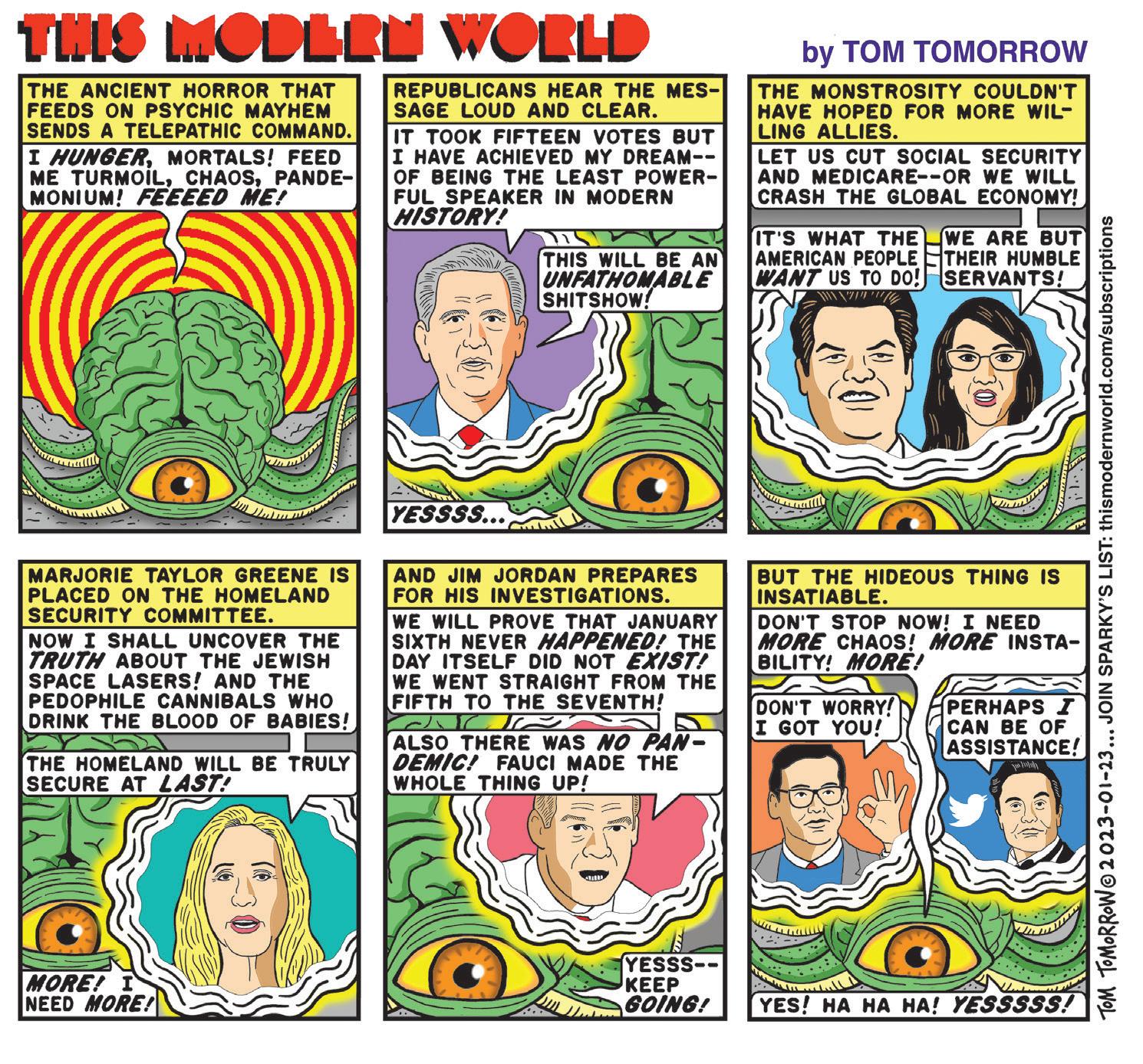 BY CONNOR DARYANI
BY CONNOR DARYANI
Vision Zero’s War on Cars 7 A new citizen committee tries to speed up transportation change in Nashville
 BY ELI MOTYCKA
BY ELI MOTYCKA
Hagerty Slams Voting Access, Questions McConnell in Rare Public Appearance ..... 8 Tennessee’s media-shy junior senator blamed expanded voting access for GOP losses and questioned party leadership after 2022 midterms
BY ELI MOTYCKA
Critics Dissatisfied With State’s Plan to Rebuild Nashville’s Broadway Viaduct 8 ‘How do we transition from this car-centric culture to accommodating the things that people want to see happen?’
BY CONNOR DARYANI
COVER STORY

Winter Arts Guide
Electric Boogaloo 11
Talking with Jeffrey Gibson about his upcoming exhibit at the Frist
BY LAURA HUTSON HUNTER
Visual Arts Poll 12

Nashville insiders on what they love and loathe about our city’s art scene
 BY LAURA HUTSON HUNTER
BY LAURA HUTSON HUNTER
COMPILED
Gimme Shelter 13 Our picks for the hottest gallery shows of the coldest season
BY JOE NOLAN
Triennial Confidential 14 We look inside the Tennessee Triennial with consulting curator María Magdalena Campos-Pons
BY LAURA HUTSON HUNTER
On Pointe 18
Nashville Ballet explores local stories with the world premiere of Anthology
BY AMY STUMPFL
27
CRITICS’ PICKS
Caitlin Rose, The Lost Boys, The Harlem Globetrotters, Alice and more
37
FOOD AND DRINK



The Cheese Stands Alone 37 Greys Fine Cheese and Entertaining wants to cross some items off your cheese bucket list
 BY HANNAH HERNER
BY HANNAH HERNER
Phila Awards Winners Announced ........ 38 Awards program recognizes ‘the people, groups and organizations using food and cooking virtuously’
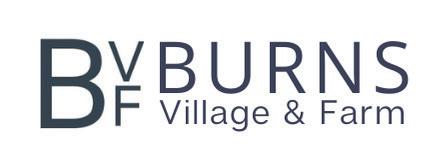

 BY CHRIS CHAMBERLAIN
BY CHRIS CHAMBERLAIN
Booze Hound: Planter Punch at Hubba
Hubba Tiki Tonk 38 East Nashville’s newest tiki bar comes with a twist
BY MARGARET LITTMAN
40
BOOKS
From the Other Side of the Woods
A young woman learns to fight for her allBlack adopted hometown in Moonrise Over New Jessup
BY EMILY CHOATE, CHAPTER16.ORG
41
MUSIC
Taking On Half the World 41 Samia turns the page with Honey
BY ELI MOTYCKA
Here Comes Trouble 42 Kenny Wayne Shepherd reflects on a quartercentury of Trouble Is…
BY RON WYNN
Ian Tyson, 1933-2022 ............................ 42
Looking back on the life of a Canadian country and folk giant and his work in Nashville
BY PETE FINNEY
BY ERICA CICCARONE
Just the Beginning 44
Talking with Shon Harmon and Jordan Harris about establishing H2 Hospitality on Buchanan Street
BY SEAN L. MALONEY
BY D. PATRICK RODGERS
BY STEPHEN TRAGESER
FILM
Live and Let Die ...................................... 46 Oliver Hermanus and Kazuo Ishiguro pay homage to Kurosawa with Living
BY NADINE SMITH Going Broke 47 Broker challenges us to be comfortable with moral ambiguity
BY ERICA CICCARONE
NEW YORK TIMES CROSSWORD
ON THE COVER: “Large Figure 1,” by Jeffrey Gibson
Photograph by Brian Barlow Photo courtesy of Jeffrey Gibson Studio
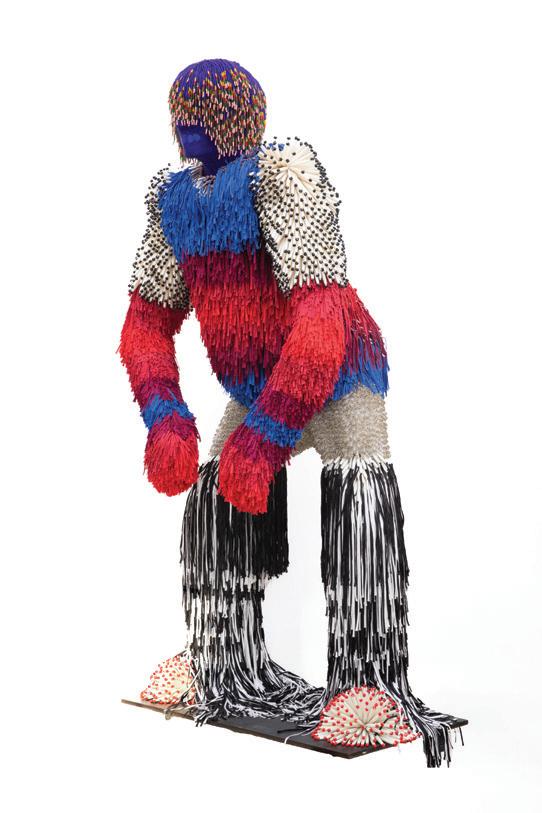
nashvillescene.com | JANUARY 26 – FEBRUARY 1, 2023 | NASHVILLE SCENE 3 917A Gallatin Pike S, Madison, TN PanaderiayPasteleriaLopez 615-669-8144 TacosyMariscosLindoMexico 615-865-2646 Call for take-out! Authentic Mexican Cuisine & Bakery...Side by Side!
A new community is forming on a beautiful farm with woodlands and a stream in Burns TN.
This cohousing neighborhood o ers private homes and a professionally managed farm.
Join an Information
a site visit, or give us a call at 615-480-2786.
Details are available on our
LIVE IN A SUSTAINABLE AGRIHOOD BURNSVILLAGEFARM.COM 6
•
•
•
Session, plan
•
website.
.................................... 7
11
............................................ 16 Meet your
Join the Club
reading goals with these local book clubs
Coming Attractions 18 Promising new releases and repertory screenings are headed to the Belcourt, with franchise installments and Cocaine Bear hitting megaplexes
The Spin 45 The Scene’s live-review column checks out Jack White at The Blue Room
46
49
50
MARKETPLACE
CONTENTS JANUARY 26, 2023
It’s hard to believe how quickly time flies. Just a few short years ago, with all of us believing our city was running smoothly, a new mayor was elected. Soon after celebrating his win, Mayor John Cooper was faced with just about every challenge imaginable. According to a December 2019 Forbes article written by Nashvillian Tim Pagliara, Mayor Cooper inherited a city that was nearly in receivership. “After the prior administration had awarded $167,000,000 in economic incentives,” Pagliara wrote, “the city could not balance the budget without selling assets like the Nashville Thermal Plant. Which, IMHO, is like selling your living room furniture to pay your electric bill. … State law mandates a balanced budget.”
When Cooper found himself in that position, he made the hard decision to announce a 34 percent increase in property taxes. While that decision was originally unpopular, a recent Tennessean column explains that Nashville still “has the lowest tax and fee burden per household of any of its peer cities, according to a 2020 Elliott Davis consulting firm financial analysis comparing Music City to Austin, Charlotte, Denver, Indianapolis, Jacksonville and Louisville.”
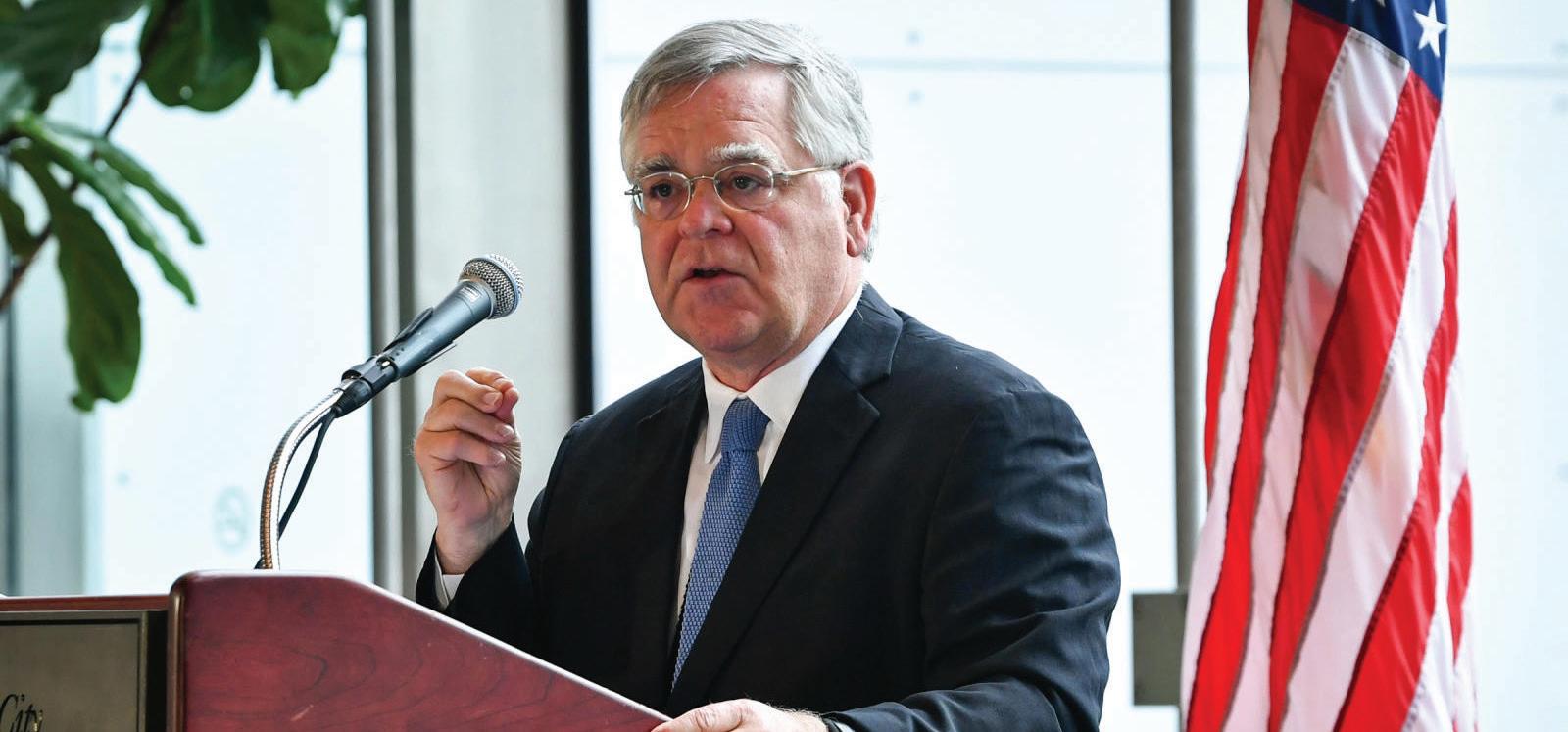

Then, Mayor Cooper was hit with repeated, difficult challenges. Tragedy struck our city in brutal back-to-back episodes. In March 2020, a deadly cluster of tornadoes swept through Middle Tennessee, leaving vast destruction and costing the lives of 25 people, including two here in Nashville. “It would go down as the longest tornado path for Middle Tennessee and second-longest by all accounts since the late 1800s,” reported Fox Weather. “In all, 25 people died in the twisters that night; hundreds more were injured. It’s the sixthcostliest tornado outbreak in U.S. history.”
Only two days after the tornadoes left massive devastation and grief in their paths, COVID-19 made its first appearance. Tennessee’s first reported case of the virus landed in Williamson County. We all know what happened from there. It swept through our nation and our city, taking lives and shutting everything down.
Then, Christmas Day 2020 saw the detonation of a bomb in an RV parked in downtown Nashville, which — though it thankfully took no lives aside from that of the bomber — impeded internet and phone service for many across the county. As Mayor Cooper surveyed the scene that

morning, he said, “It’s so shocking that on Christmas morning, this time of greatest hope, you have a bombing.” In addition to tornado recovery efforts and the ongoing pandemic, the mayor now had potential infrastructure problems to face. Other challenges in his first term have included issues with trash and recycling, ongoing problems with traffic, and downtown Broadway being overrun with partiers, making safety an issue for many.
But the mayor has also had his high points — and he is to be commended for them.
As The Tennessean notes, “Nashville’s budget is stable with the mayor allotting federal, state and local funds to items such as to address homelessness and to create a new economic incubation and innovation partnership at Fisk University named for the late entrepreneur Darrell Freeman.”

The mayor also addressed the recycling issues, announcing earlier this month that recycling services in Nashville’s urban services district are increasing from once to twice a month. The city has also hired its first night mayor “to streamline the relationship between nightlife industries, city services, and the desires of residents.”
I also include the building of a new Tennessee Titans stadium as a win for Mayor Cooper. Though some have questioned the wisdom of this deal, as I noted back in July, “When Nashville agreed to build a stadium for the NFL franchise, we as much as agreed to maintain it. … [We agreed] that a firstclass facility must be provided for the team. … To keep the current lease with the Titans, as taxpayers we would be paying tens of millions of dollars per year for stadium maintenance and improvements. … The primary funding source for the stadium will be the Titans and visitors to Nashville and the stadium campus.”
Mayor Cooper has gone through challenges and tragedies that most city or county administrators have never seen the likes of. How many, after all, have faced multiple tornadoes across 60 miles of their regional landscape, the local impact of a global pandemic and a downtown bomber in their first year, let alone first term? Mayor Cooper has weathered all the storms well while working to ensure that Nashvillians will always land on our feet. And from all observations, we have.
Bill Freeman
Bill Freeman is the owner of FW Publishing, the publishing company that produces the Nashville Scene, Nfocus, the Nashville Post and The News.
Music



Contributing Editors Erica Ciccarone, Jack Silverman


Staff Writers Kelsey Beyeler, Stephen Elliott, Hannah Herner, J.R. Lind, Eli Motycka, William Williams, KateLynn White
Contributing Writers Sadaf Ahsan, Radley Balko, Ashley Brantley, Maria Browning, Steve Cavendish, Chris Chamberlain, Lance Conzett, Connor Daryani, Steve Erickson, Nancy Floyd, Randy Fox, Adam Gold, Kashif Andrew Graham, Seth Graves, Kim Green, Steven Hale, Steve Haruch, Edd Hurt, Jennifer Justus, Christine Kreyling, Craig D. Lindsey, Margaret Littman, Brittney McKenna, Marissa R. Moss, Noel Murray, Joe Nolan, Betsy Phillips, John Pitcher, Margaret Renkl, Daryl Sanders, Megan Seling, Jason Shawhan, Michael Sicinski, Nadine Smith, Ashley Spurgeon, Amy Stumpfl, Kay West, Abby White, Andrea Williams, Ron Wynn, Charlie Zaillian Editorial Intern Hannah Cron Art Director Elizabeth Jones Photographers
Editorial Policy: The Nashville Scene covers news, art and entertainment. In our pages appear divergent views from across the community. Those views do not necessarily represent those of the publishers. Subscriptions: Subscriptions are available at $150 per year for 52 issues.

Subscriptions will be posted every Thursday and delivered by third-class mail in usually five to seven days. Please note: Due to the nature of third-class mail and postal regulations, any issue(s) could be delayed by as much as two or three weeks. There will be no refunds issued. Please allow four to six weeks for processing new subscriptions and address changes. Send your check or Visa/MC/AmEx number with expiration date to the above address.
In memory of Jim Ridley, editor 2009-2016
4 NASHVILLE SCENE | JANUARY 26 – FEBRUARY 1, 2023 | nashvillescene.com PET OF THE WEEK! TIME TO MEET RIVER: 9-month-old, 46-pound, RIVER is the quirkiest and attention seeking dog ever. Give this handsome boy a bone to chew on and lots of belly rubs and he will
your best friend forever.
super dog friendly,
play style
(Just gotta
sure to
the
River
loving affectionate
who will give him all the cuddles! Want to
you future BFF? Visit RIVER today at NHA! Call 615.352.1010 or visit nashvillehumane.org Located at 213 Oceola Ave., Nashville, TN 37209 Adopt. Bark. Meow. Microchip. Neuter. Spay. L & L M a r k e t | 3 8 2 0 C h a r l o t t e Av e n u e 6 1 5 - 9 4 2 - 5 5 8 3 | d a p h n e h o m e c o m Vintage East Nashville Antiques 3407 GALLATIN PIKE 615●649● 8851 12,000 SQUARE FEET OF VINTAGE COOLNESS
D. Patrick Rodgers Managing Editor Alejandro Ramirez Senior Editor Dana Kopp Franklin Arts Editor Laura Hutson Hunter
be
He is
and his
can be pretty rowdy, but he can be easily calmed down. Another great thing about River is that he is already potty trained.
make
take him out as soon as he wakes up in
morning)
really is just the best boy who deserves a
family
meet
Editor-in-Chief
and Listings Editor Stephen Trageser
Editor Kim Baldwin Associate Editor Cole Villena
Digital
Designers
Graphic Design
Production Coordinator
Festival Director
and Promotions Manager
Publisher
of Digital Advertising | Key Account Manager Michael
Senior Advertising Solutions
Sue
Angelina Castillo, Eric England, Matt Masters Graphic
Mary Louise Meadors, Tracey Starck
Intern James Harrison
Christie Passarello
Olivia Britton Marketing
Robin Fomusa
Mike Smith Director
Jezewski
Managers
Falls, Carla Mathis, Heather Cantrell Mullins, Jennifer Trsinar, Keith Wright
Sales
Advertising
Special
Chief
Corporate Creative Director
IT Director
Circulation
Distribution Director
Owner
Advertising Solutions Managers Teresa Birdsong, Richard Jacques, Deborah Laufer, Niki Tyree, Alissa Wetzel
Operations Manager Chelon Hill Hasty
Solutions Associates Jada Goggins, Audry Houle, Jack Stejskal
Projects Coordinator Susan Torregrossa President Mike Smith
Financial Officer Todd Patton
Elizabeth Jones
John Schaeffer
and
Gary Minnis For advertising information please contact: Mike Smith, msmith@nashvillescene.com or 615-844-9238 FW PUBLISHING LLC
Bill Freeman VOICE MEDIA GROUP National Advertising 1-888-278-9866 vmgadvertising.com ©2023, Nashville Scene 210 12th Ave. S., Ste. 100, Nashville, TN 37203. Phone: 615-244-7989.
The Nashville Scene is published weekly by FW Publishing LLC. The publication is free, one per reader. Removal of more than one paper from any distribution point constitutes theft, and violators are subject to prosecution. Back issues are available at our office. Email: All email addresses consist of the employee’s first initial and last name (no space between) followed by @nashvillescene.com; to reach contributing writers, email editor@nashvillescene.com.
MAYOR COOPER HAS WEATHERED NASHVILLE’S STORMS WELL, AND WORKED TO ENSURE NASHVILLIANS DO THE SAME
BILL FREEMAN
FROM
PHOTO
COURTESY OF METRO NASHVILLE
MAYOR JOHN COOPER



nashvillescene.com | JANUARY 26 – FEBRUARY 1, 2023 | NASHVILLE SCENE 5
NO ’PHALT OF OUR OWN
BY LENA MAZEL
Josh Rank has lived in the Rayon City neighborhood of Old Hickory for four years. Late last year, the Nashville-based construction company Jones Bros LLC applied for a permit to operate a hot-mix asphalt plant about a mile from his house.
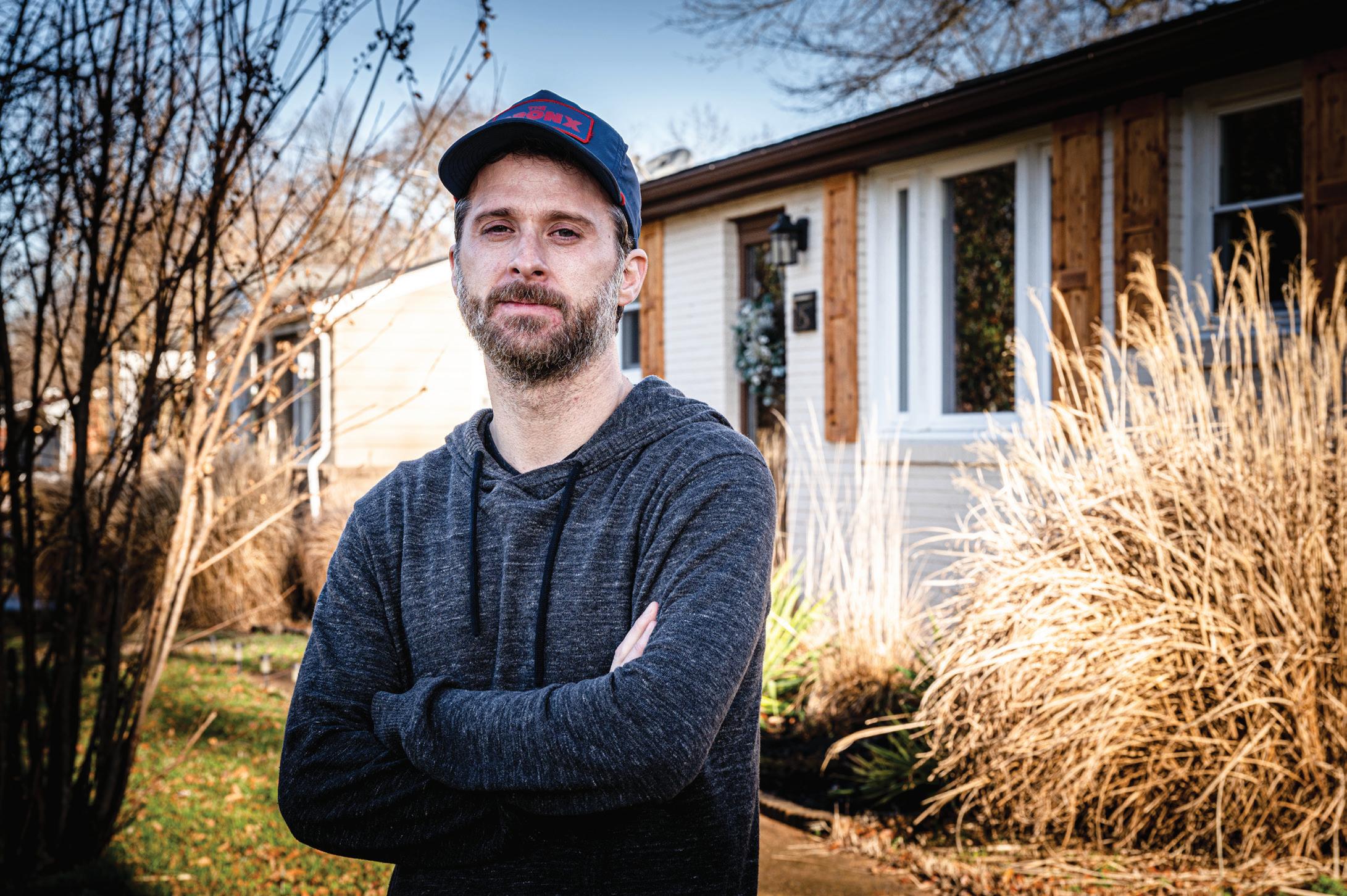
“An asphalt plant would ruin everything great about living in this area,” Rank says. “I love sitting outside. Our property is surrounded by trees. There’s barely any traffic in our neighborhood compared to the rest of Nashville. An asphalt plant would take the ability to enjoy the outdoors away from us.”
Rank is part of a group of citizens organizing in Old Hickory to block the plant. Residents hope to stop the permit by going through the Metro Public Health Department. They’ve sent numerous letters to John Finke, director of the department’s Air Pollution Control Division. “John Finke responded to us and said that the most comments he’d ever received on a project over his 25 years on the job had been 104, and we sent him almost 500,” says Rank.
Old Hickory has been the site of contentious debate over nearby industrial sites before. In 2017, neighbors complained about odors and potential health risks from the Hoover asphalt plant, which eventually closed. And in 2015, residents mobilized against a quarry close to Old Hickory Beach.
That quarry did end up in Old Hickory, but not before Metro Councilmember Larry Hagar — whose District 11 contains Old Hickory — passed legislation that he refers to as the “buffer bill.” The legislation
JOSH RANK
sets zoning restrictions for the operation of asphalt plants in the Nashville Metro area, including a rule that “no asphalt plant activity shall occur within 1,250 feet of a residential structure or within 2,000 feet of the property line of a park or community education facility.”
Hagar’s buffer bill became law in 2015, and he says it could block the development of the new asphalt plant because of its proximity to Old Hickory Beach Park. Currently, he’s working with lawyers to see whether the permit is in violation of the buffer bill, or whether the plant would be “grandfathered in” because of the previous asphalt plant at the same location.
If Jones Bros receives its permit, Hagar says the plant would be within 1,600 feet of residential property — close, but not quite
close enough to break the 1,250-foot barrier laid out in Hagar’s bill.
The asphalt plant’s proposed location is zoned industrial restrictive, which usually covers an array of indoor manufacturing uses. A company previously approached Hagar about building a recycling center on the site, designed to create roofing material from waste. “The problem with that is, you’re bringing loads of trash and waste to the area, and the way they recycle it, they only use about half of it,” Hagar says. “It’s a good idea, but we didn’t want to bring all that trash over there. I didn’t want that, and I know the people didn’t want that.” Hagar says the company ultimately decided to put the plant in Indiana.
“I told them that Old Hickory is kind of tired of people coming over there and
dumping on us,” he says.
Rank says that beyond the smell, residents worry about health risks and the impact on local wildlife. “There’s no good argument to put an asphalt plant in the middle of a community and next to an area used by families to hike, swim and enjoy the outdoors,” he says.

“Jones Bros is a massive company that does business in 12 states,” says Rank.
“They could easily open an asphalt plant far away from a neighborhood. They only chose this location because it would be much cheaper for them to start production, and they assumed the city would roll over and let them do whatever they want.”
Jones Bros LLC declined to comment on their plans for the plant.
6 NASHVILLE SCENE | JANUARY 26 – FEBRUARY 1, 2023 | nashvillescene.com
EMAIL EDITOR@NASHVILLESCENE.COM CITY LIMITS
Old Hickory residents organize against proposed asphalt plant
PHOTOS: ERIC ENGLAND
BILLS TO KEEP AN EYE ON IN THIS YEAR’S LEGISLATIVE SESSION
BY CONNOR DARYANI
The Tennessee General Assembly’s bill-filing deadlines are Jan. 31 for the state House and Feb. 2 for the Senate. Due to the popularity of caption bills, which are essentially nonspecific placeholder bills submitted before the deadline and later rewritten entirely, we likely won’t see some of this year’s most important legislation until later in the season. Even so, close to 400 bills have already been submitted in each chamber. Here are a few that we’re keeping an eye on.
SB1/HB1
Republican legislators have leaned heavily into anti-transgender rhetoric all over the nation, often in attempts to draw attention away from economic policy struggles. State Sen. Jack Johnson (R-Franklin) and House Majority Leader William Lamberth (R-Portland) wasted no time entering the fray. The first bills introduced this season are companion legislation taking aim at children’s rights to gender-affirming care — a form of health care proven to be extremely important in regard to the mental health and safety of children experiencing gender dysphoria.
SB3/HB9
A culture war wouldn’t be a culture war without attacks on drag performance. This bill from Sen. Johnson and Rep. Chris Todd (R-Jackson) broadly bans drag in places where children could be present. The lack of specificity in this legislation makes it hard to determine what exactly its limits are and where the line is drawn between “protecting children” and banning people from expressing themselves.
SB326
Introduced by Sen. Raumesh Akbari (DMemphis), this bill aims to amend Tennessee laws surrounding absentee ballots by deleting two provisions that make the process more difficult to navigate, especially for students and people working full-time jobs.
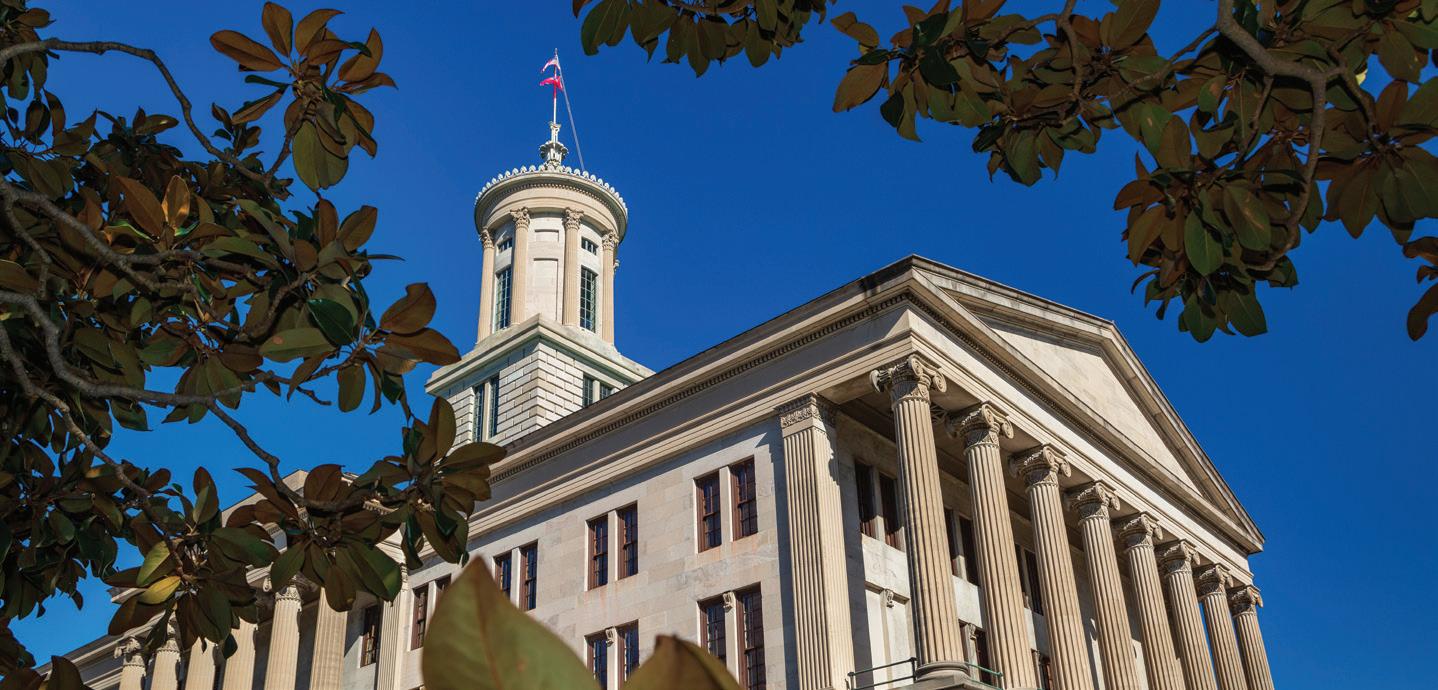
SB286/HB302
This bill, introduced by newly elected Sen. Charlene Oliver (D-Nashville) and Rep. Justin Jones (D-Nashville), aims to require lobbyists to wear badges identifying them as lobbyists and displaying some other key information while performing the act of lobbying the Tennessee General Assembly. Considering the number of politicians on both sides of the aisle who are chummy with lobbyists, this bill might not make it far, but it’s an attempt at providing more transparency to Tennessee voters.
SB297/HB327
Filed by the always consistent duo of Lamberth and Johnson, this bill is a funky piece of legislation that would further narrow the already tiny divide between the state government and the Tennessee Office of Faith-Based and Community Initiatives. The office was established in 2019 and according to its website is a “self-funded, independent, nonprofit organization.” It
seems like these bills are aiming to make it a government-funded, government-operated, for-profit organization, blurring the lines between church and state and having some fun with the establishment clause.
SB87/HB48
With 40 members, Nashville’s Metro Council stands as one of the largest city councils in the country. (For reference, New York is one of two cities nationwide with a larger council, and for a city with a population of nearly 8.5 million, 50 members makes a bit more sense.) This bill from Lamberth and Sen. Bo Watson (R-Hixson) would cap the number of council members any metro government in Tennessee can have at 20. Many are speculating that this could be retaliation against the progressively inclined council for blocking the 2024 Republican National Convention from taking place in Nashville.
RESOLUTIONS
HJR45
Rep. Brian Richey (R-Maryville) has introduced a joint resolution to amend the Tennessee Constitution, instituting 16-year term limits for all local and state elected officials — except for the governor, whose office would remain limited at two consecutive four-year terms.
HJR13
Elections for judicial and other civil officers currently take place on the first Thursday in August, and tend to have lower turnouts compared to general elections. This joint resolution from Lamberth would start the process of moving these elections to the fall, on the general Election Day, theoretically increasing voter turnout for these elections. ■
VISION ZERO’S WAR ON CARS
A new citizen committee tries to speed up transportation change in Nashville
BY ELI MOTYCKA
While Nashville still has a 40-person council, most of those legislators — the body’s 35 hyper-local district councilmembers — will tell you that city politics boils down to zoning and speed bumps. The first issue is a tangle of interests that can pit developers against residents, neighbors against neighbors, locals against transplants, homeowners against renters, housed against unhoused. The second is much simpler: Everyone wants to slow down cars, and the city knows how to do it.
A 15-member task force will convene for the first time on Jan. 30 to “coordinate with Metro staff” on the city’s implementation of Vision Zero, a national campaign to eliminate roadway deaths. Nashville adopted the 2022-2026 Vision Zero plan in August. Its central goal — no cyclist or pedestrian deaths by 2050 — drew criticism from councilmembers for lacking urgency and seriousness. That timeline looks even
worse after 2022 ended with 49 pedestrian deaths in Nashville — the city’s deadliest year on record. Vision Zero’s main work consists of planning, funding and implementing roadway changes that calm traffic and expand right-of-way for pedestrians and cyclists. The group, accepted earlier this month after an application process, is a slice of Nashville that hopes to see how fast the city can slow down cars.
“I applied because I’m tired of seeing people dying on our streets,” Katherine McDonell tells the Scene McDonell — who commutes by e-bike daily from East Nashville to Vanderbilt, dropping her kids off for day care along the way — will serve on the task force. “Forty-nine people died last year just for existing on our streets. Trying to get somewhere without a car shouldn’t be a death sentence. I’m tired of seeing Nashville make plan after plan and doing nothing to implement them. We have designs in place, we have funding in place. We need to step up and start making changes on our streets.” McDonell’s husband Daniel McDonell is running for Metro Council on a platform of pedestrian and transit improvements in East Nashville’s District 6.
The cycling community has long anchored multimodal access advocacy in Nashville and a key constituency of the city’s most recognizable mobility nonprofit, Walk Bike Nashville. The Music City Dope Pedalers, described by WPLN as “good vibes on two wheels,” charter popular weekly group rides in Germantown. Solidarity has developed among Nashville cyclists, eager to proclaim the health benefits (both mental and physical),
community, convenience, accessibility and financial benefits of transportation by bicycle.
When a car hit Jabari Patterson near 10th and Shelby in East Nashville, a group of his friends formed We Walk Nashville with the explicit goal of pushing the city toward more comprehensive pedestrian safety measures more quickly. Patterson was hit while walking a route on Vision Zero’s “high-injury network,” where cars are responsible for more frequent and more severe collisions with pedestrians and cyclists due to high speeds and increased traffic. Patterson was hospitalized with near-fatal injuries.
“We wanted to form something that speaks to the people who walk around Nashville,” Cathy Carrillo, a co-founder of We Walk, tells the Scene. “Money needs to go to places where infrastructure is lacking. We’re talking about a whole transformation of Madison and Antioch, particularly along high-injury networks that are already in predominantly marginalized communities.”
Shandira Edgecombe, another task force member, drove a WeGo bus for seven years in Nashville before moving to the Tennessee Department of Transportation, where she works now. Edgecombe hopes to bring firsthand experience earned from hours on the road observing drivers and transit networks.
“There are a lot of distracted drivers,” says Edgecombe. “People whose primary focus is inside the vehicle rather than out.” She identifies as an “all the above” mobility user: a walker, driver, roller-skater, transit user. “Information gathered at the lower levels might not be filtering up to the decision makers,” she says.
“I’m hoping to bridge those contact gaps to understand the perspectives of all people on the road.”
The city’s work on Vision Zero includes lots of overlap with TDOT, which oversees many of the major routes on the city’s high-injury network, like Murfreesboro Road and Nolensville Pike. Plans for the Broadway Viaduct redesign, released by TDOT on Jan. 19, have drawn ire from transit advocates for its lack of consideration for pedestrians and cyclists. Koby Langner, a bicycle commuter who will serve on the Vision Zero task force, slammed TDOT on Twitter for moving in the wrong direction. Councilmembers Russ Bradford and Sean Parker piled on.
Task force members will join the growing base of citizen planners trying to wrest greater control of Nashville’s urban infrastructure. With a long list of projects that have been identified, designed and funded, task force members will look to the executive branch to implement them. It’s an opportunity for Mayor John Cooper, who’s eyeing reelection, and who ran on improving Nashville’s neighborhoods but has gained more of a reputation for brokering big real estate deals like a new Titans stadium and a revamped NASCAR track. Cooper has a habit of forming task forces that meet for a few months before issuing recommendations that live on in three-ring binders.
Enough Vision Zero members recognize their platform, lack political considerations and feel the urgency of car danger that this time, clear and abundant directives from the committee could be difficult to ignore.
nashvillescene.com | JANUARY 26 – FEBRUARY 1, 2023 | NASHVILLE SCENE 7
EMAIL EDITOR@NASHVILLESCENE.COM CITY LIMITS
On the 2023 agenda are government transparency and more culture-war battles
PHOTO: HAMILTON MATTHEW MASTERS
HAGERTY SLAMS VOTING ACCESS, QUESTIONS McCONNELL IN RARE PUBLIC APPEARANCE
BY ELI MOTYCKA
U.S. Sen. Bill Hagerty was the featured guest at January’s “1st Tuesday” lunch, a monthly gathering for Middle Tennessee Republicans at Brentwood’s Ludlow & Prime. He appeared on Jan. 18 — the month’s third Wednesday — to field questions about restricting voting access, disappointing GOP election results and the crowd’s eroding faith in Senate Minority Leader Mitch McConnell.
Several members of the crowd criticized McConnell for mishandling the 2022 midterms, which were expected to bring big Senate wins for the GOP. Republican losses in Georgia, Arizona and Nevada kept the chamber in Democrats’ hands, a result of being out-organized, expanded voting access and poor stewardship of the party’s financial resources, said Hagerty.
“In some of those races, people had been voting since August,” Hagerty told the room. Nevada and Arizona both opened
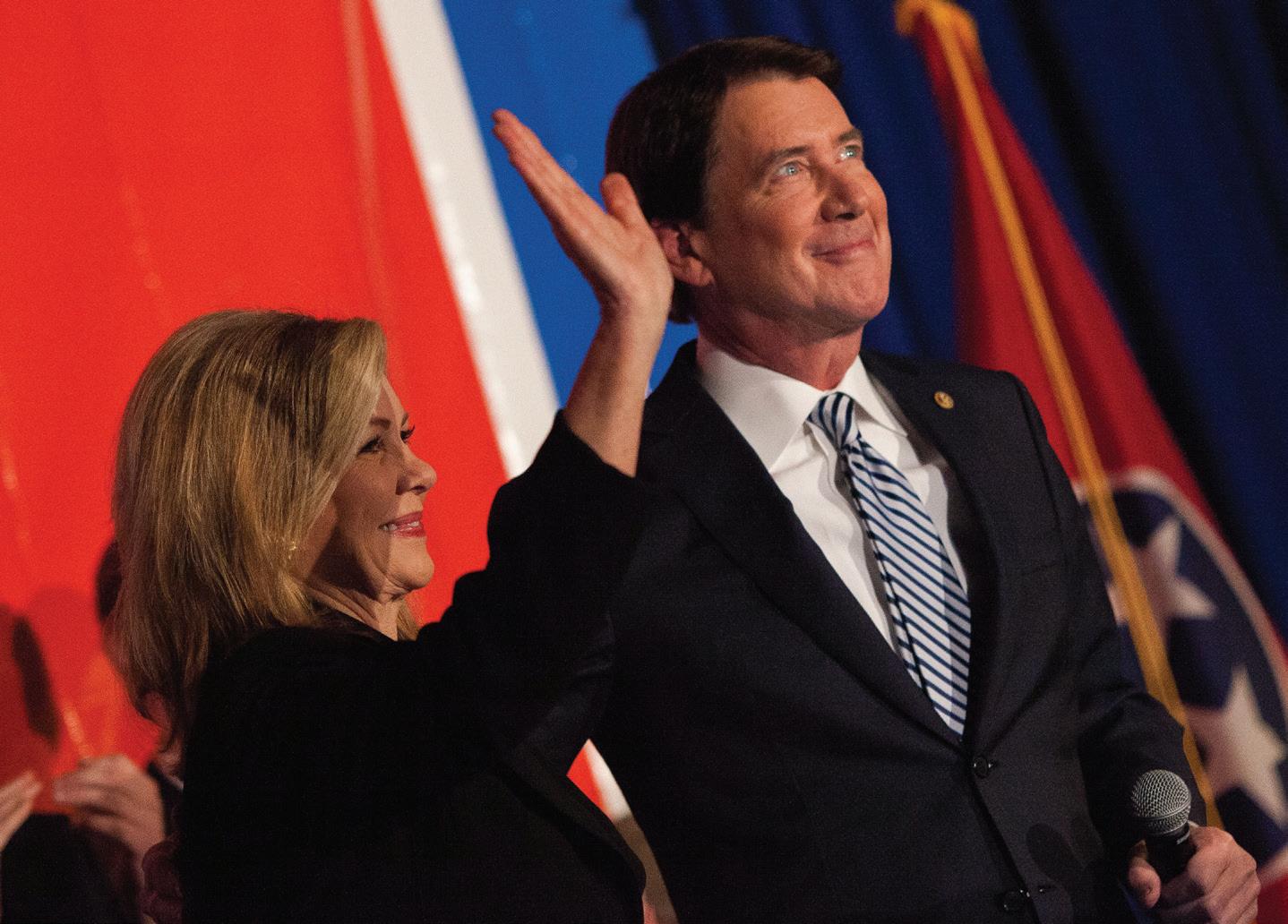
CRITICS DISSATISFIED WITH STATE’S PLAN TO REBUILD NASHVILLE’S BROADWAY VIADUCT
early voting for the Nov. 8 election in October. “In Nevada, we saw Adam Laxalt’s lead diminish. By Friday, they turned the election around and took it from us. Mail-in ballots and ballot harvesting is the cornerstone of what Democrats have been trying to execute across the country. They’ve done it on a state-by-state basis. We’ve got to be ready in 2024.”
Hagerty praised gerrymandering and Tennessee’s restrictive voting laws, saying that Democrats around the country used the pandemic to make “devastating” changes to voting rules in other states. When asked about 2024, Hagerty said he was already working on legal infrastructure that could challenge unwelcome election results.
“We’ve got to be ready in 2024,” said Hagerty. “We should fight legally every chance we get and be ready to play by the set of rules that allows us to win.”
Multiple audience members asked Hagerty about party leadership, specifically McConnell, who they blamed for mishan-
dling the midterm elections.
“What excuse does Mitch McConnell have, and how soon are we going to get rid of him?” asked one attendee, prompting applause from the crowd.
“I don’t think there’s anybody more frustrated than me with the results of the 2022 elections,” said Hagerty. “We’ve got to focus on operations. Mitch McConnell and the National Republican Committee raised a tremendous amount of money, but not as much as the Democrats. Where did it go? We need to be on the ground putting a team together that can actually help us win.”
Another audience member said McConnell would’ve been better off throwing GOP
fundraising dollars into a hole. Hagerty said that he “couldn’t agree more.”
Metro Councilmembers Jonathan Hall and Robert Swope also appeared at the event to advocate for current legislation that would halve Nashville’s Metro Council.
The bill, backed by state House Majority Leader William Lamberth, is seen as retaliation for the city’s opposition to hosting the Republican National Convention. Swope also introduced Hagerty and moderated the senator’s Q&A.
“Write, text, send a homing pigeon or a sheepdog to your legislators to vote yes for this,” Swope told the room. “We’re hoping this passes in the next 30 days.” ■
dramatic decrease in traffic over the current Broadway Viaduct, nearly dropping to the threshold of where the Federal Highway Administration typically recommends a road diet. A road diet in its simplest form is the repurposing of road lanes to better suit multimodal transit options, such as bike lanes or bus rapid transit lanes.
Gaston says that at the very least the CDC would like to see bike lanes implemented on the viaduct, but that taking further steps to make the structure more pedestrian-friendly and aesthetically pleasing would be welcomed. He explains that while the planters are a nice touch, they are the bare minimum in providing pedestrians with a safe experience.
BY CONNOR DARYANI
Industry experts, activists and Metro councilmembers alike have noticed that a new plan to replace the Broadway Viaduct doesn’t look new at all.

“What design? It’s the same road with a few planters thrown down,” says David Kleinfelter, founder of Walk Bike Nashville, an activism organization working to make Nashville safer for pedestrians and bicyclists.
The current Broadway Viaduct opened in 1948 and is nearing the end of its lifespan. But rather than plan to replace it with a more modern structure
aligning with an increasingly popular movement away from car-centric transportation, the Tennessee Department of Transportation last week released final renderings of a design extremely reminiscent of the very structure they plan to demolish.
“This is not Nashville’s design for this bridge, right?” District 19 Councilmember Freddie O’Connell tells the Scene. “This is being designed by state engineers, and they have so far rejected most of the feedback not just from myself as the representative of the district, but also some of the feedback from our design and architecture community, all of which are bringing phenomenal projects online on both sides of that bridge.”
Kleinfelter and O’Connell aren’t the only ones with objections. The Civic Design Center is a nonprofit organization that works to improve communities “through engagement, education, connection and
design.” Since the release of the viaduct design, many CDC members have been vocal about the ways it could be improved to better suit an evolving city.
“You have to have a philosophical conversation about, ‘OK, are we continuing down the pathway of just sticking with the same amount of infrastructure for cars?’ ” says Civic Design Center CEO Gary Gaston. “Or as the city evolves, and we have more people walking and biking and taking scooters and other forms of transportation, do we have to make some decisions that you can’t fit everything? How do we transition from this car-centric culture to accommodating the things that people want to see happen?”
The new viaduct will be taking up the same space as the current one, so in order to add space for other forms of transit, Gaston explains that the number of lanes devoted to automobiles would need to decrease.
Data from the past five years has shown a
Last year Nashville committed to the Vision Zero Plan. As the city grows and our dependence on cars for transportation remains relatively stagnant, automobile-related deaths and injuries have crept up year by year, with 2022 being the deadliest year for pedestrians in Nashville.
“West End is identified as a dangerous corridor,” says O’Connell, citing poor infrastructure as the main reason for the unpleasant and dangerous pedestrian experience. “This bridge design is not going to do anything to increase pedestrian safety, especially with three travel lanes in both directions.”
This all comes as Gov. Bill Lee begins his push for the Transportation Modernization Act, which is referenced in TDOT’s press release for the new viaduct, and puts an emphasis on expanding the number of lanes on state highways.
Preliminary work on the structure is underway, and demolition will begin in February. A full shutdown of the viaduct will take place for eight weeks during the summer as they finish building.
8 NASHVILLE SCENE | JANUARY 26 – FEBRUARY 1, 2023 | nashvillescene.com
‘How do we transition from this car-centric culture to accommodating the things that people want to see happen?’
CITY LIMITS
EMAIL EDITOR@NASHVILLESCENE.COM
Tennessee’s media-shy junior senator blamed expanded voting access for GOP losses and questioned party leadership after 2022 midterms
PHOTO: HAMILTON MATTHEW MASTERS
COURTESY OF TDOT, GRESHAM SMITH
U.S. SENS. MARSHA BLACKBURN AND BILL HAGERTY ON ELECTION NIGHT 2020
RENDERING OF THE FUTURE BROADWAY VIADUCT









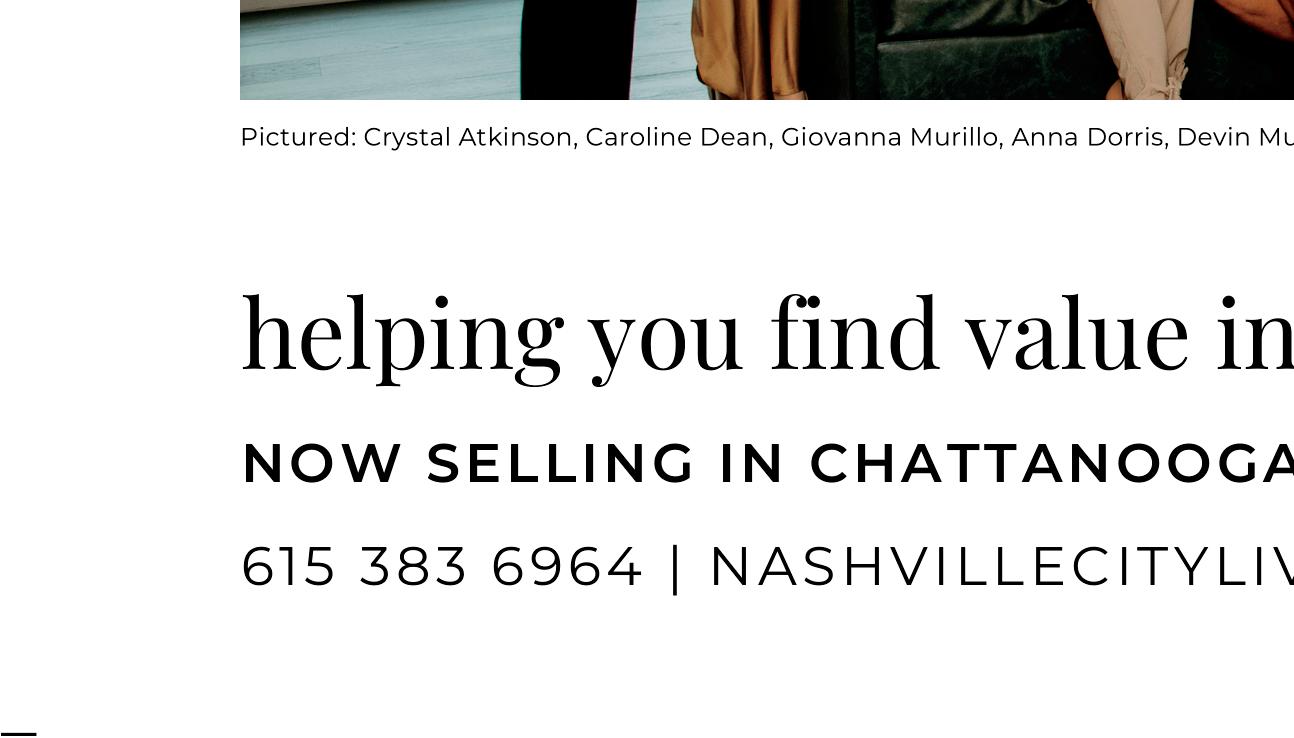








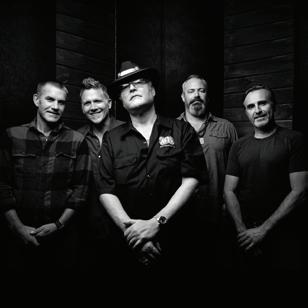
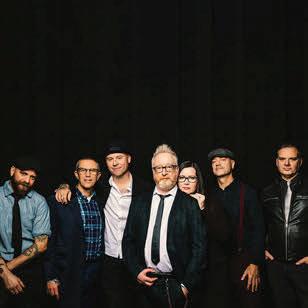


10 NASHVILLE SCENE | JANUARY 26 – FEBRUARY 1, 2023 | nashvillescene.com NOVEMBER 17 STEPHEN SANCHEZ ON SALE FRIDAY AT 10 AM AUGUST 19 KANSAS ON SALE FRIDAY AT 10 AM MAY 13 JOSH RITTER AND THE ROYAL CITY BAND ON SALE FRIDAY AT 10 AM JUNE 30 TREY KENNEDY ON SALE FRIDAY AT 10 AM APRIL 30 BLUES TRAVELER ON SALE FRIDAY AT 10 AM FEBRUARY 8 FLOGGING MOLLY WITH ANTI-FLAG AND SKINNY LISTER JUNE 22-JULY 27 SPRINGER MOUNTAIN FARMS BLUEGRASS NIGHTS AT THE RYMAN WITH SIERRA HULL, THE JERRY DOUGLAS BAND, PETER ROWAN, SAM BUSH, RHONDA VINCENT & THE RAGE, DAILEY & VINCENT AND RICKY SKAGGS & KENTUCKY THUNDER
WINTER ARTS GUIDE
In our annual Winter Arts Guide, we talk with Jeffrey Gibson about his upcoming exhibition at the Frist, and ask some of the city’s art insiders what events they’re most looking forward to. Plus, our critics highlight the best art, theater, dance, film and literary events of the season.
ELECTRIC BOOGALOO
BY LAURA HUTSON HUNTER
ON FEB. 3, the Frist will open Jeffrey Gibson: The Body Electric, an expansive exhibition from the contemporary artist and MacArthur Fellow whose work is in collections from the Whitney Museum of American Art to the Smithsonian Institution. Gibson draws on his background — both as a Choctaw-Cherokee and a child of the 1970s — to inform his art-making practice, which is both playful and profound, vibrant and extraordinarily detailed. The Scene spoke with Gibson about the show’s title, his ideas about identity and the site-specific mural he’s planned for the Frist walls.
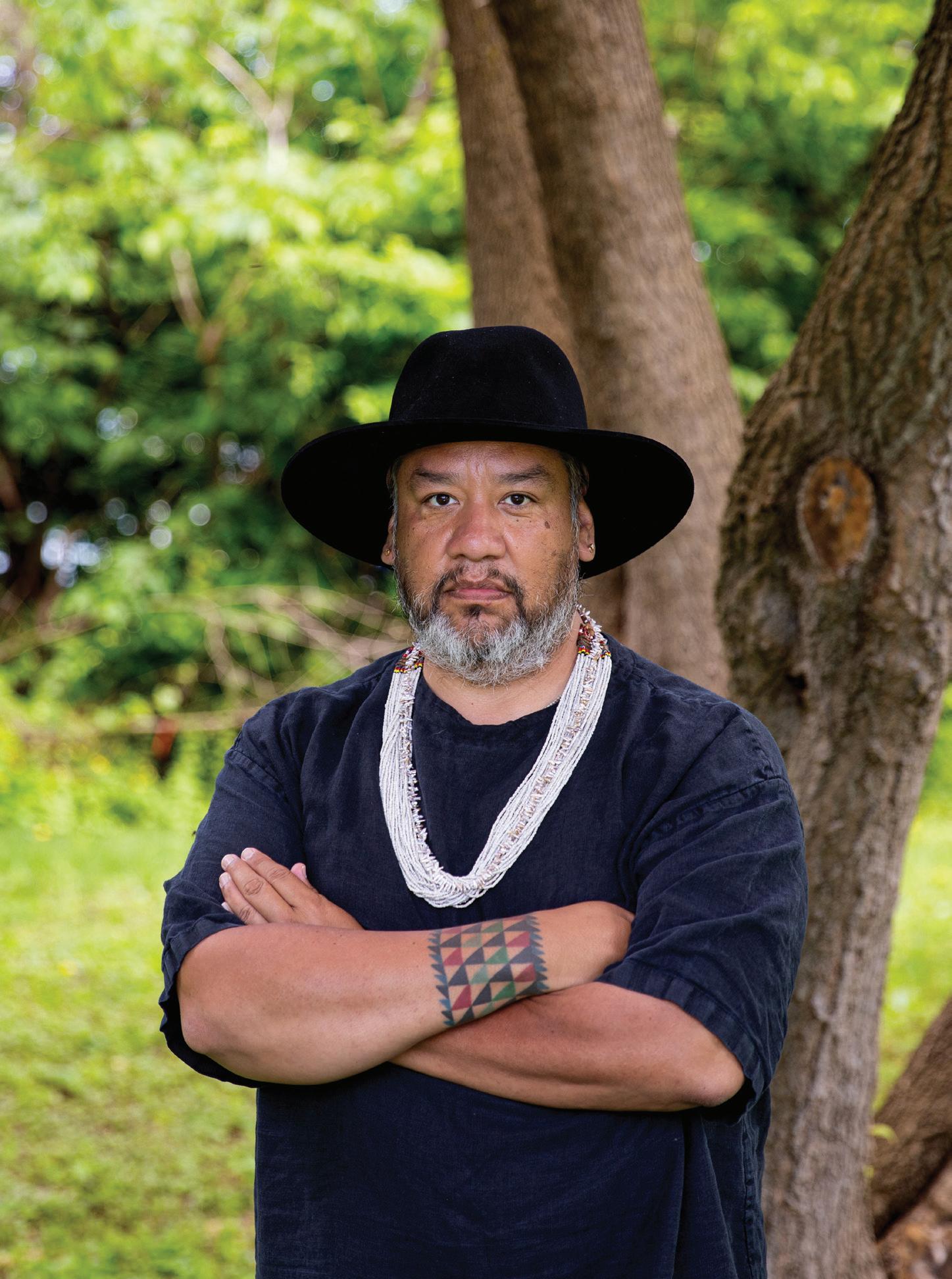
The exhibition is called The Body Electric, which is of course a phrase from Walt Whitman’s Leaves of Grass, but it also brings to mind the movie Fame It’s such a great synthesis of associations — New York and queer history and transcendentalism. Can you talk about the inspiration you took from either Whitman or Fame or a combination of the two? To be honest, I don’t think Whitman was really that much in my mind when I came up with the title. I turned 50 recently, and I had the realization that I’d been doing this for a while now. And I am very much a pop-cultural baby — that is where most of my interest lies, at least its beginning point. So I think a lot of it’s influenced by these past few years where, as a country and politically, it’s felt so divisive. I guess I just thought we would be in a different
place, based on the times I grew up in. I was thinking about my childhood and I ended up watching Fame. It took me back to being a kid — realizing that if I wanted to be an artist, I had to go to New York, because that’s where I’ll be accepted and have freedom and support and community. So I just started listening to that song [“I Sing the Body Electric”], and I realized that it could be seen as kind of corny, but I also am always advocating for taking seriously the things that we might otherwise dismiss.
It’s interesting that you grew up thinking you needed to be in New York to be an artist, but it seems like your practice has been able to take off since you moved your studio out of New York in 2012. I’ve seen a lot of artists who’ve left their New York studios, and feel extremely trepidatious about making that move, but then they begin making work in a larger studio space, and are no longer tethered to that tradition — New York art history, European art history. I’m interested to hear your thoughts about how that move has changed your practice. I think I’ve been pretty public in the past about having moments when I’ve considered walking away from pursuing a career as an artist. After the last economic crash and how it impacted the art world, my husband [Rune Olsen], who is also an artist, and I had nothing going on for a few years. We ended up traveling. I lived in San Francisco and then France, and I was teaching in an art school on the west coast of France. I don’t know if we knew it at the time, but it was kind of a realization — I don’t think I want to live
nashvillescene.com | JANUARY 26 – FEBRUARY 1, 2023 | NASHVILLE SCENE 11
We talk to local artists and take a look at the season’s best art and theater events, book clubs, films and more
Talking with Jeffrey Gibson about his upcoming exhibit at the Frist
JEFFREY GIBSON: THE BODY ELECTRIC FEB. 3-APRIL 23 AT THE FRIST
PHOTO: BRIAN BARLOW
in a city where there’s so much choice and so few boundaries in certain ways. But there are also so many boundaries, mostly to do with financial costs of living there. I just realized that my brain was beginning to think about larger things in interesting ways. Even the conversation that can happen in New York among artists, I find can be so focused on the market and exhibitions and names. I just felt like, you know, I think it might be holding me back to have all these voices in my head.
I knew that I wanted a family, and I knew that I was ready to put down roots someplace and think about the future of who I wanted to be as an artist, and I just needed to quieten down all the voices that exist in the art world for artists. ... And this studio building [a former schoolhouse] certainly never would have happened in the city. It’s a huge shift in the context that I work in, and that has certainly found its way into the way that I think and work, in a positive way.
While you identify as a Choctaw-Cherokee artist, which is something that I’m sure you’re proud of, you’ve said that, because understanding of the Native aesthetic is so limited, it creates a fetishization for you to perform to and for people to respond to. I think that’s smart and good for people to be aware of — that you can be proud of your identity and also not want to be marginalized for it. I’ve had criticisms from all sides — people have said, “Why do you identify as a Native American artist? Isn’t that pigeonholing you?” And I feel like that comment is very much loaded with an acknowledgement that to claim your identity as being Native is kind of seen as less than not claiming a specific identity. And I think that also, we still refer to people that way. There are female artists, Jewish artists, Black artists. So if that’s where we’re at and I don’t claim this, then we don’t exist in that realm. I feel like I know that my hope in the future is that we will not necessarily only describe ourselves by our cultural backgrounds or by our skin color, but that’s where we’re at culturally.
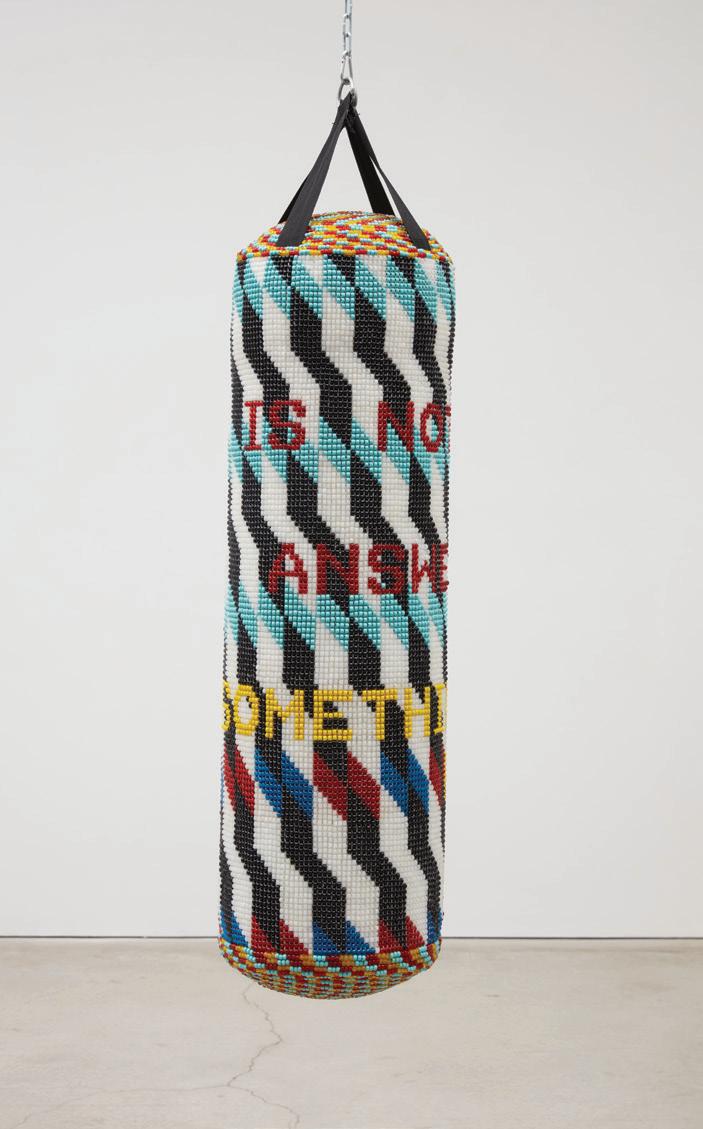

One of the aspects of the exhibit is a site-specific mural. What are your plans for that? I did the first wall painting or mural in 2016, and I don’t really remember how I arrived at it, but I think for a painter, there’s something thrilling about doing something that you know is not going to last forever. I had come back from the Sol LeWitt installation at MASS MoCA, and I spent a lot of time thinking about how great it was, how these kinds of wall-based pieces worked, and how they play around with ownership. That’s how it started. And there’s a lot more to talk about how the design came about, thinking about color, thinking about how the kind of elongated triangle shapes, layered up, could feel like landscape. So I get to think about things like horizon lines and sky and time and light. And the title [“THE LAND IS SPEAKING | ARE YOU LISTENING”] — that phrase is something I wrote.
It’s interesting that you started these in 2016, which was a time a lot of people were thinking about a political shift and emotional shift in America. And to go to the walls, the mural’s history as protest art, to me that seems germane, even if it wasn’t top-of-mind. It’s funny that you say that. I’m actually working on a larger project right now, and the murals have become a very significant part of it. I was thinking about all the murals that had happened in Indian boarding schools across the country that many people are unaware of, because those buildings were not valued, and many of them were demolished and they weren’t photographed. At the Santa Fe Indian School there were lots of them, and that building was torn down in the mid-2010s, and I remember there was no public discussion before it was demolished. It just happened one day. And you could see in the rubble the painted murals. So this is the first time that I’m thinking about it in the continuation of this history of murals made by Native people. Looking at everything from protest posters and pop culture — buttons and patches and stickers that people collect — all of that finds its way into the work. ■
VISUAL ARTS POLL
RESPONDENTS:
XPayne: visual artist
Andrea Zieher: gallery owner at ZieherSmith

Daniel Jones: manager of artistic programming at OZ Arts and artistic director at Kindling Arts Festival
Clarence Edwards: gallery owner at Cë Gallery and Cëcret by Cë Gallery, director at Foxy Brown Live
WHAT WAS THE BEST WORK OF ART YOU SAW (LOCALLY) IN 2022?
I went to an event hosted by Liberated Grounds in late December, and there was a vocal performance by Angel Adams accompanied by ballerinas that moved me deeply. She literally sang one word, and still told an entire story. The intimacy of the event added to its power. —XPAYNE
Raheleh Filsoofi’s "Bite" video and accompanying ceramic at Unrequited Leisure. I have long been a fan of this Iranian American artist and Vanderbilt professor, but I cannot say enough about her profound series and its timely and timeless implications. I walked into Unrequited Leisure's intimate space and was blown away.
—ANDREA ZIEHER
For a couple hot nights in mid-May, the courtyard at Centennial Art Center was lit up with fiery choreography from Asia Pyron and her company PYDANCE. Her work POOL was inspired by the incredibly complicated history of that exact spot — it was once a formal public swimming pool that was shut down during the city's integration as prejudiced white folks refused to share the waters. Pyron took that energy and fused it into her Nashville choreographic debut, which she performed alongside the dazzling talents of Lenin Fernandez, Becca Hoback, Aurora Jenssen and Joi Ware. The piece was a damn marathon — at some point, I was almost concerned for the performers dancing full-out in the heat — and it showed us that a new voice has arrived in Nashville's dance world, one that will no doubt have a lot to share in future years. —DANIEL JONES
WHAT DO YOU THINK NASHVILLE’S ART SCENE NEEDS?
We are desperate for a strong investment from the city that supports the performing and visual arts, and not just music. It would make a world of difference if the Convention &
12 NASHVILLE SCENE | JANUARY 26 – FEBRUARY 1, 2023 | nashvillescene.com
Nashville insiders on what they love and loathe about our city’s art scene
COMPILED BY LAURA HUTSON HUNTER
“RED MOON, DESERT SKY, AND RED SUNSET,” JEFFREY GIBSON
BECAUSE WE
BE,”
IS NOT THE ANSWER,” JEFFREY GIBSON PHOTO: SIKKEMA JENKINS & CO. PHOTO: MAX YAWNEY PHOTO: SHAYLA BLATCHFORD
“BETTER
CAN
JEFFREY GIBSON “WAR
Visitors Corp treated the arts like an essential part of the fabric of the city, if Metro’s budget increased the small sliver of the pie given to support local artists to a figure that was more on par with similar markets like Austin or Charlotte, and if the press gave more coverage to the arts (thankfully something we have not had to fight for at the Scene). Nashville’s artists are making important work that intrinsically enhances the quality of life in the city. They deserve more support from public resources. —DANIEL JONES
I think group shows should be precursors to solo shows. I would also like to see galleries owned by white curators make an effort to add Black artists to their roster, and not just during February. It's about equality of opportunity. —XPAYNE
I would like to experience more of today's pop-culture art — like a massive Kaws sculpture in the middle of Centennial Park or a Banksy tag on the Frist Museum building. I also think Nashville needs more provocative performance art.
—CLARENCE EDWARDS
For the public to understand that art galleries need daily visitors. I've heard many people imply that missing a gallery opening means missing the show completely and/or that they can't visit a show because they don't intend to buy something. Art exhibitions aren't onetime events like a music performance; shows run for weeks. Galleries and artists work very hard to mount shows, and they want people to see them. When our gallery was in New York, we had thousands of visitors a month, 99 percent of whom would never buy a thing, and we absolutely thrived on the energy those viewers brought when they walked in the door.
—ANDREA
ZIEHER
WHAT ARE YOU MOST EXCITED ABOUT SEEING IN 2023?
The upcoming exhibit of Nigerian-Belgian visual artist Otobong Nkanga at the Frist. She explores connections between landscapes, natural resources and the body. —DANIEL JONES

I am excited to see artworks by local artists installed in new businesses coming to the city. —CLARENCE EDWARDS
I'm just looking forward to seeing what the creative community has to say in 2023. Nashville in a sense is a new city, and I look to fellow artists' adaptations as a source of inspiration. —XPAYNE
Traversing the state this spring to take in the collective exhibitions of the Tennessee Triennial, overseen by artist, curator, Vandy professor and force of nature Maria Magdalena Campos-Pons. And the upcoming Frist exhibition Multiplicity: Blackness in Contemporary American Collage, most especially the incredible work of Memphis native (and now major art star) Derek Fordjour.
—ANDREA ZIEHER
GIMME SHELTER
BY JOE NOLAN
TEMPTER
Through March 31 at Bobby Hotel

If the winter blues start getting you down in the next few months, treat yourself to a stroll through the new art garden exhibition in Tinney Contemporary’s The Collection at Bobby program. Tempter is a flower-themed art exhibit, presenting a bouquet of contemporary landscape works. It’s a mindful display about the beauty and fragility of the natural world, and it’s a show about temptation, attrac-
tion and sex. It’s also an exhibit that highlights, compares and contrasts the styles of individual artists as they each offer their own unique takes on one of art’s most traditional subjects. Tempter boasts works from a national roster of artists including: David Onri Anderson, Reed Anderson, Sophia Belkin, Tiffany Calvert, Cherie Benner Davis, Courtney Egan, Lanie Gannon, Leah Guadagnoli, Eric Hibit, Alvaro Ilizarbe, John Paul Kesling, Sky Kim, Cristina Molina, Aliza Morell, Benjy Russell, Madiha Siraj, Ellen Weider, Herb Williams and Leif Zikade Tempter runs through April at Bobby Hotel.
BACK TO THE SOUTH SIDE
Feb.
4-26 at Coop
Artist Jacob Lawrence’s The Migration Series is a narrative collection of works the painter created to document the Great Migration — when thousands of Black Southerners left the region to seek economic opportunities and escape Jim Crow segregation between the 1910s and the 1970s. Back to the South Side at Coop finds Nashville-based artists TC and Ol Skool Mike revisiting this strategy of artistic documenting with an exhibition that reads like a dialogue between TC’s collages and fashion designs, and Mike’s street-art-inspired paintings — locals will remember Mike’s epic Bruce Lee mural on the wall at the old Kung Fu Coffee location at the Muse. Over the past 50 years, the Great Migration trend has reversed, causing author and demographer William H. Frey to declare a New Great Migration that sees black Americans returning to live in the South. Back to the South Side considers the reasons for and ramifications of this new movement to the New South. The exhibition is presented in partnership with the Tennessee Triennial.
ALEX BLAU: CERTAINTY
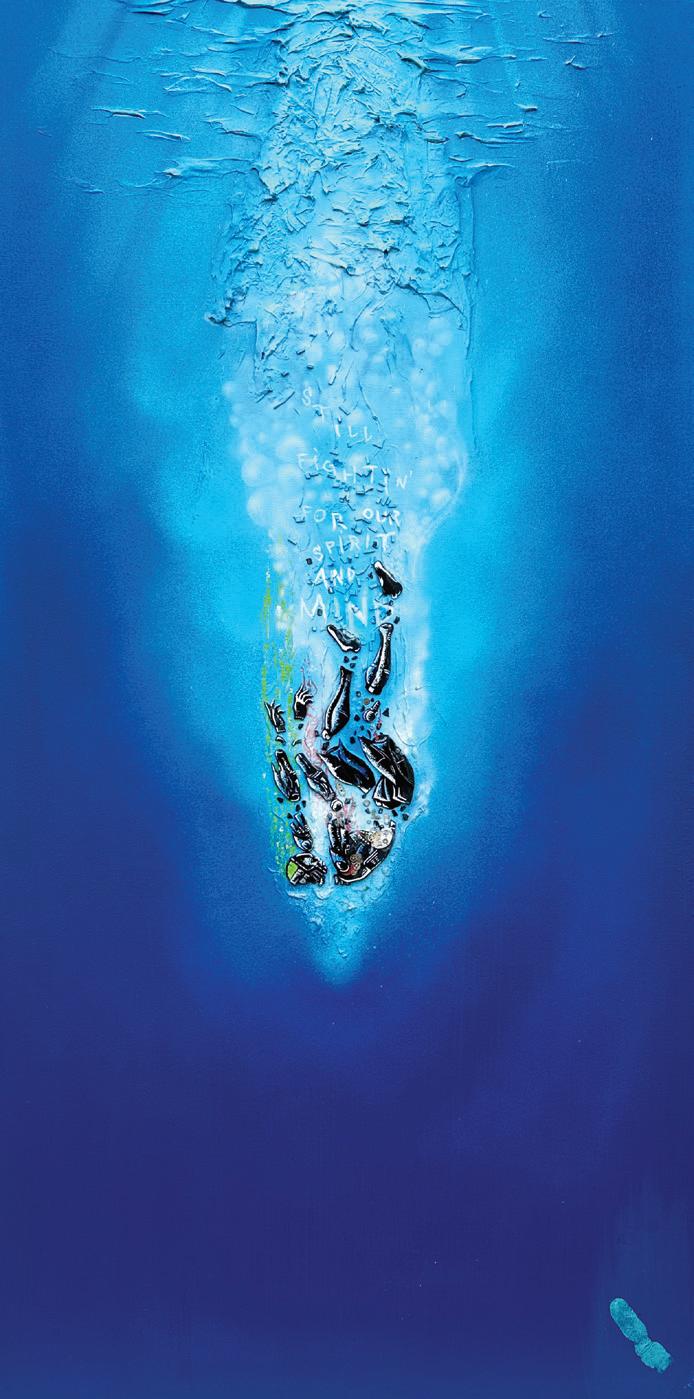
Feb. 4-25 at Zeitgeist
Alex Blau should make any short list of the city’s best painters, and in February the art-
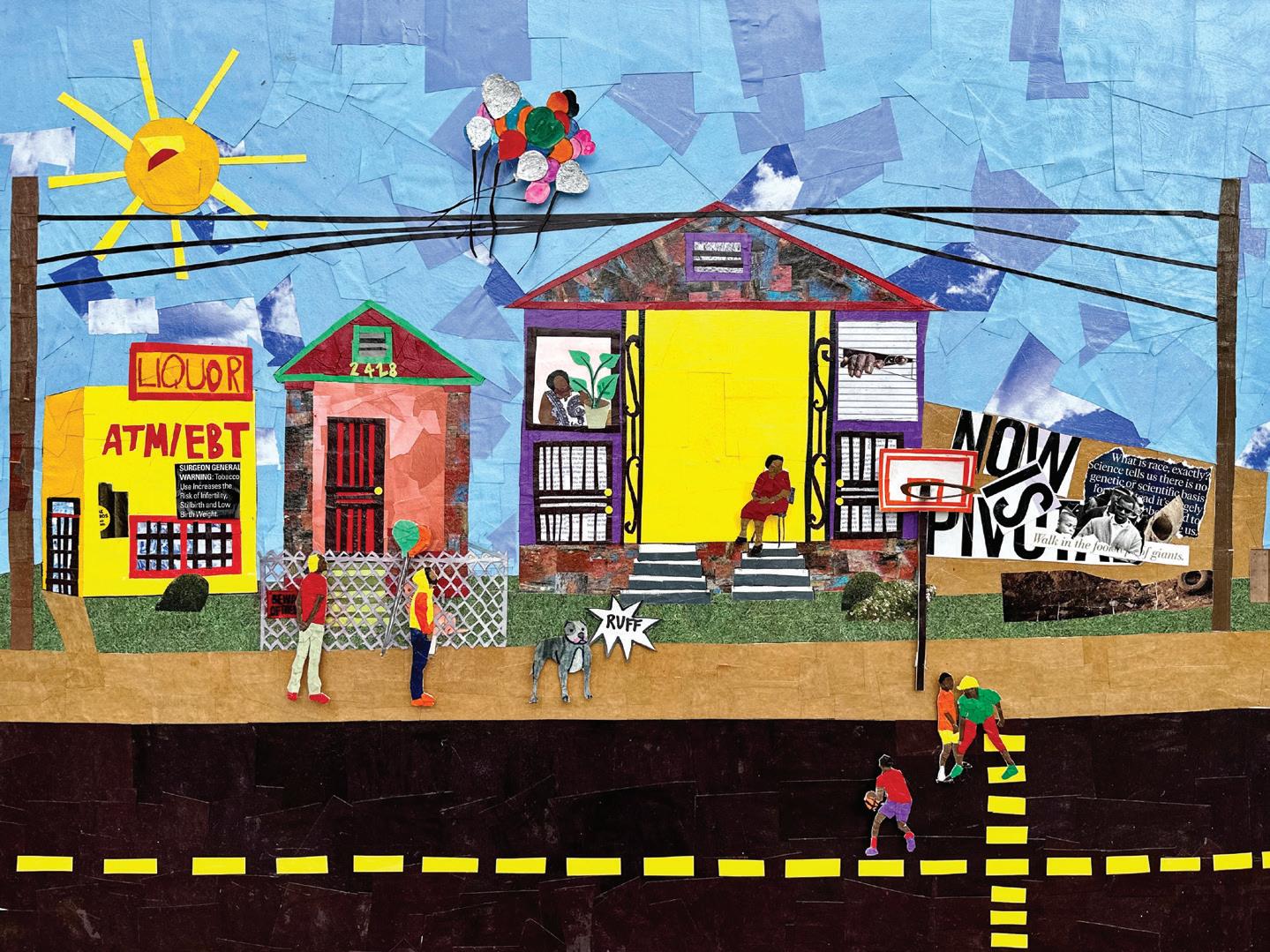
WHAT DO YOU HOPE GETS LEFT IN 2022?
Scarcity mentality. We’ve been conditioned in the arts to think that only a little is possible, or that we won’t be supported if we really go for it. But it would be nice to instead work from a place of abundance, trusting that the community has what we need and that we will work together to make it happen. —DANIEL JONES
Parking woes. (I know, I know, this is a Nashville-wide issue.) Some suggestions: The Frist Art Museum should stop charging its members for parking. Just up the membership level by $2, rather than making us go through the hassle of paying your machine. And Vanderbilt Art Gallery, please find some more spots for your visitors! —ANDREA ZIEHER
I hope to leave nostalgia for Nashville's past behind. This may be personal, but I need to accept that Nashville has changed and will continue to change, and nostalgia about the past is keeping me from living in the present. —XPAYNE ■
nashvillescene.com | JANUARY 26 – FEBRUARY 1, 2023 | NASHVILLE SCENE 13
Our picks for the hottest gallery shows of the coldest season
“BITE,” RAHELEH FILSOOFI
“AFTER WE ARE GONE,” OTOBONG NKANGA
PHOTO: WIM VAN DONGEN
“SISTER HOOD,” TC
“THE BACKRONYM FOR GOODIE MOBB,” MICHAEL MUCKER
ist will open her new solo show at Zeitgeist
Certainty includes two dozen of the artist’s abstract paintings, brimming with disparate patterns rendered in vibrant palettes. Blau uses airbrush, acrylics and stencils on linen and canvas. Her paintings contradict themselves: sophisticated combinations of abstract patterns with the look of a touristshop T-shirt; complex arrangements of banal elements — stars, flowers and fruits. In her artist statement Blau writes about her physical and psychological energies and how they interact with the energies in the world around her. Blau’s art has always been bursting with energy thanks to her lively lines and a gifted eye for color, and you can be certain that this will be one of the best local shows of the season. Certainty opens at Zeitgeist Gallery on Saturday, Feb. 4, with a reception from noon until 6 p.m.
L OUISA GLENN: THE CRACKS ARE HOW THE LIGHT GETS IN
March 4-25
at Julia Martin Gallery
Louisa Glenn’s quilt-inspired paintings are composed of colorful lines and shapes that interact in repeating patterns to create playful canvases packed with movement and energy. Glenn has a habit of not painting all the way to the edges of her canvases, and the result is a look that makes her works read like hanging quilts — these paintings would fit right in with a show of textile art. There’s nothing overly complicated about any of the elements in Glenn’s work, but their sums add up to dramatic surfaces that are also reassuringly familiar. Julia Martin Gallery will host an opening reception for The Cracks Are How the Light Gets In on Saturday, March 4, from 6 to 9 p.m.

BUKET SAVCI: DREAMPOND
March 3-25
at Red Arrow Gallery
Red Arrow Gallery keeps coming up in conversations about which Nashville galleries are making the gallery scene exciting again in the waning days of pandemic worries. The gallery opened 2023 with a strong show
of Annie Brito Hodgin’s paintings in January, and their March show looks like the perfect exhibit to pair with the inevitable onset of spring fever — hopefully the only fevers we’ll be dealing with by then. When I first saw Buket Savci’s Dreampond paintings on her website they looked photorealistic, but they’re too stylized to be merely that. I’m not very interested in photorealistic painting, but I’m definitely interested in Savci’s sexy sorting of the bodies, limbs, inflatable pool toys, headbands and panties floating through her exhibition. It seems likely that the painter is using some sort of photo reference in her process, because these scenes feel staged in the best possible way — like stills from some weird lost movie. Our galleries are oversaturated with figurative, narrative painting, but these works engage viewers with their mystery. They’re weird and mythic, but also silly and intimate. Savci is based in Brooklyn, and this is her first show at Red Arrow. The gallery hosts an opening reception for Savci on Saturday, March 3, from 6 to 9 p.m.
DAYBREAK ARTS
April 1-30 at Open Gallery
Nicole Minyard’s Daybreak Arts is an art studio and gallery focused on artists experiencing housing insecurity in Boomtown Nashville. Daybreak also manages an artist collective that puts art-making supplies, training an online marketplace, and in-person gallery exhibitions within reach for our Nashville neighbors who are struggling to keep a roof over their heads. The Daybreak Arts community will take over the walls at Lipscomb University’s Open Gallery at The Packing Plant in April, just in time for spring decorating. If you’re looking for just the right fresh new art to hang on your wall, your purchases will directly support your artist-neighbors and Daybreak’s laudable and long-lived mission. Open Gallery will host a reception on Saturday, April 1 (really, I’m not kidding), at The Packing Plant from 6 to 9 p.m. ■

TRIENNIAL CONFIDENTIAL
LAURA HUTSON HUNTER
ONE OF THE MOST eagerly anticipated art events of 2023 is the long-awaited Tennessee Triennial. The triennial is a statewide art event organized by Tri-Star Arts that was originally slated for 2020. The delay — and all that’s happened in the time between — only makes it more exciting. From Jan. 27 through May 7, Tennessee’s four largest cities — Nashville, Memphis, Knoxville and Chattanooga — will host contemporary art events organized around the theme “Re-Pair.”
Tri-Star tapped artist and dean of Vanderbilt’s art department María Magdalena Campos-Pons as the triennial’s consulting curator. It’s a smart move. Campos-Pons is well-equipped to spearhead such a visionary concept, and has been part of biennials and triennials across the globe — including in Venice, China, Liverpool and Dakar, not to mention the 2019 Havana Biennial, in which she brought the work of several Nashville-based artists to her hometown of Matanzas, Cuba, for the first time
“Re-Pair” is a concept that CamposPons considers both timely and aspirational. “What I tried to do with this word by inserting this hyphen in between,” she
says, “is to think about the effort of rethinking, restructuring and mending, but also bringing things together. So it’s not only about mending or returning to a place that might require more thinking, but it’s also about coming together. Now these four cities that are part of this great state of Tennessee are pairing together to celebrate visual art in all these different points. It’s fundamentally about working together — looking back and looking together. Joining energies and joining forces. It’s a metaphor for collective effort, but one that doesn’t take away from the individuality of each city.”
The city will be engaged with a number of performances so Nashvillians can be reacquainted with spaces we already know — venues like the Parthenon, the Frist Art Museum, Fisk University, Cheekwood, the National Museum of African American Music, Vanderbilt and various commercial galleries.
“My vision, my dream, is that one day we will have an opening for a Tennessee Triennial that is as large as a music festival,” says Campos-Pons. “We have an audience that is very sensitive and open to the arts. In Nashville’s case, sonic arts, music, is what the city is known for. But we can open a window for this audience, which is already there for music, to consider that visuality has a space there too. That painting, drawing, sculpture, printmaking, photography, performance art are part of what constitutes the fabric and the skin of the city.” ■
14 NASHVILLE SCENE | JANUARY 26 – FEBRUARY 1, 2023 | nashvillescene.com
We look inside the Tennessee Triennial with consulting curator María Magdalena Campos-Pons
TENNESSEE TRIENNIAL JAN. 27-MAY 4 TENNESSEETRIENNIAL.ORG TENNESSEE TRIENNIAL KICK-OFF RECEPTION 6-8 P.M. THURSDAY, JAN. 26 THE PARTHENON, 2500 WEST END AVE.
BY
PHOTO: JOHN RUSSELL
LOUISA GLENN: THE CRACKS ARE HOW THE LIGHT GETS IN, JULIA MARTIN GALLERY
MARÍA MAGDALENA CAMPOS-PONS
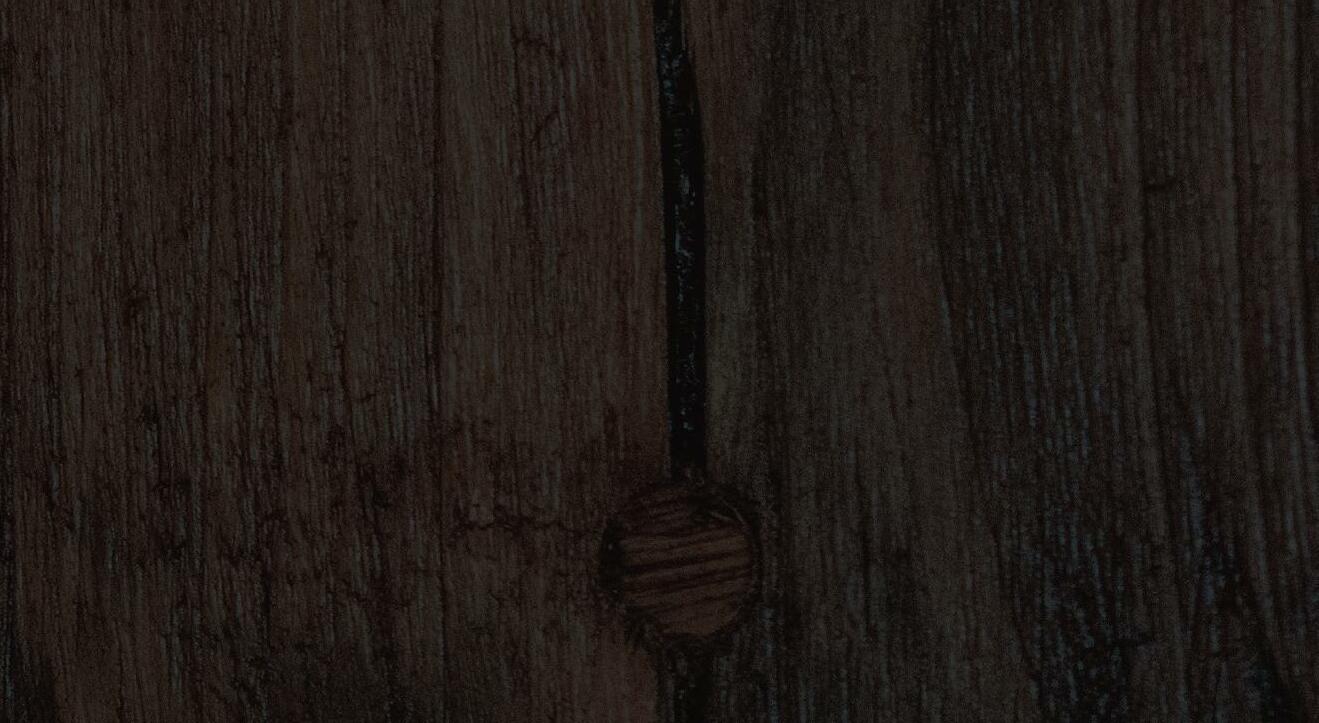


















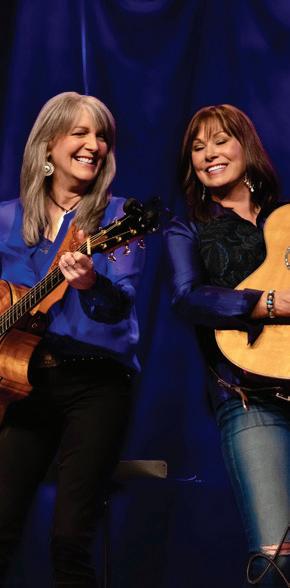


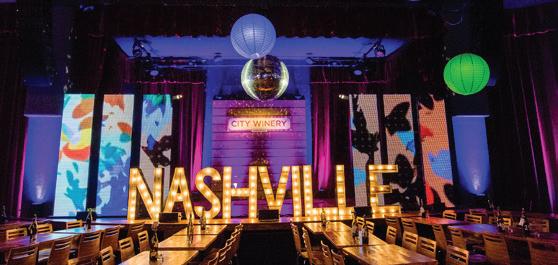



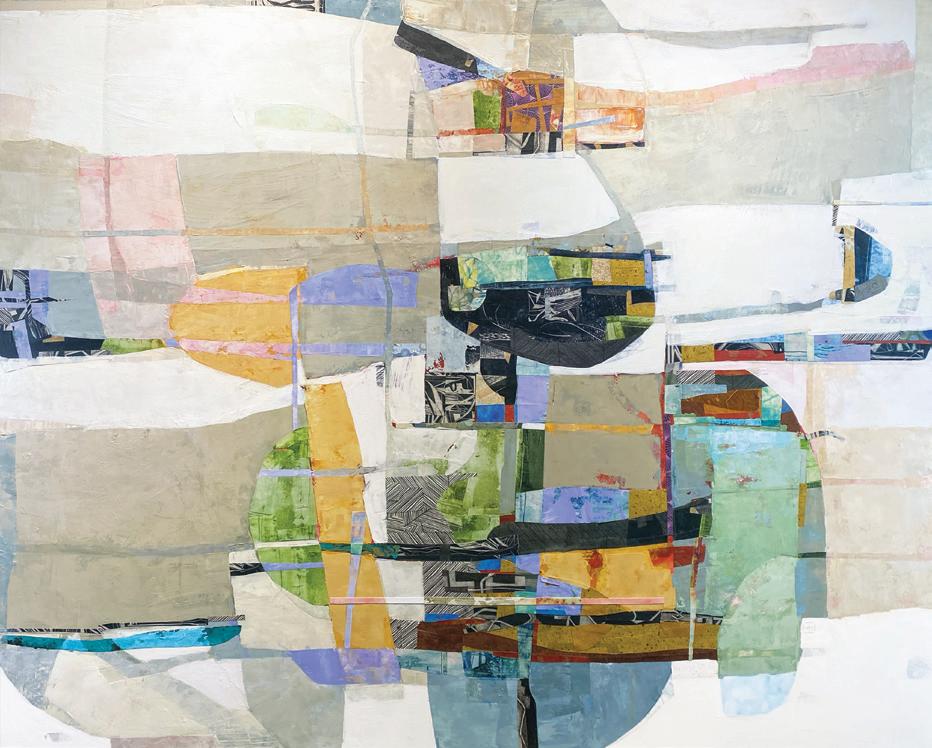

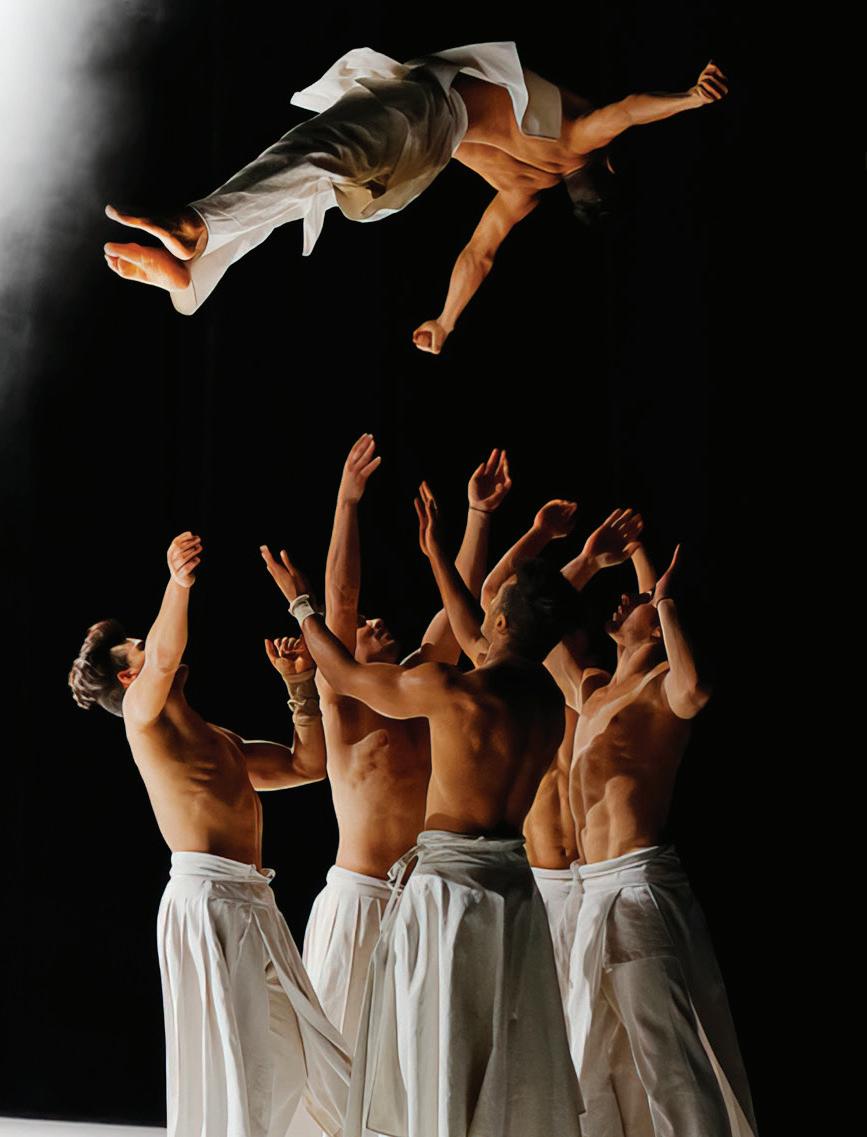
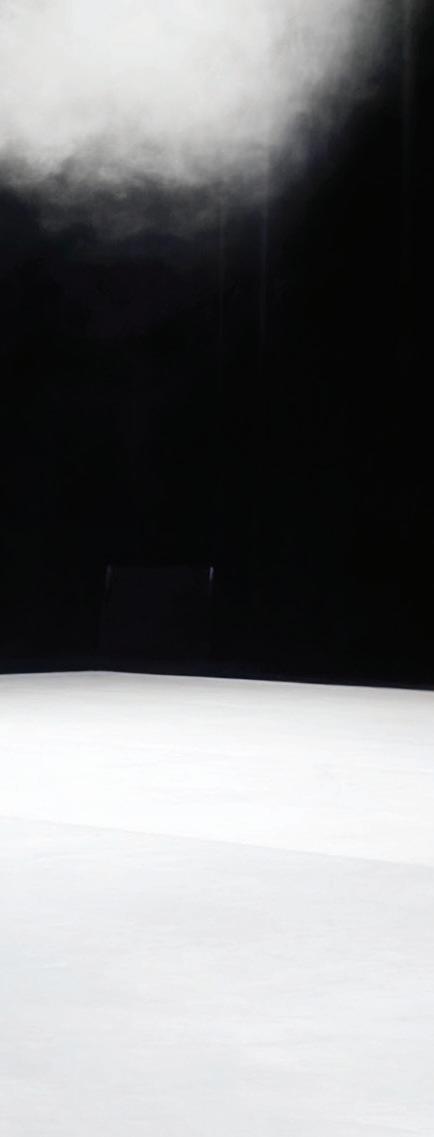


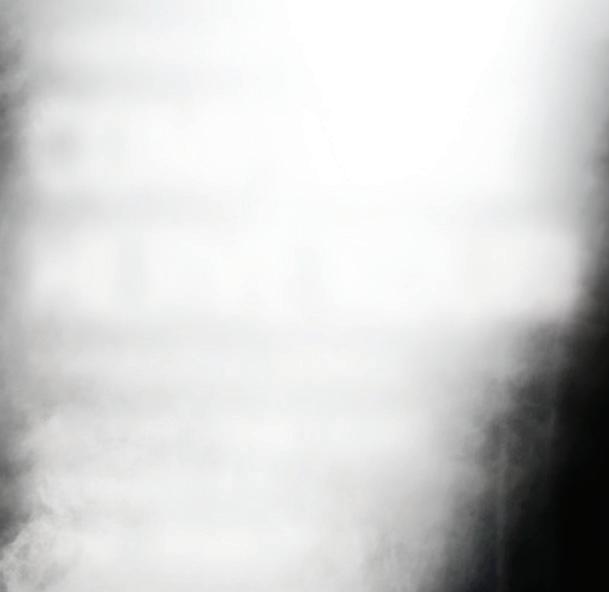

nashvillescene.com | JANUARY 26 – FEBRUARY 1, 2023 | NASHVILLE SCENE 15 609 LAFAYETTE ST. NASHVILLE, TN 37203, NASHVILLE, TN 37203 @CITYWINERYNSH . CITYWINERY.COM . 615.324.1033 Miki Howard & Glenn Jones The Hamiltones aka The Ton3s 2.01 1.31 Denny Laine “Songs and Stories” Kindred the Family Soul with CoJo Ko 2.02 Rob Ickes & Trey Hensley Dueling Duos The Donjuans vs Kathy Mattea & Suzy Bogguss 2.07 2.11 LIVE MUSIC | URBAN WINERY RESTAURANT | BAR | PRIVATE EVENTS 1.27 BRIAN COURTNEY WILSON 1.28 SCHATZI’S LOVE LOUNGE AN EVENING OF BURLESQUE 1.28 JOHN CRAIGIE 1.29 NASHVILLE BEATLES BRUNCH FEAT. JOHN SALAWAY & FRIENDS 1.29 BACK 2 MAC: FLEETWOOD MAC TRIBUTE 1.29 THAT 1 GUY 1.31 CHAIR 55 ARTIST SHOWCASE 2.4 CITY OF LAUGHS 2.5 FOR PETE’S SAKE 2.7 DUELING DUOS - THE DONJUANS VS KATHY MATTEA AND SUZY BOGGUSS 2.9 NATURAL WONDER 2.9 LEE DEWYZE 2.10 JEFF SCOTT SOTO & JASON BIELER 2.10 AN EVENING WITH DAVE HOLLISTER 2.11 ELERI WARD 2.11 ROB ICKES & TREY HENSLEY 2.12 THE VAGINA MONOLOGUES 2.12 SCOUT COOKIE AND WINE PAIRING 2.13 MIKE PHILLIPS 2.14 VALENTINE’S DAY WITH RAHEEM DEVAUGHN 2.16 JAMISON ROSS 2.17 COREY SMITH 2.18 SOUL FOOD POETRY CAFE FEAT. BRANDON THORNTON 2.19 DINING WITH DIVAS DRAG BRUNCH 2.19 NASHVILLE IMPROV 2.19 DEANA CARTER 2.20 DOMINE - DARK SIDE OF THE MOON SYNCED TO THE WIZARD OF OZ-PLUS A SECOND SET OF ALL THE HITS Book your event at city winery! weddings • private dinners • galas corporate events • birthdays • and more! The Wine Club for Music VINOFILE PLUS Each month, receive one bottle of wine, sip complimentary wine flights, attend elevated tasting parties with a guest, enjoy personalized wine discounts and all Vinofile benefits. LEARN MORE 2.03 tuesday-thursday • 5-7pm ANNA CARLL Urban Collage #279 - Mixed media on aluminum panel Capturing the essence and vitality of fine southern living from local and regional artists. The 25 year tradition continues... York & Friends Annual Super Bowl Art Sale February 1-11 644 W. Iris Dr. | Nashville, TN 37204 615.352.3316 | www.yorkandfriends.com | Tues.-Fri. 10-5 & Sat. 10-3 Follow us on Facebook at York & Friends Fine Art Photo by Nathalie Sternalski TICKETS FROM $25 AT OZARTSNASHVILLE.ORG FEBRUARY 2-4 COMPAGNIE HERVÉ KOUBI (FRANCE/ALGERIA) WHAT THE DAY OWES TO THE NIGHT “EXPLOSIVE” — The Washington Post “A CREATION OF POETIC BEAUTY” — The New York Times “STRIKING VIRTUOSITY” — The New Yorker
JOIN THE CLUB
BY ERICA CICCARONE
IF YOU’VE SET reading goals for 2023, our local bibliophiles have you covered with a variety of book clubs to help you jump in.
Nashville stalwart Parnassus Books has been hosting book clubs for years, and the shop’s roster currently includes a Classics Club and Between the Covers Book Club. The latter is billed as “a romance book club which frequently reads spicy books, so this group is intended for those aged 18+ who both love the genre and are comfortable discussing potentially explicit topics.” Tempting! That club is currently reading Two Wrongs Make a Right by Chloe Liese.
Nashville has a healthy appetite for indie bookstores, and a new one opened last year on the East Side. The co-owners of Novelette Booksellers, Deezy Violet and Jordan Tromblee, told the Scene in July that their shop is a haven for LGBTQ readers, and they want to be a resource for people who fear their mental health is at risk because of how society views their sexuality. Their book club reflects their values. Violet and Tromblee started

book clubs in September that are going strong, selling out regularly. For February, they’ll be reading the contemporary fiction novel Exalted by Anna Dorn and the romance novel Sorry, Bro by Taleen Voskuni.

“It brings people together and helps people make friends,” says Violet. “It helps people stay accountable for any reading goals they might have. It’s important to hear from people who have differing thoughts than you to see things from a different angle, and also, we wanted to give our queer besties an extra special place for book club.”
Meetings are informal, and participants are encouraged to bring camping chairs or a cushion to sit on. “I think our book clubs are a bit different just because we are such a fun, chatty shop by nature,” says Violet, “so even if we're discussing a serious book, there is going to be fun involved. We are a great safe space for queer readers, and our book clubs have reflected that.” Novelette announces book clubs on Instagram (@novelettebooksellers) and in their soon-to-come newsletter.
Readers can shop after the meeting at 15 percent off.
Another East Side outpost, The Bookshop, hosts four book clubs in the coffee shop next door, Hanna Bee Coffee. The monthly clubs are led by booksellers. Other Worlds features sci-fi books; Meet Cute features romcom books; Needless to Say features essay collections; Those Formative Years features coming-of-age books, like Fatimah Asghar’s When We Were Sisters, which is scheduled for Sunday.
Given the shop’s carefully curated selection, it’s no surprise that the themes are so inventive. “For all of our clubs,” says The Bookshop’s Joelle Herr, “we put a lot of thought into our selections, ultimately landing on ones that we feel will foster dynamic discussion in a relaxed, welcoming environment.”
“Quite simply: We love books,” says Herr. “And we love sharing our love of books with anyone who’s interested. Also, each of our book clubs is led by a different bookseller, which allows them to foster their own community within our larger one. Everything we do at The Bookshop is about community.” You can keep up with the clubs at thebookshopnashville.com/events. Attendees get a 10 percent discount in the shop after the gathering.
The Bookshop also partners with a new community-led queer book club, which was started by Tessa Loftis. Loftis came out as gay in 2020 and struggled to find community because of the pandemic. She created the book club last year to build that community.

“Our meetings are very free-form,” Loftis tells the Scene. “I have discussion questions prepared in case the conversation lags, but I don’t always use them. Sometimes a book inspires a completely separate conversation, and the book discus-
sion goes completely off the rails. I personally love it when this happens. … My goal is to encourage people to read and learn about different experiences, but also to bring people together and have fun.”
The Queer Book Club meets once a month on Sundays. Follow them on Instagram at @queerbookclubtn. ■
UPCOMING BOOK EVENTS:
Valerie June, author of Somebody to Love: The Story of Valerie June’s Sweet Baby Banjolele, 2 p.m. Jan. 29 at The Blue Room at Third Man Records
Sylvie Bigar, author of Cassoulet Confessions: Food, France, Family and the Stew that Saved My Soul, 7 p.m. Jan. 31 at the Gordon Jewish Community Center
La Shonda Mims, author of Drastic Dykes and Accidental Activists: Queer Women in the Urban South, with Nashville Queer History, 8 p.m. Feb. 2 at Novelette Booksellers
The Porch Writers’ Collective’s Heartbreak Happy Hour, 7 p.m. Feb. 5 at Jackalope Ranch
V (Formerly Eve Ensler), author of The Vagina Monologues and Reckoning, 6:30 p.m. Feb. 6 at Parnassus Books

The Bookshop’s Rom-Com-a-Rama: A Book Fair for Grownups, 6 p.m. Feb. 7 at East Nashville Beer Works
Bill Haltom, author of Sears Crosstown in Memphis, Feb. 7 virtual event presented by the Nashville Jewish Book Series
Margaret Verble, author of Stealing, 6:30 p.m. Feb. 9 at Parnassus Books
Valentine’s Day Market feat. live portraiture by Ellie Caudill, 11 a.m.-7 p.m. Feb. 11 at The Green Ray
Dr. Yasmine Ali, author of Walk Through Fire: The Train Disaster That Changed America, 6:30 p.m. Feb. 27 at Parnassus Books
16 NASHVILLE SCENE | JANUARY 26 – FEBRUARY 1, 2023 | nashvillescene.com
Meet your reading goals with these local book clubs
NOVELETTE
JOELLE HERR
PHOTOS: ERIC ENGLAND






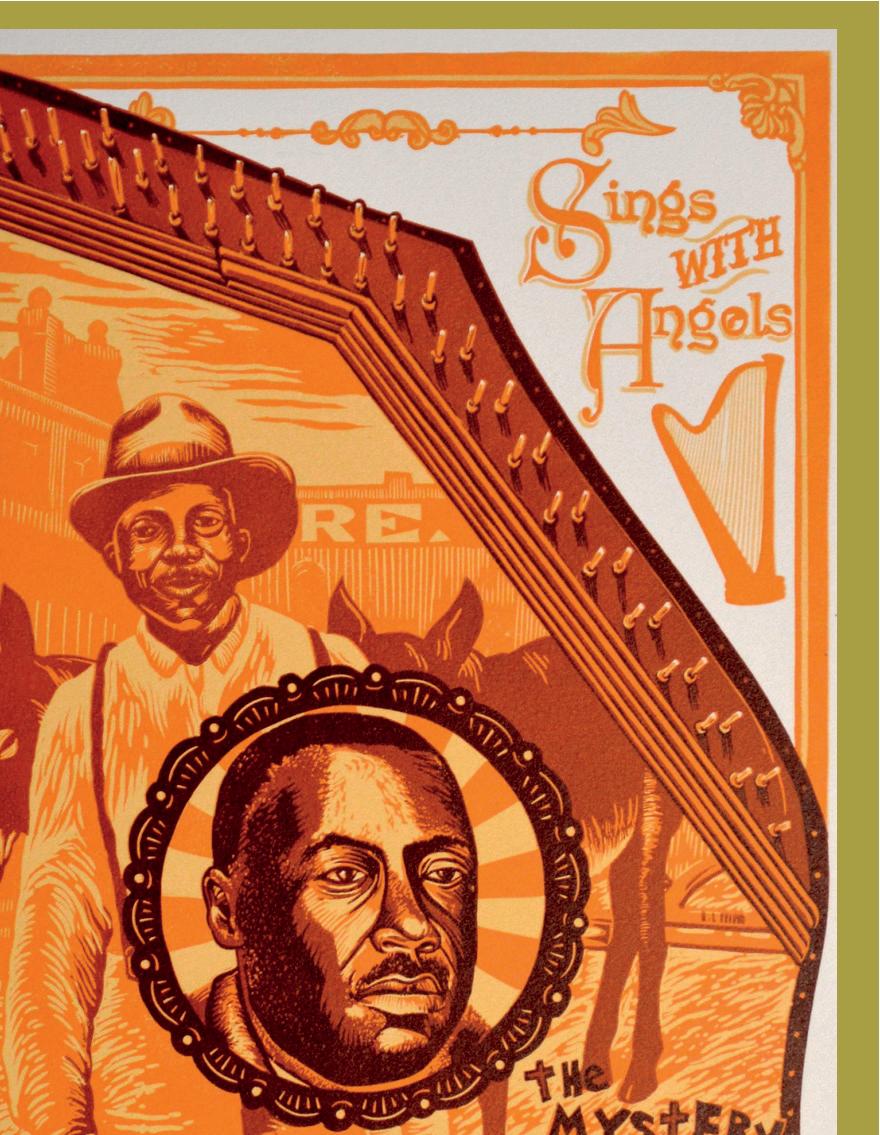



nashvillescene.com | JANUARY 26 – FEBRUARY 1, 2023 | NASHVILLE SCENE 17
A leadership conference for 7th-12th graders identifying as girls Saturday, February
2023 Registration includes: four educational sessions, catered lunch, hands-on STEAM activities, two tickets to the science center for future use, & much more!
We’re here to change that. Women make up only 28% of the workforce in STEM fields.
4,
SAINT OMER
COMING ATTRACTIONS
BY D. PATRICK RODGERS
EVEN HERE in this cinematically inconsistent stretch of time between the holidays and the finale of awards season, Nashville’s beloved arthouse the Belcourt has plenty of intriguing stuff planned. As ever, the Hillsboro Village theater will host its A Red Carpet Evening on the night of the Academy Awards — Sunday, March 12. With cocktails, a silent auction, a VIP backstage lounge and the Oscar ceremony projected on the theater’s screens, A Red Carpet Evening serves as a fundraiser for the nonprofit film center, which is nearing its 100th anniversary.
Speaking of which, Belcourt executive director Stephanie Silverman also recently announced the Belcourt Stories Project — an oral history initiative designed to celebrate the theater’s centennial in 2025. Using software called TheirStory, the Belcourt is gathering video recollections from Nashvillians about their experiences with the arthouse. “The through line is that we've always been a community gathering place for film and for live theater — a think tank of creativity and engagement with the arts,” the Belcourt’s T. Minton recently told the Scene “Hopefully the oral history will be appealing to people, and they'll want to participate as we get stories rolling in throughout the year.”
The Belcourt also has a slate of promising new releases, many of them international features, hitting its screens in the coming weeks. Out this Friday, Jan. 27, are Living (Oliver Hermanus and Kazuo Ishiguro’s remake of Akira Kurosawa’s iconic Ikiru) and Broker (Japanese auteur Hirokazu Koreeda’s latest). We’ve got reviews of both in this week’s film section. New releases coming in February include documentary
filmmaker Alice Diop’s narrative debut Saint Omer, Iranian director Jafar Panahi’s No Bears and family drama One Fine Morning from Bergman Island director Mia Hansen-Løve. Documentary fans can look out for Lizzie Gottlieb’s Turn Every Page, which surveys the 50-year working relationship between literary giants Robert Caro and Robert Gottlieb. In the run-up to the Academy Awards,
the arthouse will also host its annual OscarNominated Short Films series and its Best Picture Marathon, the latter of which will give cinephiles one last chance to catch the year’s most acclaimed films on the big screen.
The Belcourt will also host a number of repertory screenings, including Beloved: A

Spotlight Series on Black Female Directors
That series, running between Feb. 14 and March 5, will feature showings of Love & Basketball, Daughters of the Dust, Queen & Slim, Alma’s Rainbow, The Watermelon Woman and Eve’s Bayou. The Restoration Roundup series is set to showcase newly restored classics like Assault on Precinct 13, The Trial and Crouching Tiger, Hidden Dragon. As always, the theater will also host its ongoing Weekend Classics and Music City Mondays
Meanwhile at the cineplexes, film fans can expect a smattering of horror and, naturally, some franchise installments and Marvel Cinematic Universe fare. Out this week is sci-fi/horror effort Infinity Pool from director Brandon Cronenberg (yes, son of body-horror icon David). Looking to take your mom to the megaplex next month? Your options include 80 for Brady (opening Feb. 3 and featuring Lily Tomlin, Jane Fonda, Sally Field and Rita Moreno) and Magic Mike’s Last Dance (opening Feb. 10). M. Night Shyamalan’s Dave Bautista-starring horror-thriller Knock at the Cabin lands Feb. 3. Groundhog Day returns to theaters via Fathom Events in February for its 30th anniversary, with a Titanic 25th-anniversary restoration hitting screens Feb. 10.
You don’t need us to tell you that Ant-Man and the Wasp: Quantumania arrives everywhere in mid-February — Marvel already has ads for that being pumped into every corner of the internet. But perhaps you’re unaware that the Elizabeth Banks-directed Cocaine Bear — based on the true story of a bear that died after eating 75 pounds of cocaine in the woods of northern Georgia — will also be released in February. Come March, filmgoers will have the opportunity to see Creed III, John Wick 4 and Scream VI in AMC and Regal theaters. ■
Nashville Ballet explores local stories with the world premiere of Anthology
 BY AMY STUMPFL
BY AMY STUMPFL
THE NASHVILLE CITY CEMETERY might seem an unlikely source of inspiration for the ballet. But in creating his latest work — Anthology, which premieres Feb. 10 at TPAC’s Polk Theater — Nashville Ballet artistic director Paul Vasterling has discovered that this unique local landmark offers a rich tapestry of beautiful but often overlooked stories.
“I’ve always been fascinated by Nashville’s history,” says Vasterling, who plans to retire at the end of the 2022-23 season, marking 34 years with the organization.
“But what I found interesting about the Nashville City Cemetery is that it serves as the final resting place for all strata of humanity — people of all ages, every race, religion, social status. And in thinking about where the city is today — and really, where we all are in our own lives — I started wondering how many stories must be buried in that cemetery. The people that came before us, who shaped our community and gave us all a foundation to build on. So many of those stories have been erased or lost. But my hope is that Anthology will remind us of how we’re all connected, and that everyone’s story deserves to be told.”
Vasterling says the new work follows a character, known simply as the Living One, who visits the city cemetery and encounters various spirits there — from formerly enslaved philanthropist Lucinda

18 NASHVILLE SCENE | JANUARY 26 – FEBRUARY 1, 2023 | nashvillescene.com
ON POINTE
Promising new releases and repertory screenings are headed to the Belcourt, with franchise installments and Cocaine Bear hitting megaplexes
ONE FINE MORNING ANTHOLOGY FEB. 10-12 AT TPAC’S POLK THEATER, 505 DEADERICK ST. NASHVILLEBALLET.COM
PHOTOS: LYDIA MCRAE









nashvillescene.com | JANUARY 26 – FEBRUARY 1, 2023 | NASHVILLE SCENE 19 Learn more at CountryMusicHallofFame.org/Membership. 224 REP. JOHN LEWIS WAY S NASHVILLE, TN CMATHEATER.COM @CMATHEATER BOOKED BY @NATIONALSHOWS2 • NATIONALSHOWS2.COM The CMA Theater is a property of the Country Music Hall of Fame and Museum. JUNE 3 RON POPE 2023 TOUR WITH SPECIAL GUEST LYDIA LUCE UPCOMING SHOWS AT THE CMA THEATER TICKETS ON SALE NOW Museum members receive exclusive pre-sale opportunities for all CMA Theater shows. FEBRUARY 10 DAVE MASON ENDANGERED SPECIES TOUR 2023 APRIL 12 HOT TUNA ACOUSTIC DUO MAY 1 GIRL NAMED TOM
Bedford and dance luminary Albertine Maxwell to Nashville’s first policewomen and even the first peoples of Middle Tennessee. And much like Vasterling’s acclaimed work Lucy Negro Redux, Anthology offers an eclectic blend of movement, music, spoken word and projected imagery.
“I had originally planned to choreograph the entire piece myself with one musician,” Vasterling says. “But I felt it was better to have other voices represented, both choreographically and musically. It seemed like this might be a great framework to lift up other artists.”
In fact, Anthology will feature the choreography of Nashville Ballet’s newly appointed resident choreographer Mollie Sansone, along with Shabaz Ujima, Aeron Buchanan, Sidra Bell and Windship Boyd. Live music will be composed and performed by singer-songwriter Morgxn, with additional music by Larissa Maestro, Jordan Lehning, Beethoven and more.

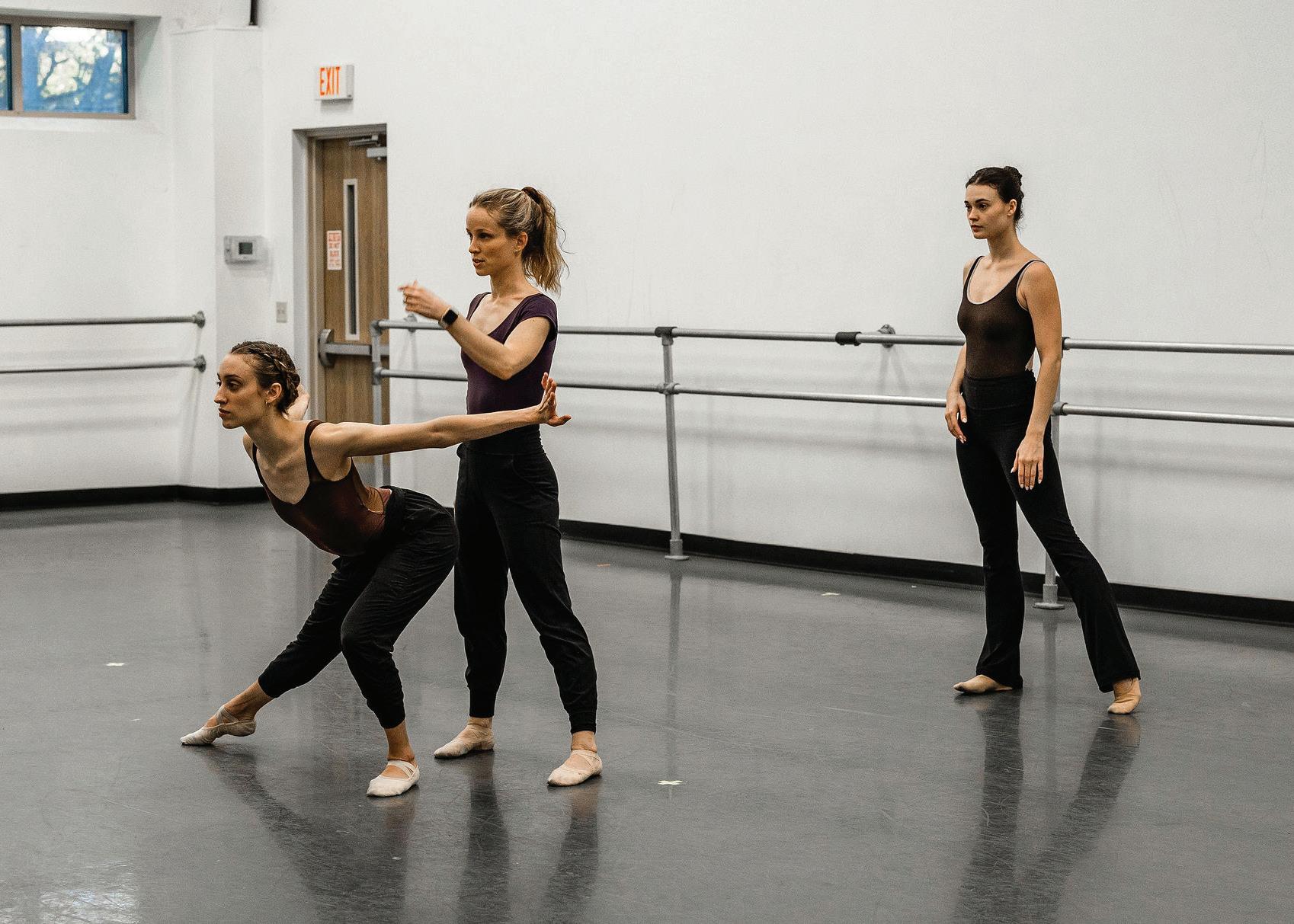
“Paul has always been so supportive of everything I do,” says Sansone, a longtime company dancer and Nashville Ballet’s first female resident choreographer. “He absolutely believes in people, but he also invests in them. It’s amazing to think of the time and energy and resources he gives to people within the organization. I admire that about him so much.”
For her portion of Anthology, Sansone is highlighting the story of Elizabeth Goodwin and Gertrude Whitney — the first women to serve on Nashville’s police force. The pair relocated from Buffalo, N.Y., to Nashville in 1921 to work with the Women’s Protective Bureau, an organization aimed at keeping single young women safe and off the streets.
“Elizabeth and Gertrude were incredibly strong women — working and succeeding in a man’s world,” Sansone says. “They were so devoted to the community they protected. But they were not just partners in their work. Photos and records indicate that they were also partners in life. They owned a home together and adopted two sons together. It’s really a beautiful love story, and I’m so honored to bring it to the stage.
“As part of my research, I found that Elizabeth grew up doing a lot of needlework and lace work,” Sansone continues. “That got me thinking about how tightly interwoven these two women were — both within the
fabric of the community and to each other. So I’m doing a lot of gesture work, with interlaced arms and embraces that reinforce this idea of connection that runs throughout Anthology. So much can be said through the language of dance, and there’s something really magical in that. I hope audiences will be inspired by — and maybe even recognize a bit of themselves — within these incredible stories that Paul has gathered.”
EMAIL EDITOR@NASHVILLESCENE.COM
OTHER UPCOMING DANCE AND THEATER PERFORMANCES:
MOMIX’s Alice, Jan. 27-28 at TPAC’s Polk Theater (tpac.org)
Compagnie Hervé Koubi’s What the Day Owes to the Night, Feb. 2-4 at OZ Arts (ozartsnashville.org)
SIX: The Musical, Feb. 21-26 at TPAC’s Jackson Hall (tpac.org)
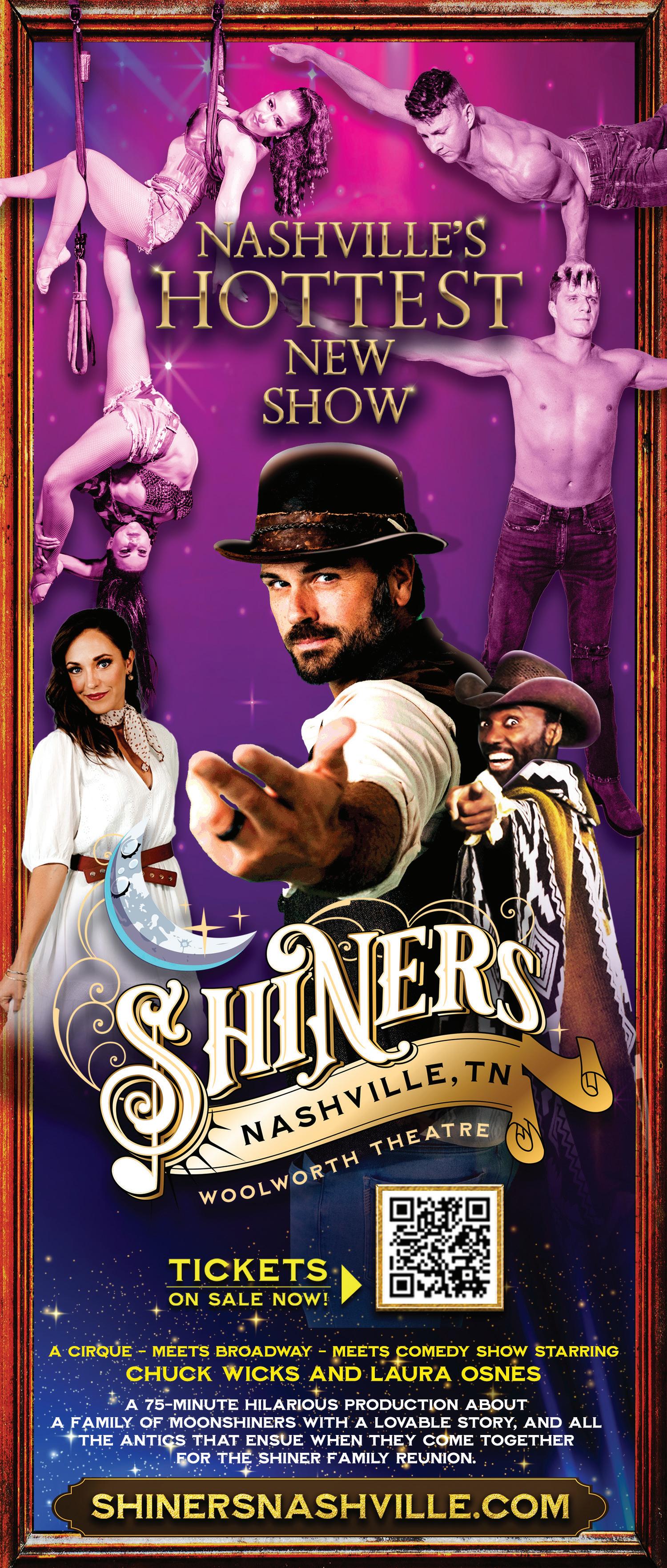
DakhaBrakha’s One Year After the Invasion, Feb. 25 at OZ Arts (ozartsnashville.org)
Ain’t Too Proud, March 21-26 at TPAC’s Jackson Hall (tpac.org)
Nashville Rep’s The Curious Incident of the Dog in the Night-Time, March 24-April 2 at TPAC’s Johnson Theater (nashvillerep.org)
20 NASHVILLE SCENE | JANUARY 26 – FEBRUARY 1, 2023 | nashvillescene.com
PAUL VASTERLING
living well




fresh perspectives to live your best life in
2023
Nashville Crystal Store and Crystal Farmacy
Though crystal healing is trending, renowned healer, author and visionary Ataana Badilli has supported Nashville with this ancient form of energy work in Nashville since 2005.
Crystals are stones with unique physical characteristics and energies — each one affects the human body’s vibrations in different ways.
“Crystals help us remember our full potential and self-healing abilities,” says Badilli, who opened Nashville Crystal Store’s Berry Hill location in 2017, East Nashville in 2018 and The Chattanooga Crystal Store in 2021.

Nashville Crystal Store carries consciously sourced, healing crystals and beautiful gemstones from around the globe, ranging from pocket size to 8 feet tall. Their goal is to connect each client with their healing crystal — and vice versa.







“Upon entry, our knowledgeable and intuitive staff is there to support you on your healing journey with crystal information and pairings, Badilli says. “Each crystal is labeled with its individual healing properties, like a crystal pharmacy. After a brief consultation, our staff pairs crystals that are unique to the individual and their energy.”
Crystal pairings are a two-way street. Badilli and his staff also work to ensure that each stone will be happy in its new home.
“The energy of our crystals is extremely important to us, ensuring that when they are rehomed they hold a beautiful, healing energy,” Badilli says. “We work directly with the miners and their families to ensure a fair and healthy process for everyone involved, including the stones.”
Badilli, who encourages families and children to experience the “wholesome healing energy” of stones, also works with international artists on one-of-a-kind gemstone jewelry, sculptures and crystal furniture.
His books, Sacred Inner Dialogue: Calling My Power Back and Mantras & Music: Prosperity Healing Mantras, are available in-store and online.
To learn more about guided crystal meditations, complimentary crystal readings, energy healing work and more, visit nashvillecrystalstore.com, follow on Instagram @NashvilleCrystalStore and sign up for text updates and a live nightly Zoom meditation of Prosperity Healing Mantras at ataanamethod.com.
living well 2023 Advertorial
The energy of our crystals is extremely important to us, ensuring that when they are rehomed they hold a beautiful, healing energy,








We offer high frequency crystals and gemstones from around the globe. Aiding you on your healing journey! For events and Energy Healing Ataanamethod.com • Psychic Medium • Crystal Readings • Berryhill Ph: (615) 674.1198 OPEN DAILY 12-6PM Follow us online @nashvillecrystalstore Nashvillecrystalstore.com Come & discover your healing crystals! Nashville Crystal Store STORE FRONT Berryhill 2819 Columbine Place Nashville, TN East Nashville Crystal Store 804 Meridian St Nashville, TN Chattanooga Crystal Store 1155 East Main St Chattanooga, TN
STANDING ON THE SHOULDERS OF






Braces by Dr. Ruth
After Dr. Ruth Ross Edmonds completed her graduate training in orthodontics at the University of Tennessee in Memphis, she moved back to Nashville to put her knowledge and experience to work.

“No one was hiring, so I decided to open my own practice,” Edmonds says. “As a result, I am the first African-American female to own and open an orthodontic office in Nashville.”
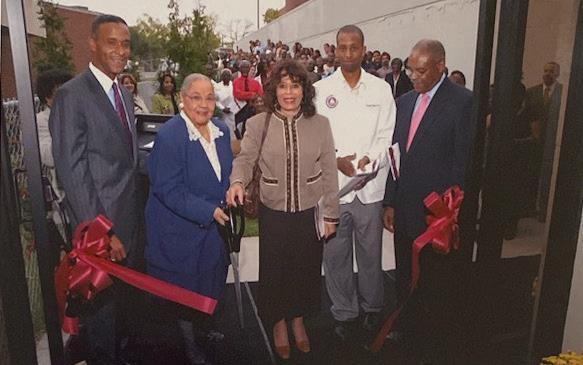
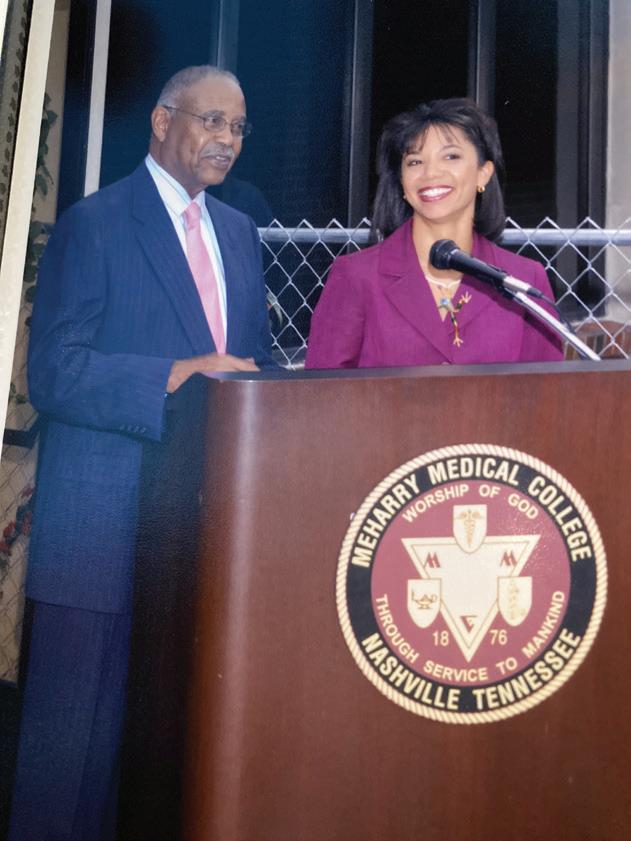

Edmonds opened Braces by Dr. Ruth 22 years ago with a staff of one. Today she has 12 highly trained team members in a brightly colored Midtown space that’s also “a bit of a mural gallery,” she says.




At Braces by Dr. Ruth, customized orthodontic treatment plan options include metal and ceramic (clear) braces, aligners and their newest product, Brava by Brius.








“These are independent tooth movers that are placed behind teeth. They are the truly invisible treatment option,” she says. “Our patients are loving having a tray-less option, as many people do not have the discipline to wear the trays. You are able to brush and floss as you would without independent tooth movers.”
A family-friendly, inclusive environment is important to Edmonds: Braces by Dr. Ruth also offers bilingual services for children and adults and several rewards programs. The token program lets patients earn tokens for punctuality and clean teeth. Tokens can be saved and applied to everything from a travel toothbrush to ear buds, wireless speakers, movie tickets or two tickets to Nashville Zoo. Patients can also create an entry for the Braces by Dr. Ruth t-shirt design contest and attend a patient appreciation party during summer break.
Braces are a science — but also an art. Outside the office, Edmonds funnels her creativity into stained and fused glass art.
In addition to being the owner, operator, orthodontist and self-described “Queen of Everything,” Edmonds is also a member of the American Dental Association, American Association of Orthodontics, Southern Association of Orthodontics, Nashville Dental Society and the Pan-Tennessee Dental Society, and has received awards from the National Dental Association and the Capital City Dental Society.
“We are not the biggest, or the busiest,” Edmonds says of her practice. “But one difference between Braces by Dr. Ruth and your local chain — or office that has several locations — is that you will always get Dr. Ruth.”

living well 2023 Advertorial
one was hiring, so I decided to open my own practice, As a result, I am the first AfricanAmerican female to own and open an orthodontic office in Nashville. WITH GRATITUDE WE RISE! GIVE BACK GENEROUSLY! In Care of e Ross Fitness Center Renovation Fundraiser EVENT PLANNING IS UNDERWAY! Community Sponsorships Welcome Contact BBDR For Details at (615) 321-3663 PROUDLY SPOTLIGHTING COMMUNITY EXCELLENCE! The Legacy of The Late Dr. David E. Ross Jr. and Mrs. Ruthie Ross ROSS FITNESS AND RECREATION CENTER RIBBON CUTTING AND DEDICATION CEREMONY.
16, 2007 Our Parent’s Dreams, Investments, and Foresight Changed e Trajectory of Not Only eir Children, But e Whole Meharry Village’s Accessibility to Physical Fitness Forever!
No
OCTOBER
GIANTS
Third Coast Salt and Day Spa

It’s no coincidence that Third Coast Salt Day Spa has been open for 6.5 years and voted Best Spa for six. Based on the healing power of salt, this 5300-square-foot space caters to those who seek solitude or social interaction.


“Want to know why you are so relaxed at the beach? It’s the salt!” says self-proclaimed “grateful owner” Shari Arnold. “Escape to Third Coast Salt and Day Spa for the most uniquely designed menu of services. Your massage can be transformed into the best treatment of your life.”
The 28-member team of professionals offer massage, reiki, salt, sweat and spa therapy, facials, chemical peels, waxing and threading, tinting, microblading, lash extensions, wellness workshops, private events and more.

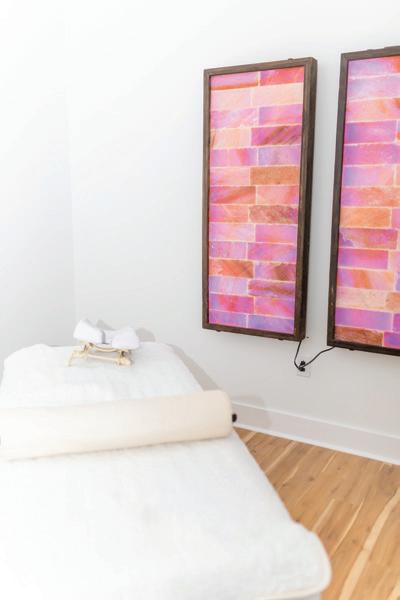


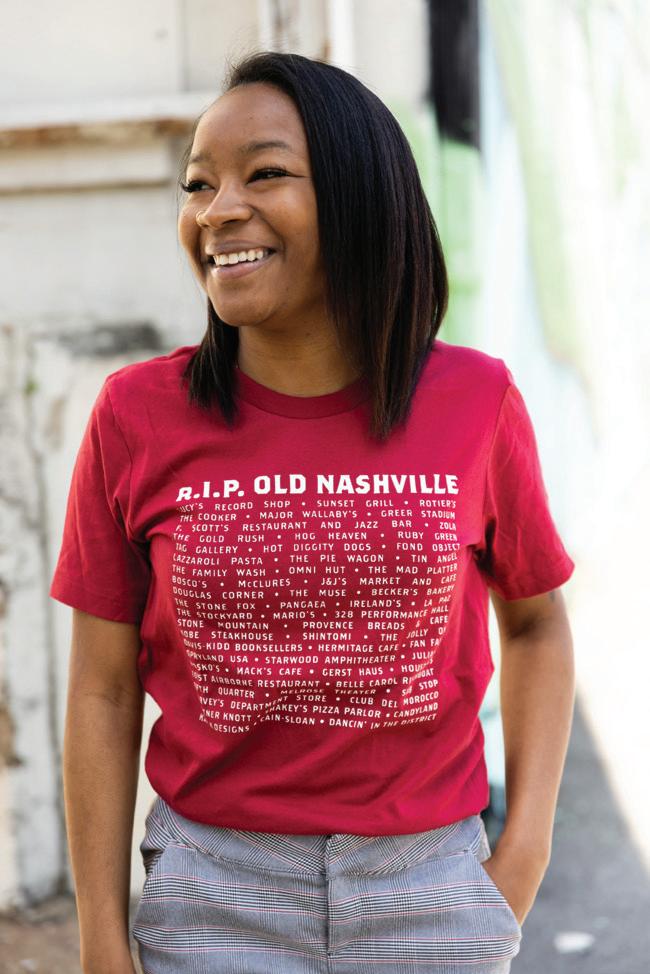
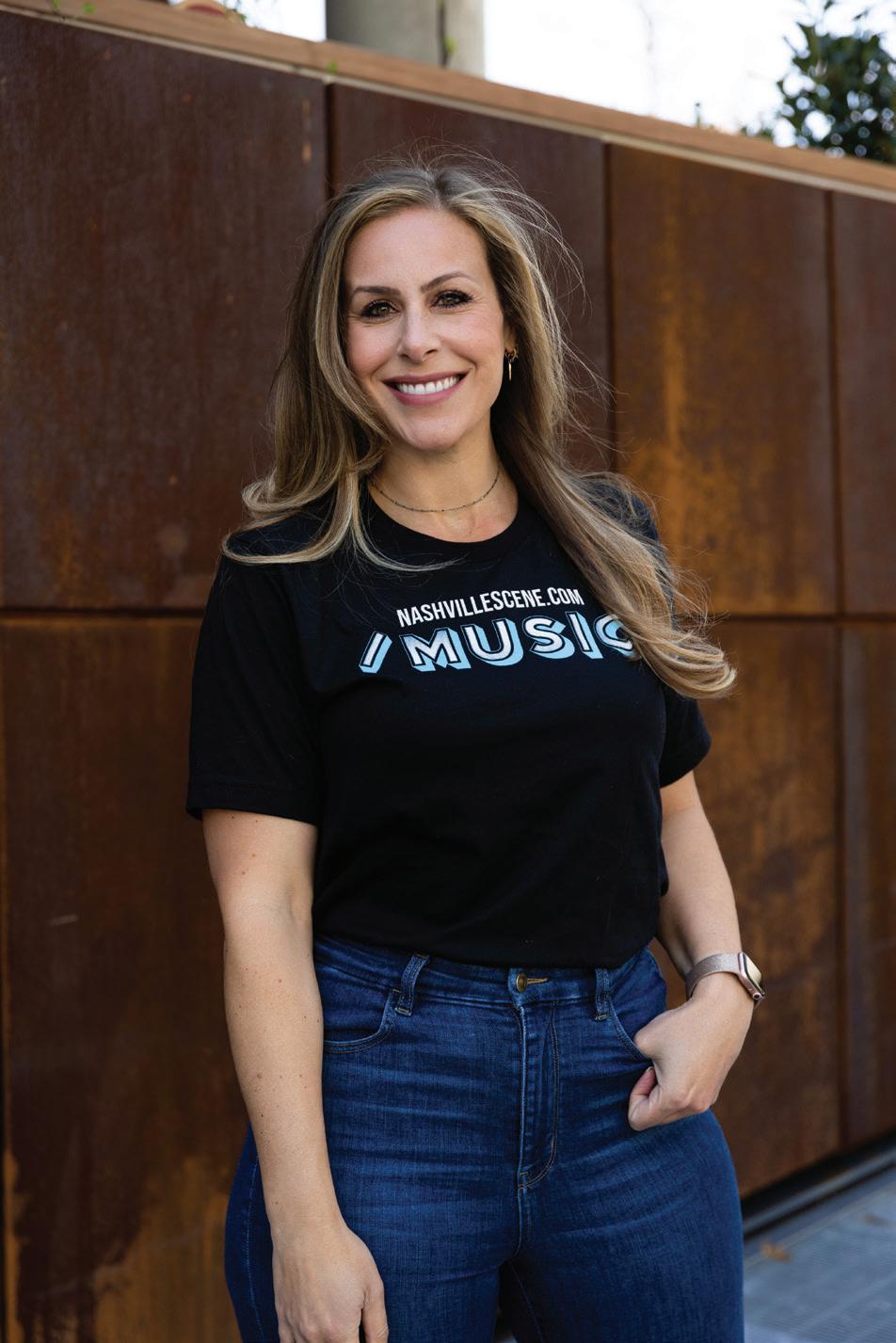

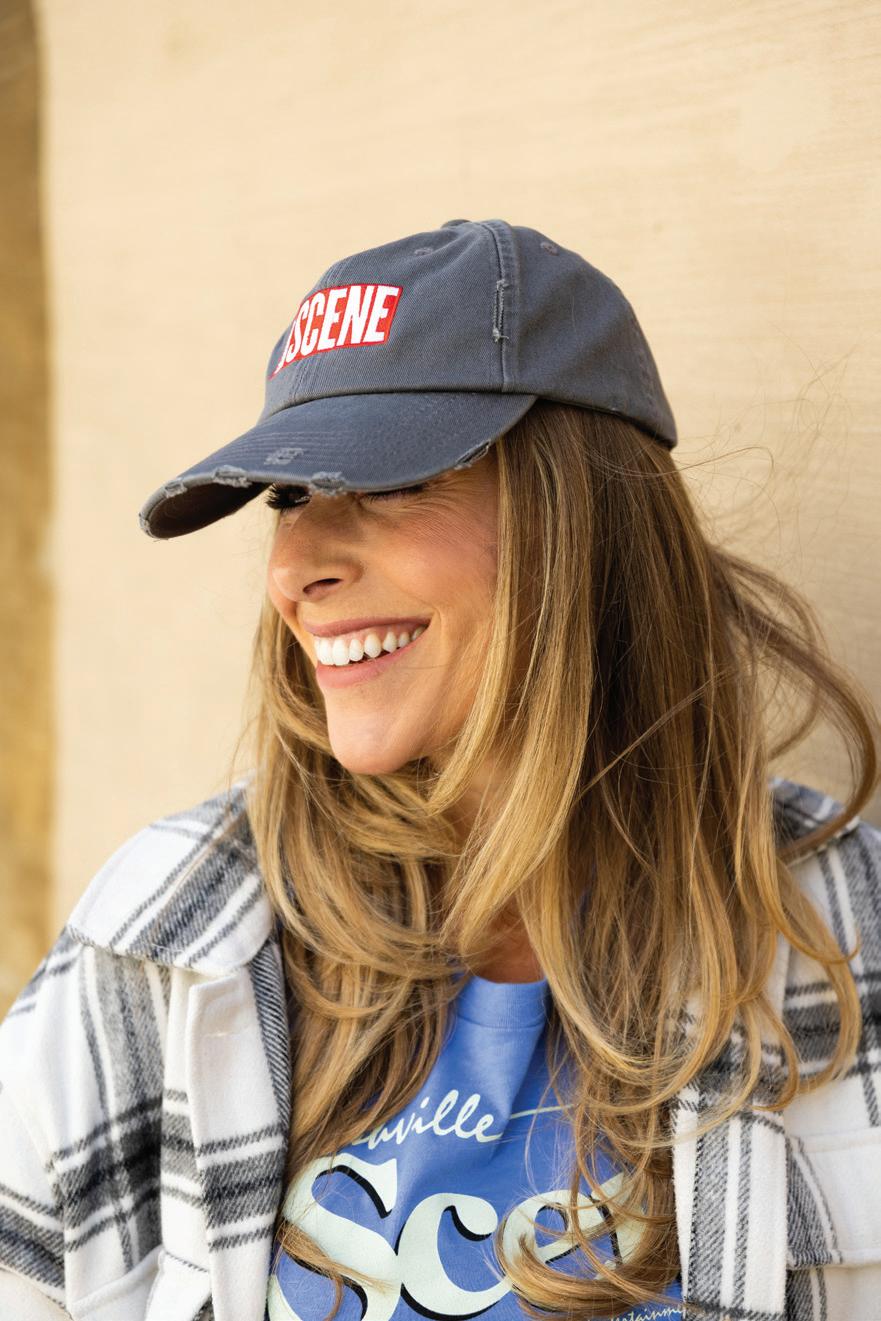
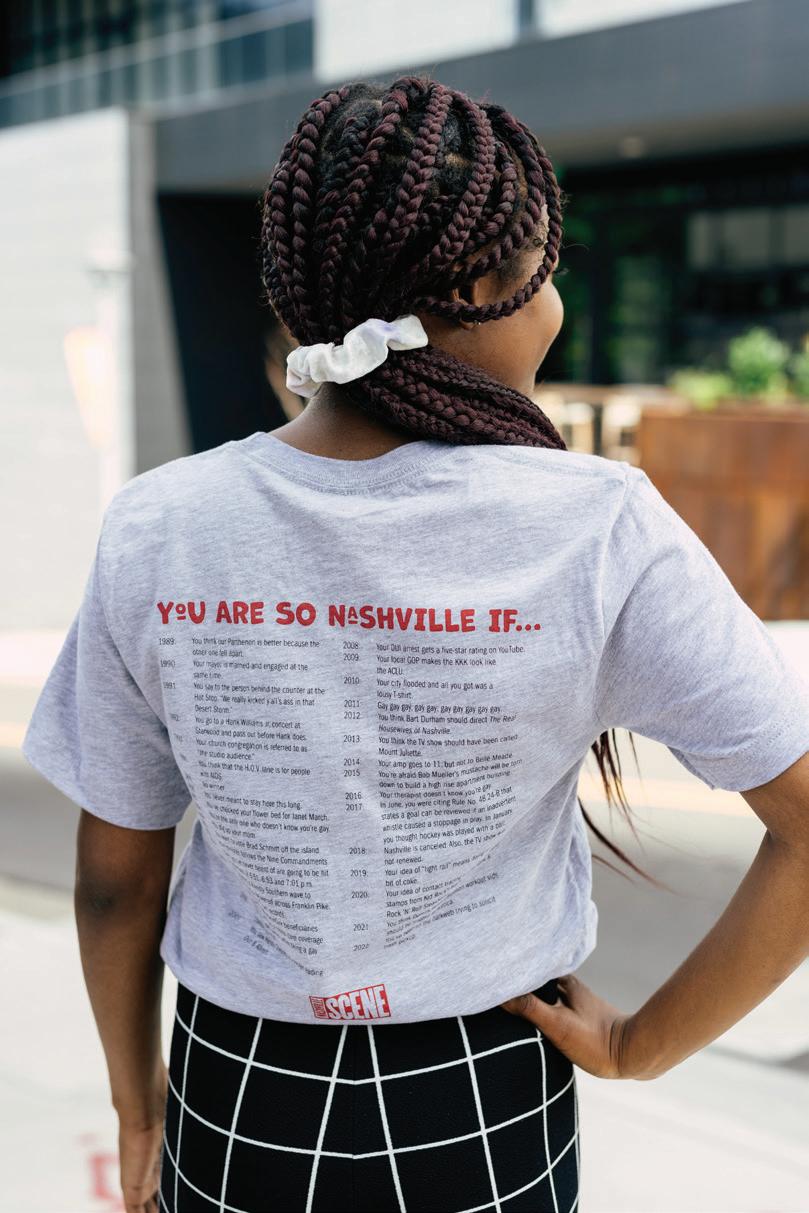

Now in their forever home minutes east of the airport in Mt. Juliet, Third Coast Salt will debut two of the best lasers in the industry, the Ultra and Clarity Two, with full certification and advanced training on February 1.
The Ultra resurfaces the face, helps with acne scaring, hyperpigmentation, melasma and an overall glow as well as hair rejuvenation. The Clarity Two does laser hair reduction. Look for Third Coast Salt’s “Love Lasers” and unique couples date escape Valentine’s Day promotions.
“Let 2023 be the year of self care and self love,” Arnold says. “Trust Third Coast Salt with your skin, body, mind and health.”

living well 2023 Advertorial 1/4B AD
REP YOUR CITY REP YOUR CITY REP YOUR CITY REP YOUR CITY REP YOUR CITY REP YOUR CITY REP YOUR CITY REP YOUR CITY Shop the Scene! WINNER OF BEST SPA A full service day spa... just minutes from Nashville. • Skincare (Laser, Waxing/Brazilian and so much more) • Microblading • Lamination & Lash Extensions • Solo and Couples Massage • Sweat Therapy & Salt Therapy • Reiki www.thirdcoastsalt.com 615.200.6365 Follow us
Photo by Southern Social









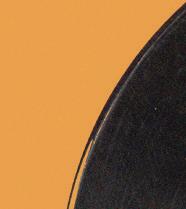





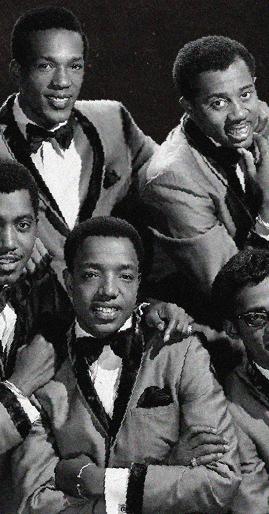

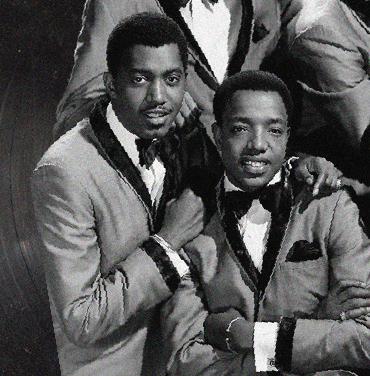


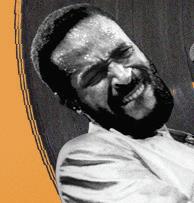




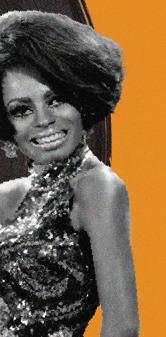





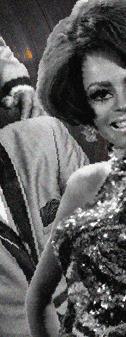







































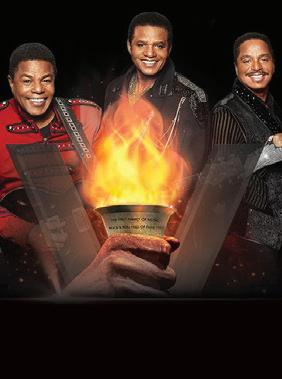



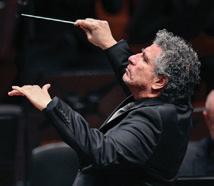

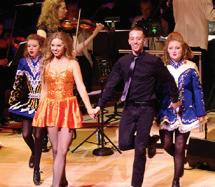




Live at the Schermerhorn *Presented without the Nashville Symphony. coming soon WITH SUPPORT FROM BUY TICKETS : 615.687.6400 NashvilleSymphony.org/Tickets WITH THE NASHVILLE SYMPHONY Nathan Aspinall, conductor Feb. 9 to 11 Giancarlo Guerrero, music director LATIN FIESTA! MUSIC OF RAVEL, MÁRQUEZ & YI with the Nashville Symphony Giancarlo Guerrero, conductor Anne Akiko Meyers, violin Feb. 3 & 4 MAKAYA M c CRAVEN: IN THESE TIMES Feb. 5 GLADYS KNIGHT Feb. 14 GUERRERO CONDUCTS AN AMERICAN IN PARIS Feb. 23 to 25 KODO ONE EARTH TOUR 2023: TSUZUMI Feb. 27* CELTIC JOURNEY March 14 WAR March 15* RATATOUILLE IN CONCERT March 17 to 19 THE AARON DIEHL TRIO April 2* TROUPE VERTIGO March 23 to 25 BUY MORE SAVE MORE Presented without the Nashville Symphony POPS SERIES PARTNER
CRITICS’ PICKS
THURSDAY / 1.26
MUSIC [THE FREAKS COME OUT AT NIGHT]
GEL W/BIG LAUGH
Less than three months after a triumphant set opening for Ceremony at Third Man, New Jersey’s Gel is returning to Music City. Self-proclaimed purveyors of “hardcore for freaks,” they make a brand of distorted maniac thrash that has been one of the high points of the most recent wave of young East Coast rippers. They’re a rare marriage of clever, thoughtful lyricism and earth-scorching punk riffs. Their tourmates, Milwaukee’s Big Laugh, will be making their first trip to Nashville. Based on the strength of their Manic Revision 7-inch — a bare knuckle-slammer reminiscent of Reaganera Boston hardcore and U.K. fastcore forefathers Heresy — Big Laugh has earned a forthcoming LP on Revelation Records. The melodic blitzkrieg of hometown trio Bazookatooth will set the night off, so show up early. As always at Drkmttr, all ages. 7 p.m. at Drkmttr, 1111 Dickerson Pike P.J. KINZER
R.E.N W/NOTBRAX & LADY IN THE ATTIC
Thanks to the crew at the recurring pop showcase Housequake, I got hipped to R.E.N, whose EP Sorry I Hesitated was one of the most fascinating things I heard in 2022. It’s five tracks of exceptionally rich, emotionally complex R&B that sounds like it’s from the future while remaining grounded in the stuff writers have been trying to grapple with in song for time out of mind, like maintaining healthy relationships with yourself and others. She’s headlining her own show Thursday at The East Room with two other acts in the general R&B sphere whom you’ll want to get to know. In December, Notbrax released drowning in the thought of you, a collection of soulful jams shot through with sounds that come across as damaged, intensifying the melancholy cant of the lyrics. Rounding out the lineup is Lady in the Attic, a duo who played their first show with a full band back in the fall; their recent single “Hex Girl” backed
arts series — including innovative dance, thought-provoking theater and even family shows. And this weekend, the nonprofit kicks off its new dance programming with MOMIX’s Alice. Established in 1981 by choreographer Moses Pendleton, MOMIX is widely known for its eye-popping visuals — merging everything from dance, mime work and props to colorful costumes, lighting and projected imagery. Inspired by Lewis Carroll’s Alice’s Adventures in Wonderland, this dreamy new production is described as “a mind-bending adventure through a fantasy world of illusion, acrobatics and whimsy.” It’s an auspicious start to the upcoming dance season, which includes the celebrated international companies Ballet Hispánico (performing Annabelle Lopez Ochoa’s explosive Doña Perón) and the Scottish Ballet (with its acclaimed staging of The Crucible). Local dancers also are invited to take part in an advanced-level masterclass with MOMIX company members at TPAC’s Rehearsal Hall on Saturday. Jan. 27-28 at TPAC’s James K. Polk Theater, 505 Deaderick St. AMY STUMPFL
[GETTING IT RIGHT]
MUSIC
RYAN SCOTT
with “Angelwalker” showcases their hypnotic approach. 8 p.m. at The East Room, 2412 Gallatin Ave. STEPHEN TRAGESER
MUSIC
[SOUL CREATURE SUPREME] RYAN SCOTT
In a city filled with singers and guitar players, recent transplant Ryan Scott stands out in sublime fashion. The Brooklyn stalwart relocated to Nashville recently
and has quickly established himself as one of the most exciting R&B artists in town, serving organic soul so freaky and funky it makes blues guitar exciting again. You’ll never know what you’ll dig up in the mud, and Scott seems to have found something special in the banks of the Cumberland River. On the heels of his November album, Cookies, Scott continues to push roots music into ever more diverse territory with head-bop-inducing grooves. “Brush Your Teeth” is especially earthy, showcasing Scott’s evocative slide guitar. Backed by an exemplary band, Scott’s passionate vocals flow over a cascade of rhythm interjected by fiery squawks of electric guitar. His chops will be on full display in celebration of his 40th birthday bash at one of the finest local haunts in town. 8 p.m. at Dee’s Country Cocktail Lounge, 102 E. Palestine Ave.
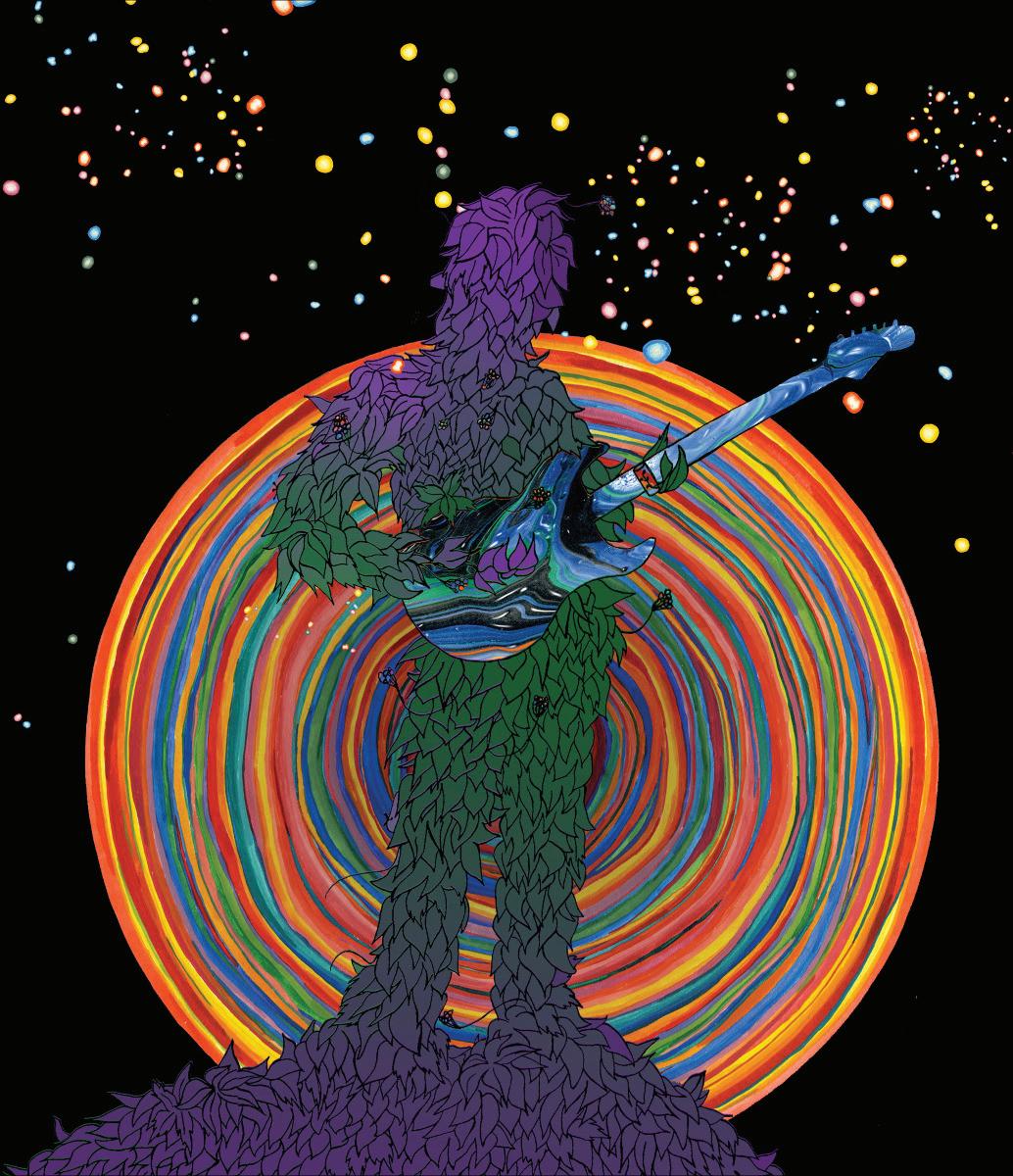 JASON VERSTEGEN
JASON VERSTEGEN
FRIDAY / 1.27
DANCE
[THROUGH THE LOOKING GLASS] MOMIX PRESENTS ALICE

Last
CAITLIN ROSE
In November, Caitlin Rose released her third LP Cazimi, which followed up 2013’s The Stand-In. Calling the album “long-awaited” isn’t incorrect — in interviews, Rose has explained that not only was there one full previous version that was scrapped, but also that the basic tracking was finished just as the pandemic dropped down. But focus too much on the time gap and the delays, and you miss the point that the record is the result of continual growth and evolution — an outstanding collection of songs that are rich, funny, candid and sad, with tinges of country, New Wave and more. Not for nothing, our writers picked it as one of the year’s best releases. She’ll bring her band to The Blue Room for a full-bore celebration, along with The Kernal, who released his own excellent and intriguing Listen to the Blood last year as well. 8 p.m. at The Blue Room at Third Man Records, 623 Seventh Ave. S. STEPHEN TRAGESER
FILM
[EYELINER, HAIRSPRAY AND FANGS] THE LOST BOYS
The Lost Boys is a swoon fest for fans of ’80s teenage scare-coms. Who can resist flesh-eating vampires on motorcycles? I’m a sucker for campy horror flicks — give me gore and let the blood flow like melted butter on my popcorn. Released in 1987 during the golden era of the montage, the film features heartthrobs Jason Patric and Kiefer Sutherland as fanged foes. Corey Feldman basks in his post-Goonies glory as a comicbook-wielding bat slayer. He delivers one of my favorite lines in the film: “You better get yourself a garlic T-shirt, buddy, or it’s your funeral.” The superb soundtrack features a host of covers bookended with Echo and the Bunnymen’s version of The Doors’ “People
nashvillescene.com | JANUARY 26 – FEBRUARY 1, 2023 | NASHVILLE SCENE 27
MUSIC [DARK AND DEEP]
year, the Tennessee Performing Arts Center made headlines with the announcement of several new performing
WEEKLY ROUNDUP OF THINGS TO DO
THURSDAY, JAN. 26
Dee’s Country Cocktail Lounge
MOMIX PRESENTS: ALICE PHOTO: SHAREN BRADFORD
FILM [TAINTED LOVE]
THE LIVING DEAD GIRL
While 1982 bloodbath The Living Dead Girl, from late horror maker (and occasional porn peddler) Jean Rollin, comes from France (its French title is La Morte Vivante) and is usually associated with that pulpy French genre known as fantastique, it definitely resembles the sort of messy (narratively and visually), melodramatic giallo flick that twisted Italians like Dario Argento and Lucio Fulci became notorious for churning out. All the elements are there: a lot of blood and gore, some shoddy acting, butt-bald-nekkid ladies. But this horror show also adds a love story that’s both Sapphic and tragic. When a young girl (Françoise Blanchard) with a taste for blood is awakened from her deathly slumber, it’s her childhood love (Marina Pierro) who sates her appetite by getting her fresh, luscious meat. Those who come into this one looking for a stomach-churning scary movie will get that, but you may be surprised at how this 40-plus-year-old film is yet another French portrait of a girl on fire. 9 p.m. at the Full Moon Cineplex, 3455 Lebanon Pike
CRAIG D. LINDSEY
MUSIC [PALE FIRE]

PALE LUNGS
The self-penned bio on Pale Lungs’ Bandcamp gets right to the heart of the matter: “Lush, and loud.” The quintet’s eponymous LP stays on the downtempo side for most of its 37 minutes, making the moments when gradual build-ups finally

explode feel harder-earned. On its centerpiece, “Landscape,” bells, chimes and lightly treated American Football-style arpeggios give way to booming, driving power chords — then, for the final act, the instruments drop out and a layered chorus of voices sees the song off. “Hum,” meanwhile, with its in medias res opening and swaying yet decisive gait, recalls “Moment,” a standout from contemporary emo heartthrobs Pine-
grove’s 2020 LP Marigold. From beginning to end, the vocals stay even-keeled, resisting veering into histrionics. If I didn’t know, I’d have assumed Pale Lungs were a product of Chicago, Philadelphia or another city where thoughtful, proficient bands like these grow on trees. Polyvinyl Records A&R is blowing it if they haven’t booked the next flight to BNA for this gig. Fellow Nashvillians Sewing Club — last seen opening for Motor City
post-punk greats Protomartyr
SATURDAY / 1.28
MUSIC
THE WEEKS
The Weeks’ 2023 North American tour commemorates 10 years of Dear Bo Jackson, the band’s breakthrough record and the inaugural release from the Kings of Leon-owned (and now defunct) label Serpents & Snakes. Like Kings of Leon, The Weeks are a Southern alternative-rock band with podunk origins (Serpent & Snakes’ former general manager Seth Riddle recalls accompanying the band to their hometown during the recording of Dear Bo and visiting a general store whose merchandise included “a trailer of watermelons outside and chewing tobacco in the freezer with popsicles”) and a penchant for Thin Lizzy and The Replacements. Between 2013 and 2015, The Weeks played countless shows throughout the U.S. and Europe supporting Dear Bo, a polished and mature Southern rock album whose lead single, “Brother in the Night” (ubiquitous on Lightning 100 at the time of its release) sounds like St. Paul and the Broken Bones covering Cake’s “Short Skirt/ Long Jacket” but sung instead by Isaac Brock of Modest Mouse. Not long after Dear Bo, Serpents & Snakes released The Weeks’ Buttons EP, the title track of which is a worthwhile revamp, originally released on the band’s raw and ramshackle debut album Comeback Cadillac. The song’s rousing chorus feels instantly familiar to anyone raised on ’90s alternative rock. Before the band heads out on tour, they’ll take the stage Saturday at Brooklyn Bowl. 8 p.m. at Brooklyn Bowl, 925 Third Ave. N. WILLIAM HOOKER
28 NASHVILLE SCENE | JANUARY 26 – FEBRUARY 1, 2023 | nashvillescene.com
Are Strange.” The Full Moon Cineplex, Donelson’s home of the macabre, presents The Lost Boys as part of its weekly dinner-and-amovie showings. 6 p.m. at the Full Moon Cineplex, 3455 Lebanon Pike JASON VERSTEGEN
in the fall — support, along with Better Off. 8 p.m. at The End, 2219 Elliston Place CHARLIE ZAILLIAN
[521 WEEKS LATER]
CRITICS’ PICKS
THE LOST BOYS
PALE LUNGS
PHOTO: DESTINY KELLER
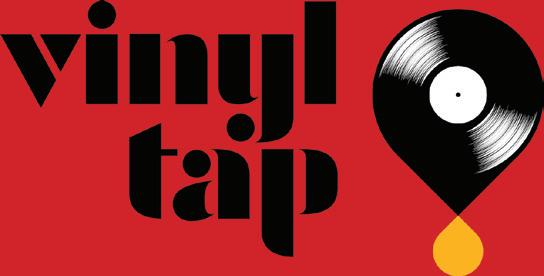















































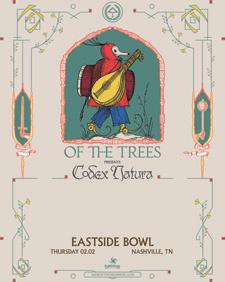





nashvillescene.com | JANUARY 26 – FEBRUARY 1, 2023 | NASHVILLE SCENE 29 Nashville’s ONLY vinyl record store with full bar and 24 seasonal craft beers on tap. 26 In Between Days: Early Alternative Classic Video Night 27 WXNA DJs 28 Hello Honky Tonk DJs 29 New Song Sundays w/ Chelsea Lovitt & Friends 30 Vinyl Bingo: Get Lucky w/ DJ Cream Jeans 31 Red McAdam & Friends 1 Nico Son, Melanie Maclaren, Ivan Theva vinyltapnashville.com 1/26 9pm Clay Lutz, The Stifftones, & Luke Woods 9pm 1999, Law of Cycles & Weathertalk 1/27 1/28 9pm Can’t Relate, Sleep City, Indigo Zebras & 95 Corolla 9pm James Freeborn & Guests 1/29 4pm Springwater Sit In Jam FREE 2/1 5pm Writers @ the Water Open Mic OPEN WED - SUN 11AM - TIL LATE NITE OPEN MON & TUE 11AM - TIL 6PM DOWNTOWN Museum Membership Members receive free Museum admission and access to weekly programming, concert ticket presale opportunities, and much more. JOIN TODAY: CountryMusicHallofFame.org/Membership Check our calendar for a full schedule of upcoming programs and events. Saturday, January 28 SONGWRITER SESSION Wynn Varble NOON · FORD THEATER Sunday, January 29 MUSICIAN SPOTLIGHT Brittany Haas Tributes Ed and Ella Haley 1:00 pm · FORD THEATER Saturday, February 4 NASHVILLE CATS Herb Pedersen 2:30 pm · FORD THEATER Sunday, February 5 MUSICIAN SPOTLIGHT Bob Minner 1:00 pm · FORD THEATER Saturday, February 11 SONGWRITER SESSION Jeff Cohen NOON · FORD THEATER Sunday, February 12 MUSICIAN SPOTLIGHT Mark O’Connor 1:00 pm · FORD THEATER Saturday, February 18 CONVERSATION AND PERFORMANCE The Life and Music of Dick Curless 2:30 pm · FORD THEATER Sunday,
19 MUSICIAN SPOTLIGHT Rachel Loy 1:00 pm · FORD THEATER Saturday,
25 SONGWRITER SESSION Terry McBride NOON · FORD THEATER This week at... THEBLUEROOMBAR.COM @THEBLUEROOMNASHVILLE 623 7TH AVE S NASHVILLE, TENN. Rent out The Blue Room for your upcoming event! BLUEROOMBAR@THIRDMANRECORDS.COM CAITLIN ROSE with THE KERNEL 1/27 FRIDAY with JUNE McDOOM NICK HAKIM 1/28 SATURDAY VALERIE JUNE reading, signing, & kids’ activities 1/29 SUNDAY with MAGGIE MILES SAM PALLADIO 1/26 THURSDAY BOOK LAUNCH “SOMEBODY TO LOVE” JAN 26 Mitch the Hero FREE show JAN 27 Matt Mann Birthday Bash JAN 28 Ivy Lab FEB 2 Of the Trees FEB 5 Supersuckers FEB 14 Elsa Esnoult FREE show FEB 17 New Wave Order FEB 22 Eric Bellinger FEB 25 Top 8 MAR 5 Emotional Oranges MAR 7 Chuck Prophet & the Mission Express MAR 19 Clan Of Xymox MAR 21 Real Friends & Knuckle Puck MAR 22 Mod Sun MAR 24 Marauda: Rage Room Tour MAR 31 IV & the Strange Band APR 6 Elise Trouw: Losing Sleep Tour APR 20 Molchat Doma APR 21 Microwave JAN 26 Sam Hawksley JAN 28 Eastside Jam - Revisited FEB 1 Joe McMahan Quartet FEB 2 Coyote Motel FEB 8 Kevin Gordon Low Volume Lounge 8PM Free please mind the tip hat! 1508A Gallatin Pike S Madison TN 37115 @eastsidebowl | @eastsidebowlvenue 2022 New Wave Order 2/17 Eric Bellinger with Kyle Banks and Gogo Morrow 2/22 Ivy Lab: Infinite Falling Ground Tour 1/28 Of the Trees 2/2 Matt Mann Birthday Bash feat. Dusty Bo & the Contraband, Matt Mann & the Shine Runners & Dirt Reynolds 1/27 Supersuckers with Franklin County Trucking Co. and Volk 2/5
February
February
FILM
WEEKEND CLASSICS: IKIRU
Now, I haven’t seen Living, the Bill Nighy movie opening this week at the Belcourt (read our review in this week’s film section). But I hope it’s half as hilarious, heartfelt and human as the movie it’s based on: Akira Kurosawa’s black-and-white 1952 classic Ikiru. This two-and-a-half-hour film (partly inspired by Leo Tolstoy’s novella The Death of Ivan Ilyich) stars Kanji Watanabe as an aging, terminally ill bureaucrat trying to figure out how he’s gonna spend his last months on earth. Proving once again that he was more than a maker of samurai films, Kurosawa beautifully constructed a darkly comic, ultimately moving meditation on living until you die — and staying caring and compassionate before you do. (After all, the title is “to live” in Japanese.) If you’re planning to check out Living this weekend, you may wanna familiarize yourself with the original — which the Belcourt will be showing in glorious 35 mm! — while you’re down there. Jan. 28-29 at the Belcourt, 2102 Belcourt Ave. CRAIG D. LINDSEY
THE HARLEM GLOBETROTTERS
The wide-open, fast-paced nature of basketball has always allowed for a certain quality of entertainment that other team sports lack. It’s strange to think now, but there was a regrettable bygone era when orthodoxy (and racism) kept streetball phenomena like no-look passes and two-handed jams off the NBA courts. Meanwhile, The Harlem Globetrotters were embracing high-velocity, abovethe-rim game decades before The Association made ankle-snapping crossovers, flashy dunks and 30-foot jumpers the norm. The Globetrotters created the stylebook on showtime basketball, injecting a healthy dose of comedy and sharing a twin spirit with pro wrestling’s cabaret athleticism. The team’s nearly annual winter sweep through the South has become a multigenerational tradition for fans looking for some full-court high jinks and highlights. 2 and 7 p.m. at Bridgestone Arena, 501 Broadway P.J. KINZER
[MOVE IT OR LOSE IT]
MUSIC
NIGHT MOVES
With what we’ve survived these past three years — hell, since November ’16 — it’s not too early to nostalgia trip on the comparative tranquility of the Obama era. Woozily paced, with synthesized strings and coolly wistful singing, “Fallacy Actually” and “Innocent Looking as Candy” — which open Twin Cities combo Night Move’s The Redaction — recall Grizzly Bear, Mac DeMarco, mid-period Strokes and the High Maintenance closing-credits music. (The last is a web series-turned-HBO show about a have-bike, will-travel Williamsburg weed man, for those with fuzzier memories.) Further listens, however, reveal a more versatile band than assumed. The four-song set saves its best for last with “Feel Another Day,” tapping into a lysergic cosmic-country vibe both unexpected and welcome. Portland, Ore., dream-pop duo Shady Cove supports. 8 p.m. at Drkmttr, 1111 Dickerson
Pike CHARLIE ZAILLIAN
[GREEN TWINS, BLUE ROOM]
MUSIC
NICK HAKIM
If you’ve never heard him, you’ll un-
derstand the hype when Nick Hakim opens his mouth. The ascendant Brooklynite has managed to stay just on that side of superstardom despite a signature breakout, “I Don’t Know,” released almost a decade ago during his time at Berklee College of Music. The catchy, soulful slow jam is just an intro. Dig deeper into his discography and keep turning up gems, from “Lift Me Up” to “Pour Another” to “M1,” a highlight of 2022’s COMETA. Recent albums have leaned into the staticky lo-fi that’s become a Hakim signature and have become reliable sources for mood-shifting potential. Songs can bring a drowsy malaise — when the dose is too high — or tingle with warmth, carried by his vocals. Hakim’s voice can glide on top of stripped-down drums and muddy synth, or waver with so much emotion that he sounds like he’s singing just for you. Or maybe just for himself. Enough have heard, apparently, to sell out his show at The Blue Room, where Hakim plays ahead of a European tour. 7 p.m. at The Blue Room at Third Man Records, 623 Seventh Ave. S. ELI MOTYCKA
recollections with historical narrative and additional interviews. The authors will be appearing at a book signing Saturday afternoon at Vanderbilt Bookstore, where Alan Stoker will read passages from the book, followed by a Q&A period with both authors. 2 p.m. at Vanderbilt Bookstore, 2501 West End Ave. DARYL SANDERS
[JAZZ IN FLUX]
MUSIC
JONATHAN WIRES QUARTET
The melodies on bassist and educator Jonathan Wires’ 2016 album Weaving come out of the standard 1960s jazz book, which means tunes like “In Flux” and “Waver” remind me of the work of Wayne Shorter and Miles Davis. As a well-traveled bassist whose teaching career has included stints at Middle Tennessee State University and the Nashville Jazz Workshop, Wires has a knack for composing modern jazz that stays pithy even as it explores those post-bop edges familiar to fans of Shorter and John Coltrane. Weaving is also notable for the ensemble’s masterful use of space and rhythm — the changes may be standard, but the album swings harder and more tellingly than a lot of modern jazz records. Wires possesses a bass sound that’s immediately recognizable, and his compositions have staying power. Saturday night’s quartet show at Rudy’s will give the group a chance to stretch out. Wires is reportedly working on a forthcoming record — it’s great to see Nashville jazz in flux and thriving. 11 p.m. at Rudy’s Jazz Room, 809 Gleaves St. EDD HURT
SUNDAY / 1.29
THEATER
[THE POWER OF COMMUNITY] STEAL AWAY
popular ECHO chamber music series, Steal Away not only manages to shine a light on the importance of community — it also celebrates the actual people within it. 7 p.m. at The Parthenon at Centennial Park, 2500 West End Ave. AMY STUMPFL
MUSIC
[INTERNATIONAL SPACE] COUNTRY MUSIC FROM OTHER COUNTRIES
Nearly a century after the heyday of country music pioneers Jimmie Rodgers and Gid Tanner, country keeps evolving in unexpected ways. In an era when commercial country — the stuff made for hardcore fans of unabashedly mercantile tunes and concepts — draws from hip-hop and many varieties of rock, innovative musicians are busy synthesizing country with traditions drawn from around the globe. Sunday’s show is being staged by AfricaNashville, an organization that’s the brainchild of dancer and choreographer Windship Boyd and saxophonist Jeff Coffin. AfricaNashville brings Nashville musicians and students together with the rich music and culture of West Africa via events and workshops. It’s a superb bill that features Mavericks singer Raúl Malo along with dance troupe Yeli Ensemble. Also appearing will be composer Wu Fei, who is a master of the guzheng, a 12-string zither. Wu Fei has recorded with musicians as disparate as avant-garde guitarist Fred Frith and Americana singer and banjo player Abigail Washburn. The trio of saxophonist Jeff Coffin, drummer Jordan Perlson and bassist Viktor Krauss rounds out the bill. Can country music thrive in international space? I say yes, and this show is proof. 7 p.m. at 3rd and Lindsley, 818 Third Ave. S. EDD HURT
BOOKS
THE JORDANAIRES: THE STORY OF THE WORLD’S GREATEST BACKUP VOCAL GROUP

After the Fisk Jubilee Singers, The Jordanaires are the most important vocal group in Nashville music history. Like the Jubilee Singers, The Jordanaires came out of a gospel tradition, but the quartet etched their name in history with their work on secular records, most notably on recordings by Elvis Presley and Patsy Cline. Their work with Presley and Cline, however, was just a small part of their legacy, as is well-documented in a new book, The Jordanaires: The Story of the World’s Greatest Backup Vocal Group. The book, which is credited to the late Jordanaire Gordon Stoker along with Michael Kosser and Alan Stoker, recounts the group’s story mostly through Gordon Stoker’s own words, drawn from extensive interviews he did throughout his lifetime. Author-songwriter Kosser and Stoker’s son Alan, who is the curator of recorded sound collections at the Country Music Hall of Fame and Museum, frame the elder Stoker’s
If you somehow missed the 2021 premiere of Steal Away, you’re in luck — this uniquely uplifting work returns for one night only Sunday at The Parthenon. Created by Emmy-nominated composer Dave Ragland and noted choreographer Shabaz Ujima, Steal Away is billed as a “contemporary music-dance-opera hybrid inspired by traditional spirituals and art songs.” The fascinating piece takes on universal themes of struggle, hope and renewal, all through the lens of African American spirituals. Best of all, the collaborative project showcases a diverse and multigenerational group of local artists, representing companies such as Inversion Vocal Ensemble, Diaspora Orchestra and shackled feet DANCE! Presented as part of the Centennial Park Conservancy’s
MONDAY / 1.30
FILM [TALKING TO THE WIND] IN THE COURT OF THE CRIMSON KING: KING CRIMSON AT 50

During this documentary on King Crimson, the band’s guitarist and guiding force Robert Fripp relates a quote he found inspiring: “If you have an unpleasant nature and dislike people, it’s no barrier to work.” That may explain why two members of the pioneering prog-rock group quit the same year as the release of its 1969 debut album. Fripp, now an elderly man always dressed in a vest and necktie, comes across somewhere between an eccentric banker and cult leader. Director Toby Amies, who filmed during King Crimson’s pre-COVID
IN THE COURT OF THE CRIMSON KING: KING CRIMSON AT 50
30 NASHVILLE SCENE | JANUARY 26 – FEBRUARY 1, 2023 | nashvillescene.com CRITICS’ PICKS nashvillescene.com | JANUARY 26 – FEBRUARY 1, 2023 | NASHVILLE SCENE 30 CRITICS’ PICKS
[SOURCE MATERIAL]
SPORTS [HUMAN HIGHLIGHT REELS]
[AIRE JORDANS]
Sing Me Back Home: Folk Roots to the Present EXHIBIT NOW OPEN





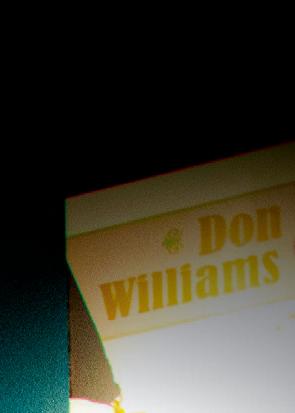






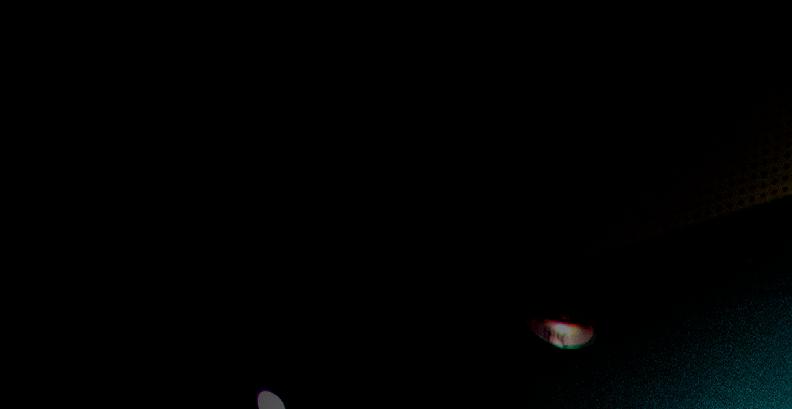












DOWNTOWN VISIT TODAY
BE THE MEMORY. BE THE SUNSHINE .
50th anniversary tour, shies away from giving a thorough history of the band’s many incarnations or explaining its music. Instead, Fripp and other members describe the music’s technical challenges. (Fripp, who turns 77 in May, still practices four hours a day to keep up.) Two interviews with superfans — one a nun in Oslo, Norway! — are awkwardly stitched into the film, as is footage of drummer Bill Rieflin shortly before his death in 2020. All the same, In the Court of the Crimson King: King Crimson at 50 pays homage to a band that has always kept experimenting, while getting as frank about the difficulty of working with Fripp as a film his own record label produced possibly could. 3:45 and 8 p.m. at the Belcourt, 2102 Belcourt Ave. STEVE ERICKSON
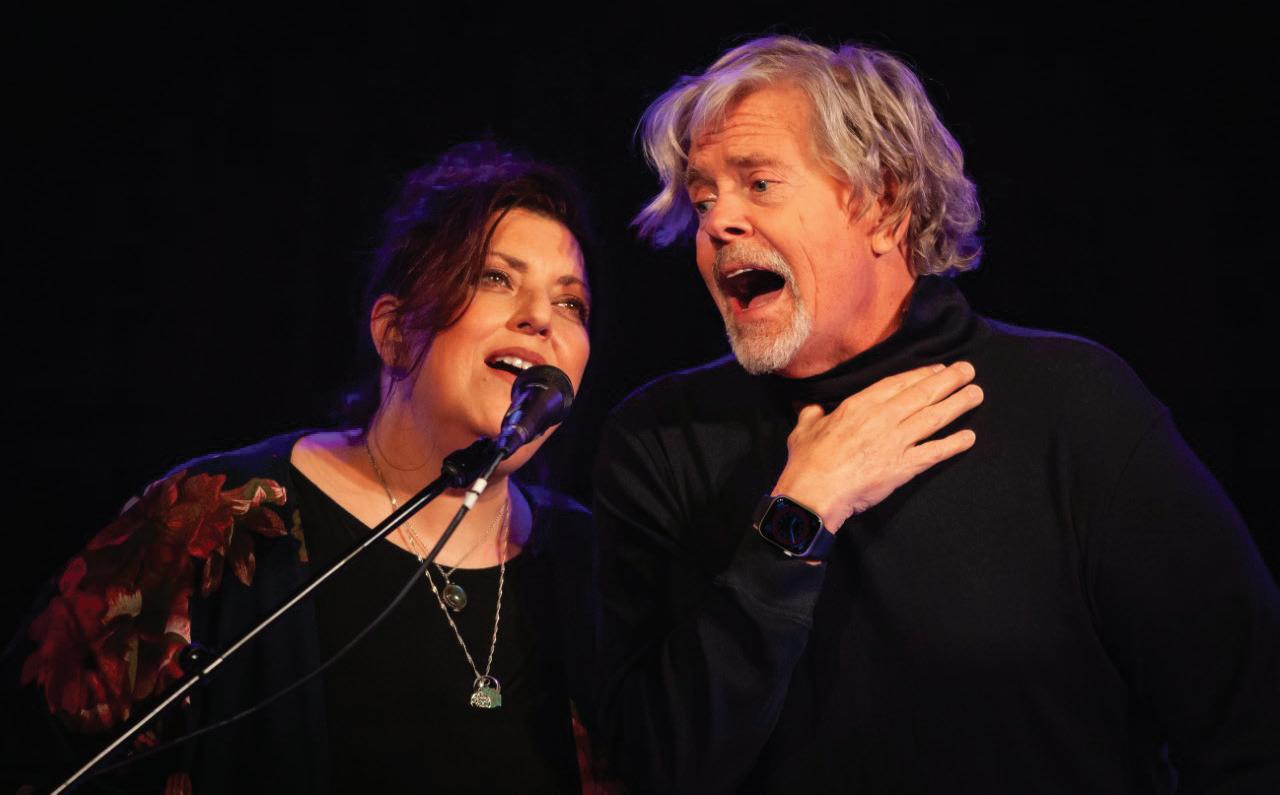
TUESDAY / 1.31


MUSIC
[HEAVY LIFTERS] THE HERCULEONS


When vocalist-bassist John Cowan of New Grass Revival and Doobie Brothers fame teamed up with acclaimed vocalistviolinist Andrea Zonn during the pandemic, the result was a supergroup of sorts, The HercuLeons. The two stellar vocalists are joined in the group by four other world-class musicians: guitarist Tom Britt, keyboardist Jody Nardone, drummer Andy Peake and multi-instrumentalist John Mock. The HercuLeons wrap up a four-show residency at 3rd and Lindsley on Tuesday and will be performing material from their forthcoming album produced by Wendy Waldman, which blends Appalachian, soul, rock and jazz into a sound they call “Pop Americana.” Zonn, who is best known as a backing musician and singer for James Taylor, Vince Gill, Lyle Lovett and others, credits Cowan with the band’s name. “Johnny C came to me and said he wanted to be called the HercuLeons,” she recalls. “It’s a hint at musical ‘heavy lifting’ and a big ol’ musical nod to the great and soulful Leon Russell,” who was a mentor to Cowan. Each of the shows in the residency has featured special guests, and for the finale, the band will be joined by another heavyweight singer, songwriter and musician, Darrell Scott (who features later in this section). 8 p.m. at 3rd and Lindsley, 818 Third Ave. S. DARYL SANDERS
WEDNESDAY / 2.1





MUSIC
DESTROY LONELY

If you hear “Bane,” one of Destroy Lonely’s biggest songs, and are immediately overrun with mental images of TikTok teens doing the reverse trend to his hypnotic production, don’t let that dissuade you from taking a deeper dive into his music. Since the release of that song and its internet virality, the 21-year-old rapper has signed to Playboi Carti’s record label and started solidifying his sound. Despite the obvious influence of Carti’s psychedelic, strippedback approach, Destroy Lonely separates himself from his predecessor with vocal clarity and brightness, bringing a new angle to the increasingly popularized sound. With his hard-hitting 808s and shimmery, intoxicating synths, his live show is bound to be a high-energy evening. Coming off the success of his 2022 album NO STYLIST, Destroy Lonely will be accompanied by his fellow Atlanta natives Homoxide Gang and DJ Blak Boy. 8 p.m. at Marathon Music Works, 1402 Clinton St. CONNOR DARYANI

MUSIC




[BEAUTY IN THE BLEAKNESS] DARRELL SCOTT

Few people embody the Southern Gothic starkness of Appalachia like four-time Grammy nominee Darrell Scott, whose song “You’ll Never Leave Harlan Alive” brought the Kentucky Rising benefit to a cold stop last year when Patty Loveless and Chris Stapleton delivered it at Lexington’s Rupp Arena. The song describes the bleak life of a coal miner, and its twisted melody conveys the hopelessness of anyone who dreams of leaving but knows their fate is their own coal mine, black lung or a city left without jobs or hope. Scott, a member of Band of Joy alongside Robert Plant, Patty Griffin and Buddy Miller, understands the soul echoes that lend Americana a deeper resonance. He’s collaborated with or written songs for a host of artists including Steve Earle, Emmylou Harris and The Chicks, but he’s even more compelling on his own. Spare, haunted, haunting, he’s a craftsman whose songs cut into your soul like Hank Williams — whom he honored in the Grammy-winning 2007 song “Hank Williams’ Ghost.” 9 p.m. at The Bluebird Cafe, 4104 Hillsboro Pike HOLLY GLEASON

32 NASHVILLE SCENE | JANUARY 26 – FEBRUARY 1, 2023 | nashvillescene.com 4210 Charlotte Ave. | 615 - 678 - 4086 ottos nashville.com Cocktails Small Bites Intimate Atmosphere @THEGREENLIGHTBAR | THEGREENLIGHTBAR.COM | THEGREENLIGHTBAR@GMAIL.COM JAN 28 FEB 11 FEB 1 FEB 15 FEB 4 FEB 22 FEB 8 FEB 25 Sam Hayes 3pm DJ Party 7pm Callie Prince 3pm Carly Teft 7pm Kaleb Sanders 7pm Max King 3pm Michael Kight 7pm Zach Stone 7pm Tyler Downs 3pm 833 9TH AVE S | NASHVILLE, TN 3720 CRITICS’ PICKS
[NEVER MOSH ALONE]
THE HERCULEONS
PHOTO: MADISON THORN






















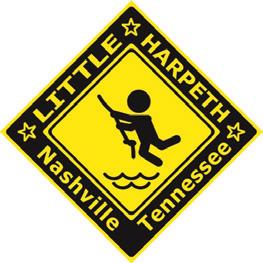
Get all the spicy details at hotchickenweek.com #HotChickenWeek23 with $7 hot chicken specials that will set your world on fire! January 30 - February 5 Flip the page to see all the spicy Hot Chicken Week deals! WARM THE CLUCK UP! #HotChickenWeek23 1. Snap a pic of the spicy deliciousness you’re about to enjoy 2. Share on social media and tag #hotchickenweek23 and @ nashvillescene 3. Chow down and try not to drool! Pics or it didn’t happen! Vote for your favorite dishes in three categories Who will be crowned the champion? That’s up to you! •Best Traditional Dish •Best Overall Dish •Most Unique Dish JOIN US FOR THE OFFICIAL KICK-OFF PARTY! Monday, January 30 | 5-7pm 4210 Charlotte Ave Featured drink specials: $5 house wine $1 off drafts and wells $6 house margarita Little Harpeth’s Chicken Scratch Pilsner sampling No RSVP required Free to attend GET FIRSTYOUR WEEKCHICKENHOT DISH! scan to vote! BROUGHT TO YOU BY





BROUGHT TO YOU BY Get ready to sizzle and sweat with $7 hot chicken specials for one week only. But be warned, hot chicken is no joke! Spice up your life! Mouth on fire? Cool down with an ice cold beer! Ask your server about Chicken Scratch Pilsner specials at participating restaurants. January 30 - February 5 HotChickenWeek.com #HotChickenWeek23 Planyour route! You can feel the burn no matter where you are around Nashville! Visit hotchickenweek.com for the interactive map! Five alarm flavors Turn up the heat It’s getting hot in here Ring of fire Hot stuff Heat wave Drop it like it’s hot Light my fire
51 NORTH TAPROOM
Taproom Hot Crispy Chicken & Pickles
Crispy chicken and pickles seasoned with the taproom hot seasoning and served on white bread with choice of homemade blue cheese or buttermilk ranch.

BAD AXE THROWING NASHVILLE

The 81
House tenders served Nash style with diced pickles and spicy maple drizzle, served on top of a garlic naan flatbread with Nash hot cheese sauce.

BISHOP’S MEAT & THREE
Leg Quarter & 2 Sides
Bishop’s meat & 3’s hot chicken leg quarter with two savory southern sides of your choice.

BOLTON’S FAMOUS SPICY CHICKEN & FISH
Plant Based Hot Chicken & Fries

We can’t leave out the vegetarians! Now, you can enjoy Bolton’s Famous Spicy Chicken & Fish’s NEW plant based hot chicken nuggets or patties with a side of fries! For the meat lovers, chow down on their hot chicken quarter (fries not included).
BROWN’S DINER
Visit hotchickenweek.com for details.
BUDS & BREWS
Hot Chicken Tenders
Two chicken tenders generously tossed in a house made Nashville hot sauce, served with sidewinder fries.

CITY WINERY
Nashville Hot Chicken & Waffles

Enjoy a soft Belgian waffle with a crispy fried chicken breast covered in a house made and mouthwatering spicy sauce. Finish it off with some sweet and spicy syrup. It’s a southern staple done the Nashville hot way!
EL PASEO CANTINA
Hot Chicken Torta
A fried chipotle hot chicken breast with habanero coleslaw and house made pickles on traditional Mexican bolillo bread with a side of poblano potato hash.
FAMILY TACOS
Spicy Milanesa Torta

A Mexican sandwich filled with Family Tacos’ new spicy breaded chicken breast, beans, lettuce, tomatoes, fresh guacamole and mayonnaise.
GERMANTOWN PUB
GTP Sweet-Tangy-Spicy Hot Chicken
Sandwich
Deep-fried chicken breast topped with lettuce, tomato, onion, pickles and a house-made sweet, tangy, spicy flavorful sauce, served on a
HARRIET’S ROOFTOP
Hot
Chicken Sushi Roll
A specialty sushi roll featuring fried chicken thigh rolled in house hot sauce, double fried tempura and topped with a house spicy eel sauce, house kimchee and pickle slaw.

HATTIE B’S HOT CHICKEN
Small Dark Plate
Enjoy a leg quarter with your choice of two scratch-made sides. Choose your heat level!
HIFI CLYDE’S
Hot Chicken Torta

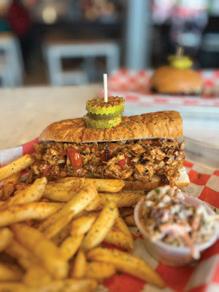

Hi-Fi Clyde’s Nashville hot chicken with spicy slaw, pickled red onion, queso blanco, mayo and tortilla chips, all on a toasted bollio bun.
THE HORN




Hot Chicken Sambusa
The Horn’s take on Nashville Hot Chicken in the form of a sambusa!

LOVELESS CAFÉ
Hot Chicken Drumsticks
Enjoy three of Loveless Cafe’s famous fried chicken drumsticks tossed in their signature spicy sauce and served with a slice of white bread, pickles and a side of coleslaw.
MILK & HONEY
Hot Chicken & Waffles
Milk & Honey’s version of Nashville’s famous hot spicy chicken served with a homemade buttermilk waffle and maple syrup.
MIMI’S KITCHEN AT NASHVILLE
UNDERGROUND
Hot Chicken Mac n’ Cheese Skillet Mac n’ cheese topped with crispy hot chicken, pickled jalapeños, blue cheese and Nashville Underground’s house made hot honey.

MOXY ROOFTOP
Nashville Hot Chicken Sliders

Spicy fried chicken topped with shredded cabbage and habagardil pickles, served on a mini-brioche bun with hot aioli.
OTTO’S BAR

Roti Tinga Taco
Spicy tinga chicken taco on roti paratha.

PEACHTREE NEIGHBORHOOD GRILL
Hot Chicken Pita Wrap

Grilled chicken thigh meat tossed in hot sauce, wrapped in pita bread with red cabbage slaw and homemade bleu cheese sauce.
POPPY & PEEP
Nashville Hot Chicken

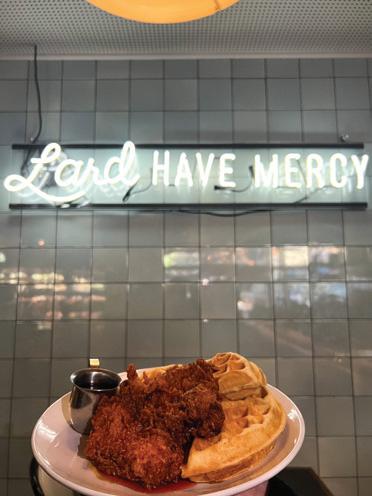

Dark Chocolate Bar

Rich and creamy 58% dark chocolate bar stone-ground with a blend of Nashville hot chicken seasonings, inspired by the original Prince’s, and topped with crispy fried breading. Caution: Hot!
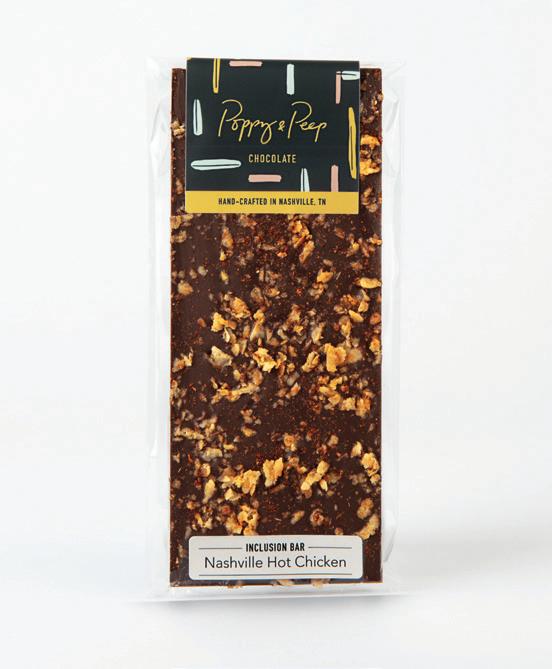
PRINCE’S HOT CHICKEN
Leg Quarter
Prince’s Hot Chicken leg quarter with bread and pickles, served with a fountain drink, all for only $7 (tax not included).
RED HOUSE CHICKEN & SHRIMP
The NashPhilly
A not-so-traditional chicken Philly sandwich featuring Red House hot chicken smothered with sautéed red onion, red bell pepper and creamy American cheese, served with seasoned Red House fries.

RED’S 615 KITCHEN
Two Tenders & Fries
Two buttermilk fried tenders with choice of spice level, served with fries.
SCOREBOARD BAR & GRILL
Hot
Chicken Tacos
Two Nashville hot chicken tacos with your chance of ranch or blue cheese and served with chips and salsa. Choose your heat level!


SLOW BURN HOT CHICKEN
Hot
Chicken Grinder
Visit hotchickenweek.com for details.






SOUL
Tenders & Fries
SOUL’S hot chicken tenders served with fries - a Nashville tradition!


STAY GOLDEN RESTAURANT & ROASTERY
Southern Staple
House made buttermilk biscuit topped with Springer mountain chicken thigh, aged white cheddar, hot honey and pickled red onion.

STOMPIN’ GROUNDS
Hot Chicken Winter
Dive into hot chicken winter with this open-faced Nashville hot chicken & biscuit sandwich made with a crispy fried chicken breast, topped with spicy sambal cheese sauce and honey pepper jelly, and served over a buttermilk biscuit.

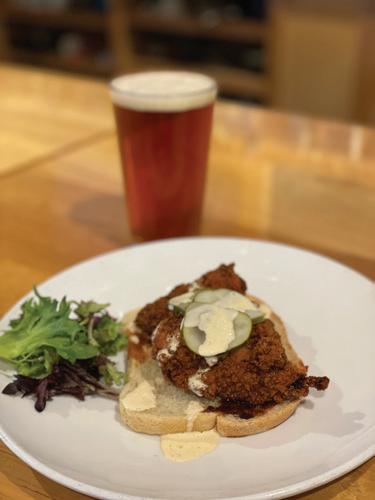
TEE LINE
Hot Chicken Nachos
Fresh blue and white corn chips topped with cheese sauce, peppadew peppers, pickles, fresh jalapenos and Nashville hot chicken.
WALDO’S CHICKEN & BEER




Fowl Mouth Sandwich
Fried chicken thigh topped with habanero oil, cheddar cheese, jalapeño slaw, mayo and comeback sauce all on a toasted bun.
WILCO FUSION GRILL


Cowboy Chicken Arepa

Golden fried corn cake, Nashville hot chicken, pico de gallo, cheese mix , fried sweet plantain, coleslaw and pink sauce.

Things are heating up in Nashville! Head to any of these participating restaurants for $7 hot chicken specials all week long. No ticket required, just show up and spice up your life! Can you handle the heat?






36 NASHVILLE SCENE | JANUARY 26 – FEBRUARY 1, 2023 | nashvillescene.com NASHVILLE NASHVILLE NASHVILLE NASHVILLE FULL BAR & RESTAURANT THE ONLY AXE THROWING BAR IN DOWNTOWN NASHVILLE #1 AXE THROWING BAR IN THE US $5 OFF Throwing with Ad www.badaxenash.com 629.203.6158 PRESENTED BY TOP 3
Cheese making is an ancient tradition founded on simply making milk last, Kurt says. In the United States, it’s a younger industry. The States also have a lot more rules around milk. American cheese has to be aged longer than 60 days when made with raw milk — a fact that prompts cheese lobbying.
a cow at 4 a.m., then again at 4 p.m. They make two hikes each day — one 20-minute trip, and another hour-and-20-minute trek, often in snowshoes — to limestone caves to turn the cheese as it cures. When it’s ready, they put the wheels of cheese (up to 16) in a basket on the back of a donkey, which brings it back to their shop.
never
gonna have
ARTS@NASHVILLESCENE.COM
Greys is full of detailed stories like this.
4101 CHARLOTTE AVE., D130
GREYSCHEESE.COM/
One of cheesemonger Michelle Muldoon’s favorites is the Tea Rose, a goat cheese covered with edible flowers and herbs from Capriole, a farm in Indiana. Tea Rose is the name of the real goat originally involved in the cheese’s production, and she’s pictured on the package. Muldoon thinks of herself as a “cheese matchmaker,” introducing people to their “soul cheeses.” Every cheese has a story, and this story has a sad twist.
“Tea Rose is no longer with us, but she was this family’s goat, so they named this cheese after her,” Muldoon says. “Her descendents are still giving milk to make the cheese today. It’s a super cute story and it reminds you that these cheeses are somebody’s life’s work.”
Greys Fine Cheese and Entertainment is the result of many lives’ work. The Memphis-based business has been on a roll, starting a cheese-board and education business in 2020, opening its first location in Memphis in 2021, and opening its Nashville location on Charlotte Avenue in late 2022. The company is also planning to debut a location in The Factory at Franklin this year.
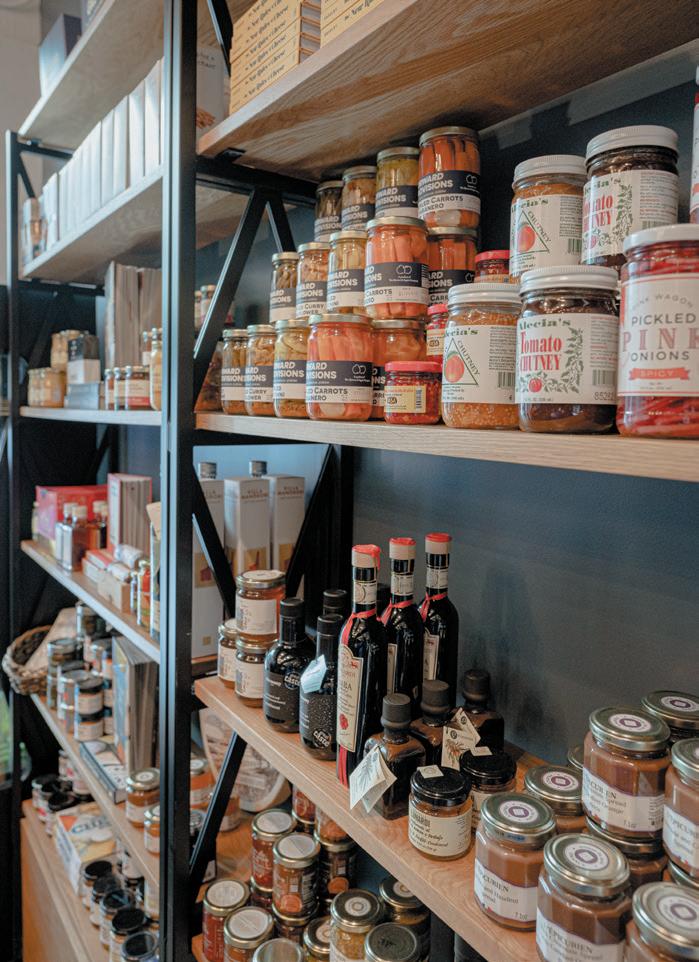
There are a few terms to get straight in the cheese community. There’s “turophile,” a word for cheese connoisseur. There are cheese boards, not to be confused with charcuterie boards, the latter of which actually borrows the term for cured meats. If you step into the Nashville store, you’ll be able to buy a “planche,” the French word for a board of foods to nibble on, which can include cheese, meats, crackers and other accoutrements. Then there’s the cheesemonger, charged with discussing, recommending and cutting up the cheese. The profession is not like a sommelier in terms of education, but it’s still a role for someone who knows a whole lot about cheese.

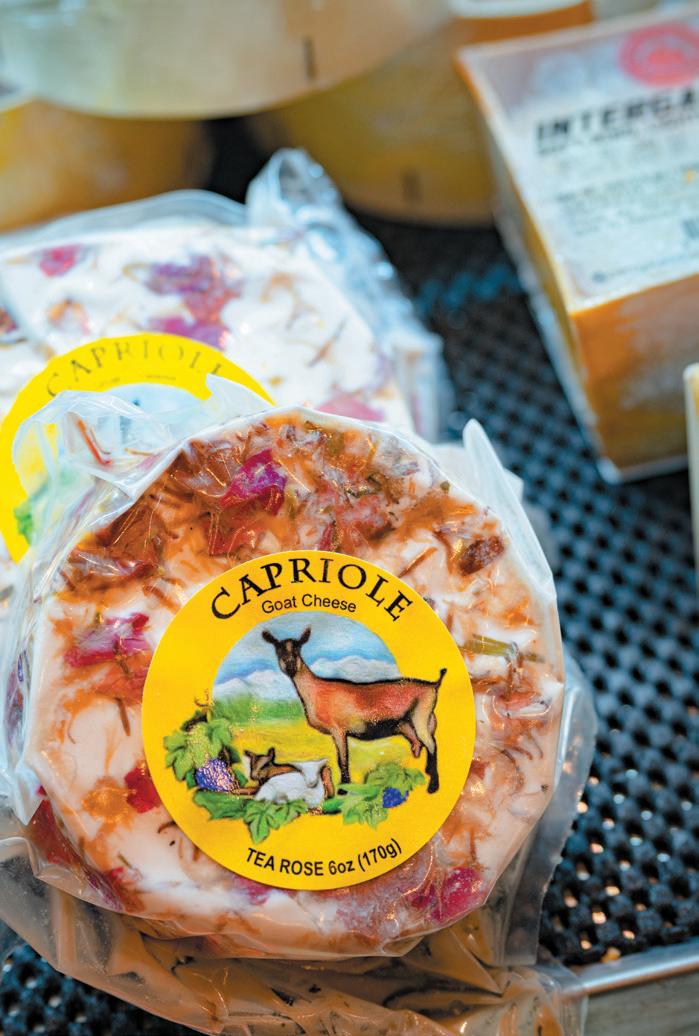
“To be a cheesemonger, I think my primary job is to get high-quality cheese in people’s hands and open a window to new experiences with things that have been made for centuries,” says Kurt Mau, owner of Greys. “Cheese, to me, is this thing you can spend your whole life chasing, and you’re never going to master it.”
Co-owners Kurt and Jackie Mau got into the business making cheese boards as corporate gifts. Kurt, a Nashville native with a culinary background, included notes with information about each of the cheeses, the kind of information that he was hungry for but rarely got when ordering cheese at restaurants.

“Most of the cheeses you’re going to get in France are going to be nonpasteurized or raw-milk cheeses,” Kurt says. “In the cheese business, we find that cheese is a living thing, so the closer it is to its original source, the better. Pasteurization is not always great — it’s definitely a hindrance.”
With these limitations comes more ingenuity, he says. Plus, there aren’t as many rules when it comes to importing cheese from other countries. Kurt says it is easier for him to get a lot of small-batch cheeses from Europe than some in California or Wisconsin, for example.
Kurt and Jackie also travel to visit creameries — memorably and recently, some cheese caves in Spain. At Quesería Maín in rural Sotres, Spain, another husband-andwife team makes queso de cabrales, a blue cheese. Every day they wake up and milk
“I have a cheddar here that’s 10 years old,” says Muldoon. “There are small humans that I can have conversations with that are younger than that. That’s crazy. Someone did that. Somebody made that cheese and said, ‘I’m not going to touch it for 10 years.’ ”
Greys offers educational classes and lunch and dinner menus to the public, as well as private events in store or at home. They also create custom cheese trays for special events. In the storefront, customers can sample and take home slices of cheese — with costs ranging from $13 per pound up to $67 per pound.
The Maus encourage people to buy less cheese more often, in any attempt to put a dent in their cheese bucket list.
nashvillescene.com | JANUARY 26 – FEBRUARY 1, 2023 | NASHVILLE SCENE 37
every cheese
“I love games you can’t win, and you’re FOOD & DRINK
out there,”
Kurt says. EMAIL
Greys Fine Cheese and Entertaining wants to cross some items off your cheese bucket list
THE CHEESE STANDS ALONE
PHOTOS: ERIC ENGLAND
BY HANNAH HERNER GREYS FINE CHEESE AND ENTERTAINING
NASHVILLE
BY CHRIS CHAMBERLAIN
The Phila Awards are a locally organized program that recognizes members of the Nashville community who make the city a better place to live through food. Each individual award is named for someone who has made a lifelong impact on the community, and the entire program honors legendary Middle Tennessee chef Phila Hach. The Scene is a proud sponsor of the awards and is pleased to announce the winners for 2022. Below are the worthy recipients.
THE PATTI MYINT COOKING UP AWARD:

MARK DICKERSON AND KEVIN MIEHLKE OF DONELSON CAFE & CATERING


This award celebrates the person, group or organization that best exemplifies Patti and Phila’s spirit for using their food/ cooking skills to improve, assist and/or support their community.
RUTH WILLIAMS FLOUR POWER AWARD: ROKEISHA BRYANT OF CAFÉ MOMENTUM NASHVILLE






In honor of Phila’s partner in thyme for almost 60 years, this award celebrates a person, group or organization that uses food/ cooking/restaurants to inspire, empower or support women seeking a better future.

































THE NAJAT AL ZAHAWI NATION
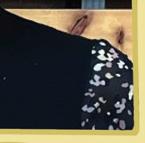
UNITED AWARD:







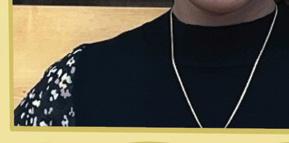



















ADRIANNE WRIGHT OF ROSIE




This award celebrates a person, group or organization using food to comfort, welcome and empower those who seek an inclusive and equitable community table.
THE TALLU QUINN SERVING SPOON AWARD: SIGNE ANDERSON AND THE NUTRITION TEAM AT TENNESSEE JUSTICE CENTER
In honor of Phila and the late Tallu Quinn’s desire to feed everyone they met, this award celebrates a person, group or organization that uses food/cooking/restaurants to address hunger, food insecurity and/or selfsufficiency.

Congratulations to this year’s worthy recipients!
Planter Punch at Hubba Hubba Tiki Tonk
East Nashville’s newest tiki bar comes with a twist
 BY MARGARET LITTMAN
BY MARGARET LITTMAN
Will I be slightly embarrassed when I tell my friends to meet me at a bar called Hubba Hubba Tiki Tonk? Yes. Will I do it anyway? Also yes. When Dave Young still owned Crying Wolf, he had an idea for a pop-culture tiki bar. Then the space he was eyeing was damaged by the 2020 tornado, and the intervening years brought other projects. Young spent much of the pandemic in Seattle, helping a friend open (what else?) a Nashville hot chicken place. Crying Wolf chose not to renew its lease (RIP, burgers and brunch).
During his time in Seattle, Young befriended Chris Jones and Dave Flatman, owners of Screwdriver, the city’s leading rock ’n’ roll bar. Screwdriver’s vibe made Young feel at home — it was similar to what he had pictured for Hubba Hubba, complete with imagery featuring 1980s sitcom icon Alf. In an offhand comment, Jones told Young if he found a new space for Hubba Hubba, they should team up together. So when Young discovered the soon-to-be-vacant space at 922 Main St. in East Nashville, a partnership was born.


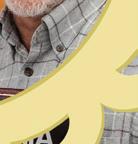
In October 2022, they opened Hubba Hubba, an East Side explosion of color and whimsy. Each and every piece of art on the walls (and ceilings and floors) has meaning to someone on the team. That includes the aforementioned Alf (wearing a Hawaiian shirt), Prince, Elvis Presley and Burt Reynolds. The bar currently has two brightly colored, uber-embellished rooms, and a back patio is in the works. As you wait for your crafted drink — complete with obligatory umbrella — you can scan the LPs tacked to the ceiling and painted leaves on the floor. The drink menu includes some tried-and-true tiki drinks, such as the citrusy sweet Planter Punch and the classic Mai Tai, plus a rotating selection of seasonal drinks. A menu of shots will be added soon.
Despite being open for just a few months, the bar feels like it has been there since Alf ruled the airways. Bartenders and patrons know each other by name, and the place exudes the “let your freak flag fly” essence — East Nashville at its best. Hubba Hubba is open seven days a week, starting at 4 p.m., as any good neighborhood hangout should be.
38 NASHVILLE SCENE | JANUARY 26 – FEBRUARY 1, 2023 | nashvillescene.com CATEGORY FOOD & DRINK
Hound Cocktails You Should Be Drinking
Booze
HUBBA HUBBA TIKI TONK 922 MAIN ST. HUBBAHUBBATIKITONK.COM
PHOTO: ERIC ENGLAND
WINNERS ANNOUNCED Awards program recognizes ‘the people, groups and organizations using food and cooking virtuously’
PHILA AWARDS
PHOTOS: ERIC ENGLAND; BRYANT PHOTO BY MARK EATHERLY
Amy-Jill Levine is Rabbi Stanley M. Kessler






Distinguished Professor of New Testament and Jewish Studies, Hartford International University for Religion and Peace and University Professor of New Testament and Jewish Studies Emerita and Mary Jane Werthan Professor of Jewish Studies Emerita, Vanderbilt University

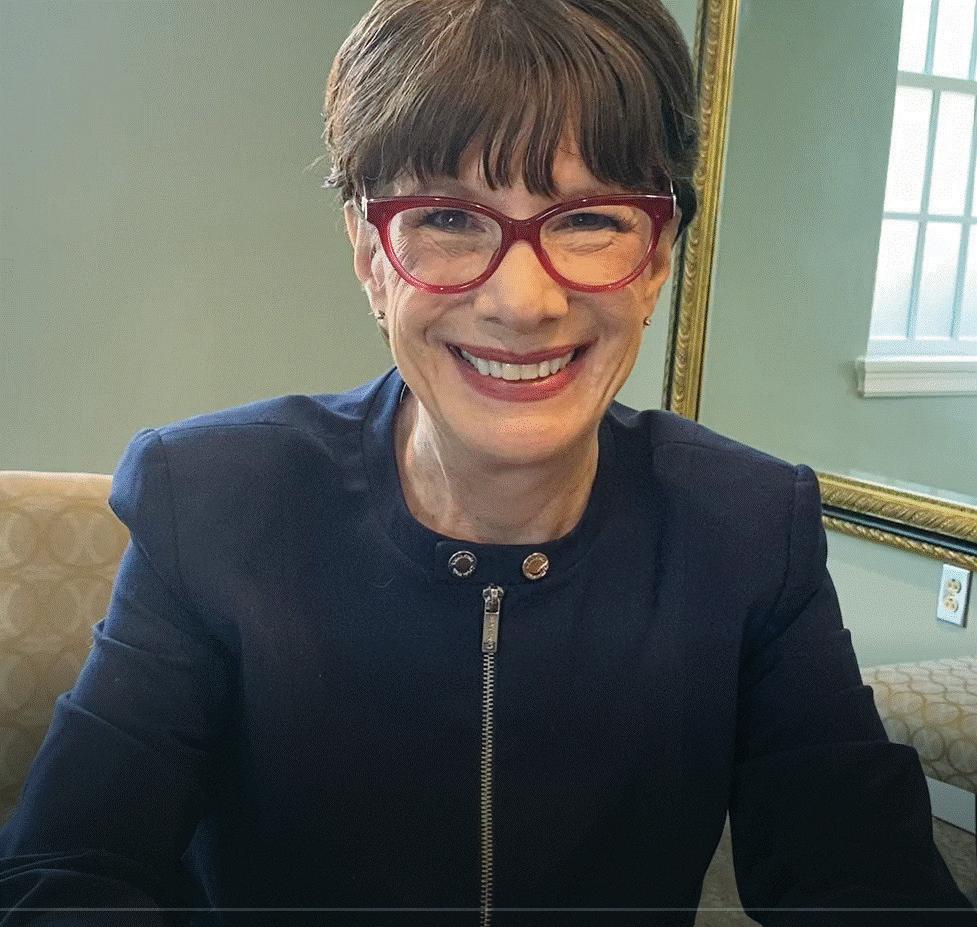
Dr. A.-J. Levine returns IN PERSON with the series




Signs and WondersBiblical Miracles & Modern Meanings

Tuesdays at 7:00 pm at The Temple

Celebrates a person, group, or organization using food to comfort, welcome, and empower those who seek an inclusive and equitable community table.

Miracles of Food –From Symbolism to Sustainability












Miracles of Nature –From Stilling Storms to Natural Disaster 5015 Harding Pike ~ 615.352.7620

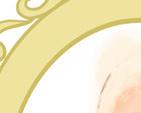






Congrats to the Phila Award Honorees!
Honorees have celebrated the life of Phila Rawlings Hach by continuing her legacy of using food and cooking virtuously.


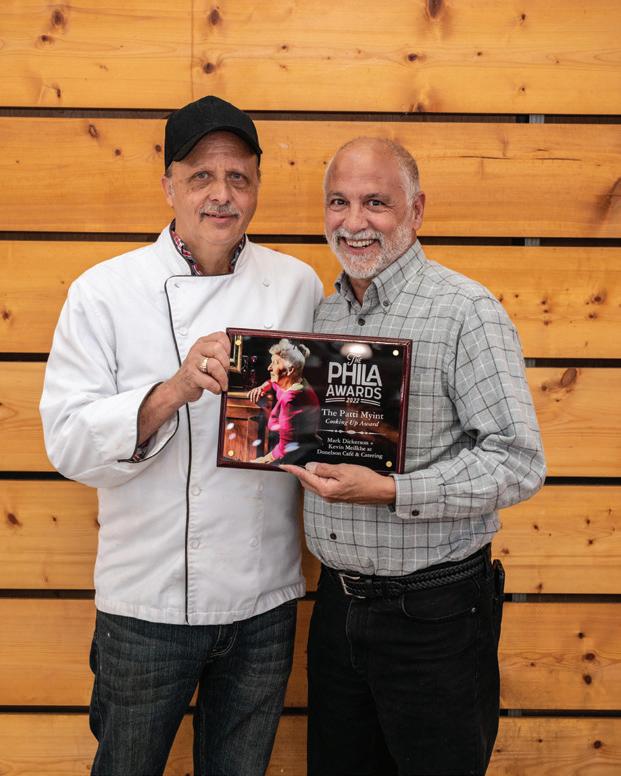
or organization that best exemplifies Patti and Phila’s spirit for using their food/ cooking skills to improve, assist, and/or support their community.
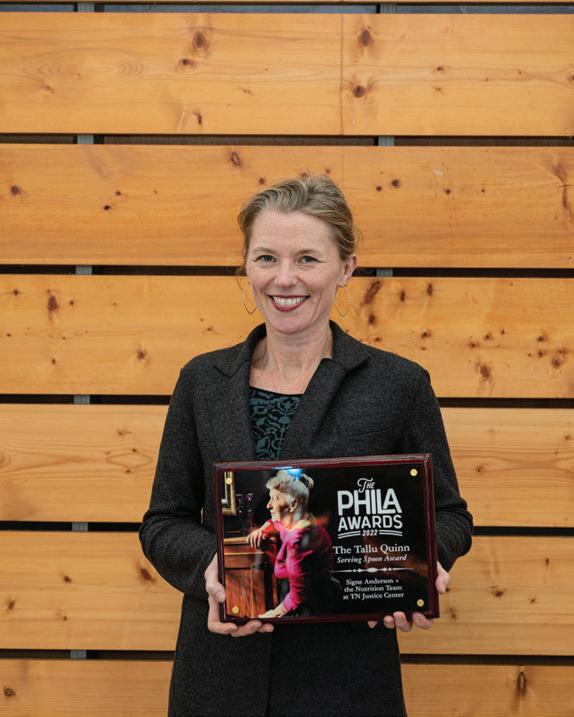

in partnership with












Rokeisha Bryant of Café Momentum Nashville
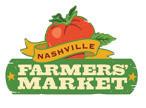
Celebrates a person, group, or organization that uses food/cooking/restaurants to inspire, empower, or support women seeking a better future.

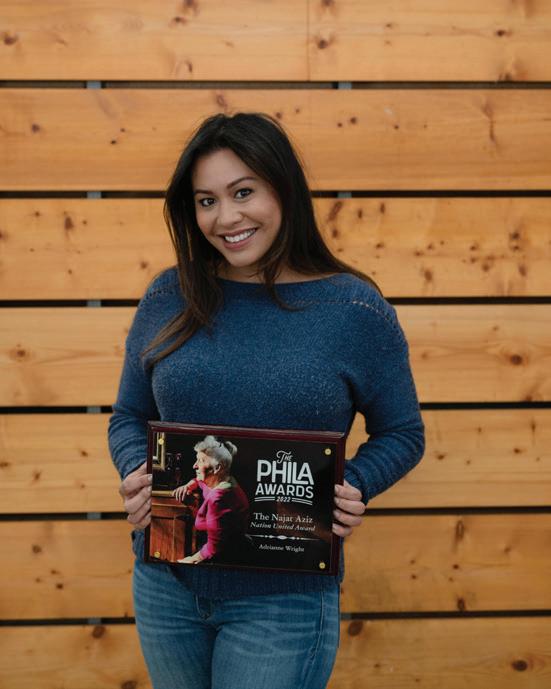


the Nutrition Team at TN Justice Center
Celebrates a person, group, or organization that uses food/cooking/ restaurants to address hunger, food insecurity, and/or self-su ciency.
















nashvillescene.com | JANUARY 26 – FEBRUARY 1, 2023 | NASHVILLE SCENE 39
JANUARY 24
JANUARY 31 Miracles of Healing –Health Care, Care Providers, and the Importance of Bodies FEBRUARY 7
FROM THE OTHER SIDE OF THE WOODS


this one? Alice’s own upbringing was rife with such dangers. Now she’s determined to keep this peaceful life she’s found, not bust it up in pursuit of changes that might do more harm than good. From her perspective, Patience “was forever talking about loving her people, but somebody had to actually love them.”
BY EMILY CHOATE

Minnicks depicts many conflicting viewpoints on the protection and empowerment of Black citizens, always grounding her characters’ arguments in the particulars of their experience and background. Many members of New Jessup’s older generation, for example, remember the town’s early days, including a legendary visit by Booker T. Washington. They defend the protective vision that first established their community.
Others, like Patience and Raymond, grew up enjoying the relative safety of a wellestablished New Jessup and view the needs of its future differently. They are drawn to the various civil rights groups working throughout the country, including in Alabama. But to prevent town authorities from tossing them out for “agitating,” they must keep their organizing efforts clandestine.
JAMILA MINNICKS




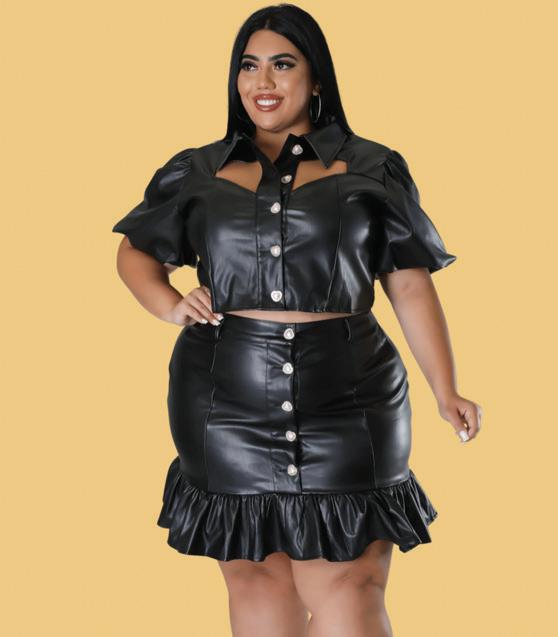
Shaken by her sudden and unsettling departure from the rural Alabama farmland where she grew up, Alice Young stumbles off a bus to find herself in a place she’d never imagined in 1957’s Jim Crow South: an all-Black town. Her relief and sense of wonder grow as she walks around the community known as New Jessup: “Up and down the avenue, Negroes of every shade came together like the dusk in a fall forest.”
Thus begins Moonrise Over New Jessup, the debut novel by Jamila Minnicks, winner of the 2021 PEN/Bellwether Prize for Socially Engaged Fiction. As Alice soon discovers, the proud band of citizens who built New Jessup have been engaged in a battle to protect the community since its inception.
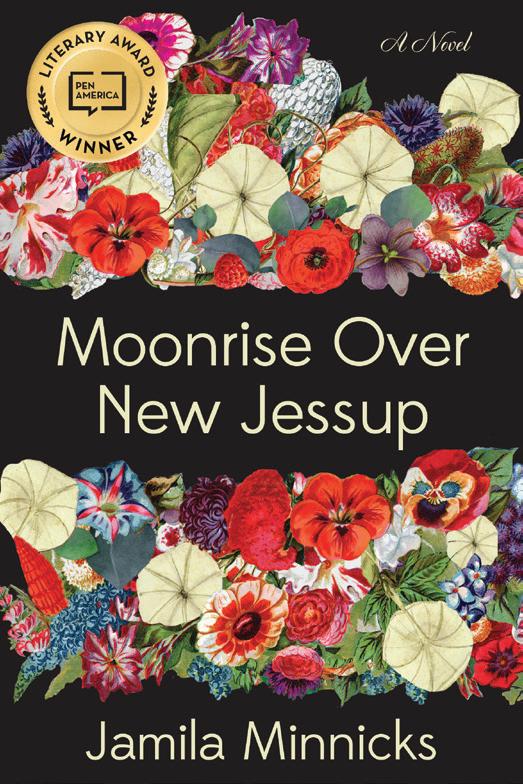
Forged from swampland thick with ancient cypresses, New Jessup emerged as an enterprising town of all-Black businesses, hospitals, school and churches, but it technically remains a self-contained section of Jessup, the all-white city that drove its Black citizens — New Jessup’s founders — out of their homes and businesses and into the swamp. These white folks still pose dangers but largely do so “from the other side of the woods,” an expression that comes to convey a range of perspectives in this novel.
Though New Jessup still proves vulnerable to Jim Crow’s cruelties and indignities, Alice finds an apparent haven of safety there that she’s never known. She embraces her new life, working in a dress shop and at a diner. There she meets Raymond Campbell, whose charm and self-possession draw her in. The son of a respected business owner, Raymond represents a legacy of New Jessup’s male leaders who must now wrestle with the unique challenges that desegregation poses to a thriving all-Black community.
Alice also meets Patience, a memorable character whose commitment to organizing for change in New Jessup makes Alice uneasy about upsetting the status quo. But Patience challenges her: What about the dangers faced by those who don’t have a town like

























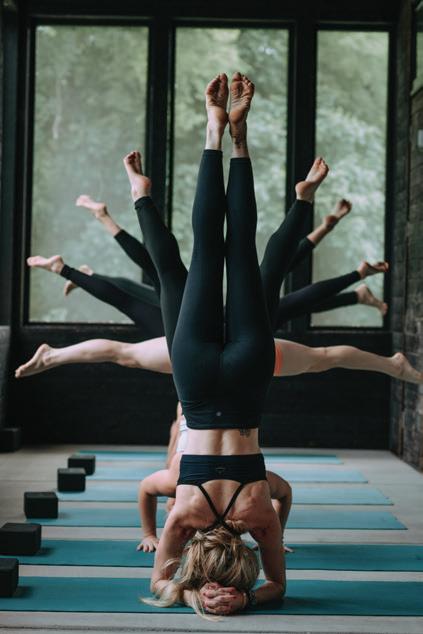
Alice is our guide through these conflicts. Through tender and engaging narration, Alice’s interior life unfolds via poignant reflections on her farm-working family life, including her devoted but disrupted connection to her older sister Rosie, whose mysterious escape to Chicago (and subsequent disappearance) looms over her life now.
Alice’s rural consciousness weaves her love of nature into scene after scene, reminding us that her fight for a peaceful, loving home runs deep. Unlike many others of her generation, Alice has no desire to move to a far-off city, like Chicago or D.C. She wants to protect the land she loves. Though she has trusted that the men of her community know how to wage this fight, Alice struggles to bring her own voice into the battle. But to protect those she loves who are increasingly bound up in the conflicts over desegregation, she becomes “tangled in a world of stories” and “duty-bound to tell some-truths, half-truths and non-truths” in order to keep everyone’s secrets. More and more, she feels trapped and compromised by mounting troubles that — despite all the debates raging around her — have no clear solutions.
Alice’s dilemma illuminates the question of how much cumulative weight can be borne by a single, fallible human heart, and her compelling inner life drives the narrative power of Moonrise Over New Jessup Minnicks reveals this glimpse into the battle over desegregation via Alice’s world. This choice reflects Alice’s desire to show her long-lost sister the new home she loves and where she has chosen to fight for the dream of a peaceful life — to show her that “this, too, was Alabama.”
For more local book coverage, please visit Chapter16.org, an online publication of Humanities Tennessee.





















40 NASHVILLE SCENE | JANUARY 26 – FEBRUARY 1, 2023 | nashvillescene.com L&L Market | 3820 Charlotte Ave thisisthefinale.com UPCOMING EVENTS PARNASSUSBOOKS.NET/EVENT 10:30AM SATURDAY STORYTIME at PARNASSUS 6:30PM LINDSEY FRAZIER with JULIAN VACA at PARNASSUS Oh Love, Come Close 6:30PM V (FORMERLY EVE ENSLER) with ANN PATCHETT at Reckoning 6:30PM MARGARET VERBLE at PARNASSUS Stealing 10:30AM SPECIAL SATURDAY STORYTIME with RACHEL KENYON Alphabet Love & You Know How to Love 6:30PM ROSHANI CHOKSHI with HANNAH WHITTEN at PARNASSUS The Last Tale of the Flower Bride MONDAY, FEBRUARY 20 6:30PM J.T. ELLISON with REA FREY at PARNASSUS It’s One of Us 3900 Hillsboro Pike Suite 14 | Nashville, TN 37215 (615) 953-2243 Shop online at parnassusbooks.net an independent bookstore for independent people @parnassusbooks1 @parnassusbooks @parnassusbooks1 Parnassus Books Your Best Yoga L&L Market |3820 Charlotte Ave. 615-750-5067 nashville.bendandzenhotyoga.com Music Valley Village 2416 Music Valley Drive 615.712.7091 dashwoodtn.com Nashville’s largest selection of mid-century finds under one roof!
EMAIL ARTS@NASHVILLESCENE.COM
A young woman learns to ght for her all-Black adopted hometown in Moonrise Over New Jessup
ALGONQUIN
336
BOOKS MOONRISE OVER NEW JESSUP BY
PRESS
PAGES, $28.95
TAKING ON HALF THE WORLD
Samia turns the page with Honey
BY ELI MOTYCKA
One afternoon in mid-January, Samia is on the way home from the East Side Portland Brew, her well-documented coffee shop of choice that has become an avatar for Nashville in her folkand pop-inspired music. In just two years, the 26-yearold has found a base here, building and benefiting from a growing indie rock ’n’ pop scene that’s anchored by women and femme artists who are earning widespread attention in a catchall genre.
“Nashville right now reminds me of coming up in the DIY scene in New York,” Samia tells the Scene, just ahead of her second full album Honey, which is out Friday. “I’m so inspired by the young people here and everything that’s happening in indie music here. I feel really lucky to be adjacent to that. The people are nice. There’s a lot of space. My dog loves it.”
Getting a dog — a really big dog, as Samia notes — and all the responsibilities that come with it can be a welcome benefit of growing up. Samia pinpoints growth as the fundamental theme of Honey. The new batch of songs reflects on the passage of time and the maturity that comes with it, digging into the identity-forming of one’s early 20s. She follows herself from childhood (as heard in “To Me It Was,” which closes with a sample from a home movie shot on VHS) through adolescence in an effort to make sense of whatever is happening next: going to coffee shops, keeping track of legal documents, walking and feeding a large animal. The stories on Honey span relationships, breakups and experimenting with alcohol (something that’s been a smaller part of her life lately), all part of the constant self-reflection that defines her music.
“A lot of the songs are written about a time when I was behaving recklessly,” Samia says. “I really needed the pandemic to sit with myself and understand my behaviors. There’s one song, ‘Honey,’ that’s about drinking every day to distract from the pain of certain situations. With each song, I’m trying to achieve that ephemeral euphoria I had when I was drinking every day — but in a more permanent way, from real true love in my life and permanent elements in my life.”
The album’s spare and elegiac opener, “Kill Her Freak Out,” lays out the stakes of entering adulthood, the willingness to fully feel erratic emotions — even when you’ve got to get them under control to move forward — and finding enough selfworth to sustain your existence. It has been incredibly popular (with more than 1.7 million streams on Spotify alone) since it was released as a single in late September, an
auspicious sign for the album.
“Kill Her Freak Out” offers evidence of a growing audience for Samia’s vulnerability, an artistic risk given that the algorithmhappy landscape of the music business can sometimes lead to artists getting reduced to the surface-level traits of their work. Her 2020 debut album The Baby established her as an ascendant force in indie music and featured breakout hit “Big Wheel.”
“I’m so shocked that people like that song,” she says. “Every time we play it, I’m shocked again. I wrote that song in like 15 minutes at 4 a.m. It’s just total stream-ofconsciousness, and it’s been an amazing learning experience to see how that has resonated with people.”
The timing of The Baby’s release meant a delay in performing live. While Samia is interested in how audiences respond to different songs, she’s not focusing too hard on
numbers. Ahead of her tour, which kicks off Feb. 6 in Asheville, N.C., she has intel on only three other tracks from Honey: “Pink Balloon,” “Sea Lions” and “Mad at Me” all came out in December, bundled with “Kill Her Freak Out” as an EP called Pink Balloon
“I’m going to lead with what I have, without a lot of data,” she says. “I just have to be really honest about what the record is and what I think of it, not other people’s relationships with it. I’m nervous — it’s going to be a lot more vulnerable. But I’m excited that I’ll be experiencing it alongside everyone else.”
Since coming to Nashville, Samia has spent more time exploring the Southeast. The “Sea Lions” music video was filmed in rural Virginia; she recorded Honey in North Carolina at studios run by Sylvan Esso’s Amelia Heath and Nick Sandborn. She’s spent a fair amount of time in East Tennessee with her boyfriend Briston Maroney, a fellow pop-
and-rock songwriter based in Nashville who also has a rising national profile. In 2021, they released side-by-side versions of “Is There Something in the Movies?” The lover’s ballad shows off their vocal sweet spots: Maroney’s range and skill at conveying intense emotion and Samia’s haunting head voice and calming sense of control.
As one of the burgeoning indie-pop scene’s best-known rising talents, Samia has helped coalesce the community that’s growing alongside and in between higher-profile pop, country and rock acts in Nashville. All are trying earnestly to make music that resonates and lasts; all share solidarity in a city struggling for its roots; most seem wary of drinking whiskey. Music City can look forward to Samia’s adopted-hometown stop on March 11, when she closes her tour at Brooklyn Bowl EMAIL MUSIC@NASHVILLESCENE.COM

MUSIC
HONEY OUT FRIDAY, JAN. 27, VIA GRAND JURY
MUSIC ; PLAYING MARCH 11 AT BROOKLYN BOWL
nashvillescene.com | JANUARY 26 – FEBRUARY 1, 2023 | NASHVILLE SCENE 41
PHOTO: SOPHIA MATINAZAD
HERE COMES TROUBLE
BY RON WYNN
Back in 1997, guitarist and songwriter Kenny Wayne Shepherd was faced with a serious challenge: following up an exceptionally successful debut. Ledbetter Heights was released not long after Shepherd turned 18 in 1995 and went gold rapidly, selling 500,000 copies within a few months and eventually going platinum. He was quickly lauded as one of the finest players of his generation. What he did for his next act cemented his status as a star in both the rock and blues worlds for a generation to come.

His second LP, 1997’s Trouble Is…, signaled the continuing maturation of a tremendous player — capable of solos equal parts furious and imaginative, as well as a songwriter willing to explore a variety of subjects in a thoughtful, memorable fashion. And it was an even bigger hit than its predecessor, topping Billboard’s Blues Albums chart for 30 of the 104 weeks it was on the chart, peaking at No. 74 on the all-genre Billboard 200 and scoring a mainstream hit with “Blue on Black.” The Shreveport, La.-born artist is now an established star who has landed eight singles among the top 10 on the trade mag’s Mainstream Rock Airplay chart and been nominated for five Grammys; among other recognition, he’s also taken home two Billboard Music Awards.
Shepherd is celebrating the 25th anniversary of Trouble Is… in grand style. Late last year he released a rerecording of the album with almost all of the original players. Called Trouble Is… 25, it comes in vinyl and CD editions that include a bonus cover of Bob Dylan’s “Ballad of a Thin Man” and is available with a DVD or Blu-ray that includes a documentary film about the making of the original album and a full concert filmed in 2022 at The Strand Theatre in Shreveport.
Shepherd, who recently moved his family to Nashville, premiered the documentary at the Belcourt in the fall, and he’ll play the Ryman on Friday with support from blues and rock singer-guitarist Samantha Fish.
“You always want an album to be successful, but no, I certainly did not anticipate what Trouble Is… would become,” Shepherd tells the Scene by phone. “And that’s thanks to the fans. We thought as we were making the album that we might have something special there, but certainly no one thought it would take off the way it did — or have the lasting popularity that it’s enjoyed. I’m really grateful, and it was such a milestone in my career that we felt we had to do something equally special to highlight the fact it’s been 25 years.”
Shepherd is the son of a local Louisiana radio personality; a self-taught player, he estimates he got his first instrument around the age of 3 or 4. He considers himself a blues-rock hybrid player and is very careful
to specifically explain his influences and style.
“I can’t really view myself as a blues guitarist in the traditional sense,” Shepherd says. “I view myself as blues-based. As a songwriter, when I write songs I draw from all the things that I love and all the different types of music I enjoy, though blues is a big part of that. But I don’t write traditional blues songs, at least not in the strict technical sense. As a player, pretty much all the players that I really admire are blues players, and I certainly invoke that in my playing. But there’s also rock influences in there as well.”
Still, anyone questioning Shepherd’s blues credibility or credentials would be mistaken. Among the standout blues entries on his lengthy résumé is the 2007 DVD-andCD project 10 Days Out: Blues From the Backroads, which paired him with members of the late Stevie Ray Vaughan’s band Double Trouble along with such guests as Clarence “Gatemouth” Brown, B.B. King and blues harp master Jerry “Boogie” McCain. Also see Shepherd’s 2010 LP Live! In Chicago, which features performances with guitar hero Hubert Sumlin, singer Willie
“Big Eyes” Smith and more. Shepherd also toured with Buddy Guy in 2019.
He had a long relationship with Nashville even before deciding to move here.
“When I was just starting out, I used to come to Nashville and collaborate with the songwriters,” Shepherd recalls. “At that time no one really noticed you if you weren’t in country music except for the songwriters. They were delighted to be able to write some other kind of song and work in another style, because all they usually did were country songs. They welcomed me without hesitation or difficulty.”
Noting that his most recent show at the Ryman was in 2017, when he was playing in supergroup The Rides with Stephen Stills, Shepherd is excited to be returning. He also calls Nashville “the last true music city in the country,” reflecting on how it attracts masses of talent.
“You now have people coming in here from every genre, from all over the country and the world, because they know the best players are here and the best songwriters. And it’s a place where people respect songwriters and artists and love music.”
EMAIL MUSIC@NASHVILLESCENE.COM
IAN TYSON, 1933-2022
Looking back on the life of a Canadian country and folk giant and his work in Nashville
BY PETE FINNEY
On Dec. 29, acclaimed Canadian singer-songwriter Ian Tyson died at 89, on the Alberta ranch that had been his home for more than 40 years. The words “legend” and “icon” have come up repeatedly in the outpouring of tributes in the weeks since his passing.

The first song Tyson ever wrote, “Four Strong Winds,” has been called “Canada’s unofficial national anthem.” It ties together many strands of Tyson’s life and career: his early success as half of the duo Ian & Sylvia in the 1960s, the Western ranching life that he both lived and championed in his songs later in life, and his many musical connections to Nashville. The duo’s 1963 recording was a top 10 hit in Canada before Bobby Bare took it to No. 3 on the American country charts with his classic “Nashville Sound” rendition. The song immediately became a standard, recorded often by both folk and country artists, as did another Tyson song with a Western theme, “Someday Soon.”
Raised in British Columbia, Tyson moved to Toronto in 1958 and started performing in the city’s thriving folk-music coffeehouse scene, where he met Sylvia Fricker. The two formed Ian & Sylvia and eventually married. They established themselves from the start with a distinctive and influential sound. Tyson’s country-music influences were deeply rooted; his first musical inspiration as a child was Roy Acuff, and when he learned to play guitar at 21 while recovering from an injury he sustained in the rodeo, he started by copying a Johnny Cash record.
In the early years of their folk success, the duo recorded in New York, typically using just one or two musicians. In early 1968 they came to Nashville, using top-notch studio players and bringing fiddles, pedal steel and twangy Telecasters into the mix. The resulting
42 NASHVILLE SCENE | JANUARY 26 – FEBRUARY 1, 2023 | nashvillescene.com
Kenny Wayne Shepherd reflects on a quartercentury of Trouble Is…
MUSIC
PLAYING FRIDAY, JAN. 27, AT THE RYMAN
Waxed,

Brit
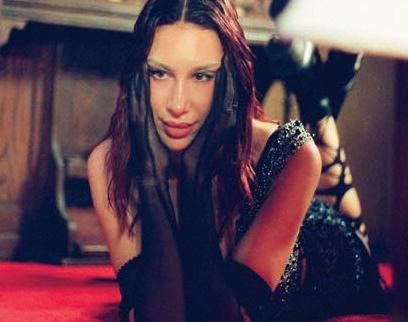
Willie




HIghway Natives (9pm)

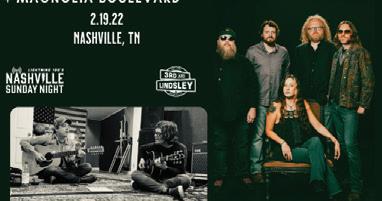








Riverghost,
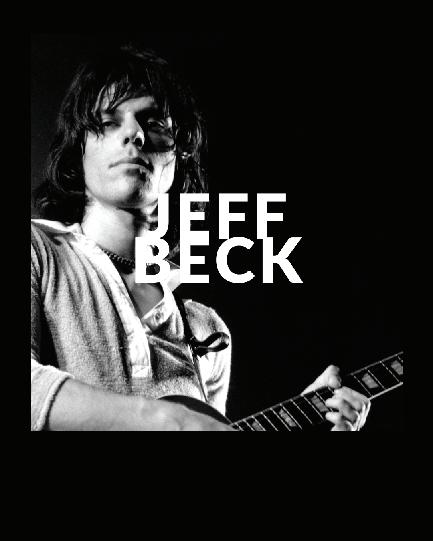












































































Pindrop








Lindsay





nashvillescene.com | JANUARY 26 – FEBRUARY 1, 2023 | NASHVILLE SCENE 43 jan 27 jan 28 jan 29 jan 31 Feb 1 feb 2 feb 3 feb 4 FEB 9 feb 10 feb 11 feb 15 feb 16 feb 18 feb 19 feb 20 feb 22 feb 23 feb 24 JAN 26 JAN 26 JAN 27 JAN 27 JAN 28 JAN 27 JAN 28 JAN 29 JAN 30 feb 1 feb 2 feb 2 feb 3 feb 3 feb 4 feb 4 feb 6 feb 6 feb 8 feb 8 feb 9 feb 25 feb 28 mar 1 mar 2 mar 4 mar 5 mar 7 mar 8 mar 9 mar 12 mar 13 mar 14 mar 15 mar 17 mar 18 mar 19 mar 20 mar 21 MAR 22 The Traveling Wilburys Tribute Kendall Street Company & Airshow w/ Kyle Tuttle Nu Metal Tribute: Korn, Deftones, Killswitch Engage Amigo The Devil w/ Stephanie Lambring and Willi Carlisle The Foxies w/ Maggie Miles, Manic., and Caroline Romano THE Emo Night Tour LUTHI w/ Travollta Suki Waterhouse w/ Blondshell Kimbra w/ Tei Shi Spanish Rock Tribute Show Julia Wolf w/ Bronze Avery Gloom Girl MFG, Amanda Stone, & Blood Root Stop Light Observations Claire Rosinkranz w/ DWLLRS & Mehro Amy Ray Band w/ Kevn Kinney Otoboke Beaver w/ Leggy Andy Shauf w/ Katy Kirby Chappell Roan Jessie Murph Jobi Riccio, Nora Jane Struthers (7pm) Jonny & The Jumpmen, Fox Grin, Boy Orbison (9pm) El Dorodo w/ Jonathon Childers (7pm) Pony Bradshaw (9pm) Zachary Scott Kline w/ JD Huggins & HIghway Natives (9pm) El Dorodo w/ Jonathon Childers (7pm) Zachary Scott Kline w/
JD Huggins &
The Garden Of Eden, Voltagehawk (7pm)
Songwriter Series (7pm)
James, Kaylin Roberson (7pm)
The
Namby Pamby, Dori Valentine (7pm) Madison Steinbruck w/ Cameron Lee (9pm) Clay Cook (7pm)
Cardiel, Hurts To Laugh (9pm)
Taylor w/ Harper O’Neill (7pm)
Brothers
Killjoy, Stylo Ghost
LAMB w/ Golden Hour
Malco (9pm) Carly Moffa & Bradley Crow (7pm) 49 Winchester w/ Colby Acuff The Dryes Junior Boys w/ Hagop Tchaparian The Stews w/ Easy Honey BAD BUNNY X RAUW ALEJANDRO Dance Party Thy Art Is Murder w/ Kublai Khan, Undeath, I AM, and Justice For The Damned Magnolia Park w/ Arrows In Action & Poptropicaslutz! & First and Forever PFR w/ Leigh Nash Dylan LeBlanc & David Ramirez Sarah Shook & The Disarmers w/ Sunny War an evening with yo la tengo an evening with yo la tengo Nonpoint w/ Blacktop Mojo and Sumo Cyco King Tuff w/ Tchotchke rubblebucket w/ lunar vacation We Three Meg Rilley, Erin O’Dowd, Teagan Stewart, Noelle McFarland Cafuné w/ Bathe CHIIILD 917 Woodland Street Nashville, TN 37206 | thebasementnashville.com basementeast thebasementeast thebasementeast 1604 8th Ave S Nashville, TN 37203 | thebasementnashville.com 2/9 Kimbra w/ Tei Shi 2/3 1/28 Upcoming shows Upcoming shows thebasementnash thebasementnash thebasementnash Lindsay James, Kaylin Roberson 2/1 2/2 2/11 2/1 1/31 Madison Steinbruck w/ Cameron Lee sold out! sold out! sold out! LUTHI w/ Travollta kendall st company and airshow w/ Kyle Tuttle Julia Wolf w/ Bronze Avery The Foxies, Maggie Miles, Manic., and Caroline Romano Amigo The Devil w/ Stephanie Lambring and Willi Carlisle sold out! GREAT MUSIC • GREAT FOOD • GOOD FRIENDS • SINCE 1991 818 3RD AVE SOUTH • SOBRO DOWNTOWN NASHVILLE SHOWS NIGHTLY • FULL RESTAURANT FREE PARKING • SMOKE FREE VENUE AND SHOW INFORMATION 3RDANDLINDSLEY.COM SUN 1/29 MON 1/30 FRI 1/27 TUE 1/31 LIVESTREAM | VIDEO | AUDIO Live Stream • Video and Recording • Rehearsal Space 6 CAMERAS AVAILABLE • Packages Starting @ $499 Our partner: volume.com FEATURED WED 2/1 PRIVATE EVENTS FOR 20-150 GUESTS SHOWCASES • WEDDINGS BIRTHDAYS • CORPORATE EVENTS EVENTSAT3RD@GMAIL.COM SAT 1/28 THU 1/26 THIS WEEK 2/3 FINALLY FRIDAYS 2/3 A NASHVILLE NIGHT FOR JIM REILLEY SOLD OUT! 2/4 BACKSTAGE NASHVILLE 2/4 THE PETTY JUNKIES W/ SINCLAIR 2/6 THE TIME JUMPERS 2/7 DAVE BARNES & FRIENDS 90’S COUNTRY NIGHT 2/8 DIANNE DAVIDSONS BIRTHDAY BASH 2/9 TAYTAY PARTY 2/10 RUBIK’S GROOVE VALENTINES SHOW 2/16 SHANE PROFITT 2/18 TOWN MOUNTAIN 2/24 SMOKING SECTION 2/25 RESURRECTION: A JOURNEY TRIBUTE 2/28 ERIC GALES WITH YATES MCKENDREE 3/1 GEORGE SHINGLETON 3/3 PAT MCLAUGHLIN BAND 3/4 GUILTY PLEASURES 3/7 BAILEN 3/9 WEDNESDAY NIGHT TITANS 3/10 FRUITION 3/23 DARK SIDE OF THE MOON 4/6 ROOSEVELT COLLIER 4/7 THE CLEVERLYS 4/8 DALE WATSON + CHICKEN S#!+ BINGO 4/9 MATT CORBY 4/28 RAY WYLIE HUBBARD SOLD OUT! 8:00 8:00 12:00 8:00 12:30 8:00 2/17 2/22 7:30 7:30 2/19 JACKOPIERCE CASS JONES WITH SYDNEY ADAMS & JORDAN FOSTER 3/2 4/2 3/22 JACKIE GREENE FREESHOW THE TIME JUMPERS 8:00 TOM SANDOVAL & THE MOST EXTRAS WMOT FINALLY FRIDAYS FEAT. LAKE & LYNDALE, DAVID NEWBOULD & FOSTER MCGINTY THE PIANO MEN THE MUSIC OF ELTON JOHN & BILLY JOEL BACKSTAGE NASHVILLE FEAT. DAYTIME HIT SONGWRITERS SHOW FEAT. ROGER COOK, BEN BURGESS, BRIDGETTE TATUM & RANDALL FOWLER + SCARLETT EGAN VINYL RADIO JOHN COWAN AND ANDREA ZONN ARE THE HERCULEONS W/ JODY NARDONE, TOM BRITT, ANDY PEAKE & JOHN MOCK & SPECIAL GUEST DARRELL SCOTT 7:00 COUNTRY MUSIC FROM OTHER COUNTRIES FEAT. RAUL MALO, YELI ENSEMBLE, WU FEI & COFFIN/PERLSON/KRAUSS SAM HOLT BAND REMEMBERING MICHAEL HOUSER AND TODD NANCE THREE TIMES A LADY FEAT. LAUEN MASCITTI, HANNAH BLAYLOCK & KENNEDY SCOTT
Pearl, Gert Arwood and the Centennials, Jacques Merlino (9pm) Oshima
(7pm) Pealer,
(9pm)
(7pm) Katie
album, Nashville, preceded both The Byrds’ Sweetheart of the Rodeo and Bob Dylan’s Nashville Skyline in its blending of country instrumentation with folk and rock elements — an early benchmark for what would come to be called country-rock. The local musicians enjoyed the chance to stretch out. As bassist Norbert Putnam told me in 2011: “I remember having grand times with those guys. … We could be more progressive than the standard Nashville record, and that’s what they wanted.”
They followed Nashville with Full Circle, produced by Elliot Mazer, a New Yorker who had come down to assist on the earlier album. Mazer soon became an important part of Nashville’s flowering as a recording center for rock and folk artists, bringing Linda Ronstadt, Jerry Jeff Walker and Neil Young to the city’s studios and crediting Nashville musicians like Putnam, Kenny Buttrey, Weldon Myrick and more as his motivation. Tyson, too, was unequivocal about the city’s impact on his music, as he told biographer John Einarson: “Nashville and Full Circle were where we found our direction.”
The Tysons assembled a band called Great Speckled Bird to play their new music live. The name came from one of Roy Acuff’s signature songs, though “speckled birds” was also a nickname for an amphetamine diet pill. The band came to Nashville in 1969 to record at Cowboy Jack Clement’s brand-new studio on Belmont Boulevard — now known as Sound Emporium — bringing back Putnam and keyboard player David Briggs to flesh out the sound, and with 21-year-old Todd Rundgren making his debut as a producer.
Following the lukewarm reception of the resulting LP Great Speckled Bird, things slowly wound down for Ian & Sylvia, professionally and as a couple, and they divorced in 1975. In 1970 Tyson became the host of a new Toronto-based weekly TV show, Nashville North; Great Speckled Bird was the house band, but Sylvia only appeared as an occasional guest. The show ran for several years and was essentially a Canadian equivalent of The Johnny Cash Show, with a string of guests to match: Dolly Parton, Willie Nelson, Loretta Lynn, Kris Kristofferson, Waylon Jennings, Gordon Lightfoot, Chet Atkins, Linda Ronstadt and John Prine all made appearances.
Neil Young came to Nashville to record for the first time in 1971, making what is still his most successful album, Harvest, with Elliot Mazer producing. Though Young did not release another album made in Nashville until 1978, it was his next big commercial success. Comes a Time, and the rendition of “Four Strong Winds” that closes it, brought the song a whole new audience. Before performing it at the Ryman, during one of the 2005 concerts filmed for Jonathan Demme’s Heart of Gold, Young talked to the audience about the impact Ian & Sylvia’s recording had on him growing up in Winnipeg: “It was the most beautiful record that I’d ever heard in my life, and I just could not get enough of it.”
Royalties from the version on Comes a Time provided the down payment on the Alberta ranch where Tyson chose to spend the rest of his life. Things do sometimes come full circle.
JUST THE
BEGINNING
Talking with Shon Harmon and Jordan Harris about establishing H2 Hospitality on Buchanan Street
BY SEAN L. MALONEY
It started with some simple questions about a warehouse party. Then it turned into a unicorn: a story at the intersection of culture and real estate that is inspiring rather than infuriating.
I went looking for amapiano, a relative of Afro House, which is itself a South African evolution of the Chicago-originated dance music style. It’s a deep and beautiful spin on the sound, bass-forward and sublimely cosmopolitan. I reached out to Shon Harmon, one of the promoters of a recurring amapiano party in North Nashville, whose next installment is set for Saturday.
“Cool, our building is a hell of a story too,” Harmon says. Building? In my experience, warehouse party promoters are a little more hush about those situations.
“Yeah, man,” he continues, “Nashville Mural Tours has added us to their tours. We have the L&P Silkscreen building on Buchanan Street. That’s where the parties are
as we wait for reno to start. We also let the Norf Art Collective tag the building, so the whole outside is a mural.”
Oh, that building. A few days later, I’m on a conference call with Harmon and Jordan Harris, his business partner in a newly formed company called H2 Hospitality that will set up shop in the building at 1410 Buchanan St., opposite Elephant Gallery. Harris, a Nashville native who recently returned from a long stint abroad, is the son of the late Yusef Harris, who died in January 2022. The elder Harris launched Alkebu-Lan Images, a North Nashville bookstore that has been a community cornerstone for more than three decades.
“I was living in London for about 12 years and originally came home thinking I needed to help my dad figure out how to retire,” says Harris. “But then I came home and I realized the business had been doing pretty well the last few years. So I started looking — I just flipped over from ‘for rent’ to ‘for sale,’ and I saw this space, and on Buchanan Street.
“Our business was already a community business,” he continues, “and so we were already kind of sensitive to how North Nashville is changing and evolving. We bought the building and it was like, ‘All right, we’re gonna buy this and we’re gonna figure it out.’ ”
While North Nashville has a legacy as one of America’s great cultural centers, it has suffered from generations of maleficence and indifference, from institutions running the gamut from local banks to the federal government. That has resulted in the neighborhood and its residents getting the short
end of the stick when it comes to investment, in such a way that the North Side is at risk of losing its identity without careful caretaking of development moving forward.
In 2013, Harmon founded SmoQe Signals BBQ. Sadly, he had to close his East Nashville brick-and-mortar in August 2020 amid the pandemic-induced Great Restaurant Die-Off; he still does pop-up events and catering, but returned to a day job in the corporate world. He stopped in at Alkebu-Lan Images prior to Yusef Harris’ passing, and was surprised to not find him there.

“I didn’t even know Mr. Yusef had a son,” says Harmon. “Jordan was like, ‘Hey, aren’t you the guy that does the barbecue?’ A couple of days later he had me meet him over at the building. … The project has continued to grow, and the ceiling for the project has continued to grow. And instead of renting, we’ve created a hospitality company now, and we’re partners.”
For now, Harris and Harmon’s company is using its blank canvas to bring expansive sounds to the neighborhood. The plan for the buildout includes a return of SmoQe Signals as a brick-and-mortar as well as office and storage space for Alkebu-Lan Images. But once those basic needs are met, the sky’s the limit for options with this space.
“I think the big challenge is just really trying to scale our vision to the opportunity,” Harris says. “Where business is in Nashville, you really have to think big. Instead of trying to do things small and go from small to large, the best path is to really take a swing up front.”
44 NASHVILLE SCENE | JANUARY 26 – FEBRUARY 1, 2023 | nashvillescene.com
EMAIL MUSIC@NASHVILLESCENE.COM MUSIC
AMAPIANO WAREHOUSE PARTY, SATURDAY, JAN. 28, AT 1410 BUCHANAN ST.
EMAIL MUSIC@NASHVILLESCENE.COM
PHOTO: DVALD @DIANNEVALDOUG
JORDAN HARRIS (LEFT) AND SHON HARMON
THE SPIN



 BY STEPHEN TRAGESER
BY STEPHEN TRAGESER

he Jan. 17 show at The Blue Room started with some casual milling about and beverage sipping, a couple rounds of line checks and a friendly warning from Third Man Records’ Ben Swank to have fun or risk being singled out and shamed. Around 8 p.m. — I couldn’t tell you the exact time, since I’d forgotten that I’d be locking my phone in a pouch and I didn’t wear a watch — Jack White and his band made their entrance to MC5’s “Kick Out the Jams,” the Detroit rock immortals’ ferocious declaration that there’s nothing in the world like being onstage. For the next couple of hours, White & Co. seemed to be living that philosophy to the fullest.
The show was the second of two surprise gigs in the intimate azure-hued venue at the Nashville headquarters of White’s label. With these shows and two others in Los Angeles the week before, White & Co. stretched their muscles a bit after the holiday break from their Supply Chain Issues Tour. The extensive international trek supporting his new LPs Fear of the Dawn and Entering Heaven Alive took up most of 2022; it stopped here in White’s adopted hometown for a two-nighter at Ascend Amphitheater at the end of April. Tuesday’s show followed the pattern of the earlier visit, in that new songs were featured but weren’t necessarily the highlight. Honestly, the songs themselves weren’t the highlight, so much as the way the group absolutely reveled in playing them.
Among the newer songs were Fear of the Dawn’s “Taking Me Back” and “Fear of the Dawn” at the start of the show, as well as “Love Is Selfish” from Entering Heaven Alive a little later on. The set included quite a few White Stripes classics, as well as tunes from White’s solo albums and other projects. Sometimes a musician will find themselves having to play the songs they made famous long after they’ve stopped being fun — or cathartic, or at all meaningful — to play, but White has kept many of them fresh by reworking them with new versions of his
band. The groovy rendition of “Dead Leaves and the Dirty Ground” added new and intriguing dimensions without diminishing the original’s visceral oomph.



There’s a misogynistic take out there that Meg White’s contributions to The White Stripes weren’t all that great, but let’s nip that shit in the bud: Her parts remain at the foundation for these newer renditions, which are the product of 20 years of evolution and tinkering. A couple of other highlights of the night blended old and new, as when the snarling Jack White solo song “That Black Bat Licorice” segued into an even more bombastic rendition of the Stripes’ “Fell in Love With a Girl,” and Fear of the Dawn’s “What’s the Trick” morphed into “The Same Boy You’ve Always Known.”
Drummer Daru Jones, whose parts are always about more than just keeping time, called forth myriad tonal colors to match the character of each of the songs; bassman Dominic Davis worked with him hand-in-glove, mostly sticking to his James Jamerson-esque Fender Jazz Bass but picking up his upright for a jug-band-y take on “Hotel Yorba.” In the blink of an eye, keyboardist Quincy McCrary went from playing church organ to barrelhouse piano to apocalyptic synth lines that sounded like a choir of malicious robots on “Icky Thump.” As usual, White appeared to spend as much of his energy on making his just-this-side-of-unhinged guitar work be the glue in the arrangements as he did on being the frontman, bopping his way in and out of the spotlight and punctuating his singing with yelps and growls.
White’s daughter Scarlett made a cameo at the previous night’s show, sitting in for Davis on bass on “The Hardest Button to Button,” but didn’t join in on Tuesday. It would have been cool to hear a tribute to the late, great Loretta Lynn, whose Grammywinning 2004 record Van Lear Rose White produced and who opened his Bridgestone Arena show back in 2015. And there are plenty more great songs in White’s catalog that didn’t make an appearance this time; “If I Die Tomorrow” from Entering Heaven Alive is one of his best songs in a minute, but they’d already played it on Monday, so I’ll just have to wait for another time.
Thankfully, White and his cohorts seem to have their sights set on keeping this thing fun for themselves — and their fans — for the long haul.
EMAIL


THESPIN@NASHVILLESCENE.COM






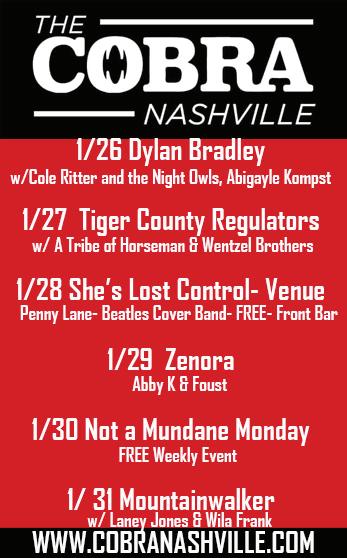
nashvillescene.com | JANUARY 26 – FEBRUARY 1, 2023 | NASHVILLE SCENE 45 3245 Gallatin Pike Nashville TN 37216 sidgolds.com/nashville 629.800.5847 Live Piano Karaoke 6 NIGHTS A WEEK! *Closed Tuesdays THU 1.26 PARAMORESINGALONG 8-9 Piano karaoke 9-12 w/Katie Pederson FRI 1.27 HappyHourpianokaraoke 6-9 w/Kira Small Pianokaraoke 9-1 w/Caleb Thomas SAT 1.28 ANNALEEPALMER 7-9 Pianokaraoke 9-1 w/Alan Pelno SUN 1.29 PRINCESINGALONG 8-9 Pianokaraoke 9-12 w/Kira Small MON 1.30 ShowTunes@Sid’s 7-9 Pianokaraoke 9-12 w/Alan Pelno WED 2.1 HagsReeltoReelHappyHour 6-8 BURLESK 8-9 ($7) Pianokaraoke 9-12 w/Dani Ivory *AVAILABLEFORPRIVATEPARTIES!* Nashville’s Better Side of Best The Delta’s Deep, Dark Secret Available at The Produce Place 4000 Murphy Rd, Nashville, TN 37209 Custom built poker tables Local delivery and set up Our bet is you’re going to love it. Give us a call! 615.359.2166 dgfoldingpokertable.com nashvillescene.com THE SOUND THAT ABOUNDS AND RESOUNDS
T
MUSIC
PHOTO: DAVID JAMES SWANSON
KIND OF BLUE: JACK WHITE
BY NADINE SMITH
The stakes of remaking a movie that was panned or forgotten are relatively low, but remaking a masterpiece is setting yourself up for a deliberate challenge, almost like taking on a dare.
The new film Living sets itself up for inevitable comparison by its very existence, an adaptation of beloved auteur Akira Kurosawa’s 1952 classic Ikiru. Though it’s faithful to its inspiration — which was itself inspired by Leo Tolstoy’s The Death of Ivan Ilyich — the film is the product of another singular creative voice with its own distinct sensibility: Nobel Prizewinning writer Kazuo Ishiguro, the mind behind novels like The Remains of the Day and Never Let Me Go
Though their genres and locales differ, Living is in some ways similar to A Fistful of Dollars or The Magnificent Seven before it, films that translated the works of Kurosawa
to a new context more than it outright reinvented them. Ishiguro and his collaborative partner, director Oliver Hermanus, swap Japan of the early 1950s for England of the same era. The two societies of the time express a spiritual kinship, despite having just been on opposite sides of a brutal conflict, as both sift through the metaphorical and literal rubble of World War II.
At the center is a man who, much like the world around him, clings tight to the normalcy of bureaucratic operations. Mr. Williams, played to tender effect by Bill Nighy, is a department head within London’s Public Works department, a Kafkaesque labyrinth of towering paperwork and dreary eyes, where everyone continues with business as usual despite the regular interruptions of a malfunctioning air-raid siren, a wailing banshee left over from the war.
Much like Stevens, the butler from Ishiguro’s The Remains of the Day, Williams is a solemn operator guarded by strict ritual. A terminal diagnosis shatters Williams’ rigidity, sending him first into a dark period of
soul-searching, and then toward a renewed sense of purpose, as the final months of his life take on new meaning. Nighy brings a remarkable sense of physicality to the role, as a man who is at once both absent and present, always shrinking himself until he becomes a ghost on the edges of the frame. His words are chosen precisely, every movement of his frame governed by a lifetime of routine. Nighy’s is the kind of rare performance that transcends mere believability; you truly feel the weariness of the years in each breath, and in the stillness that hangs between his utterances.
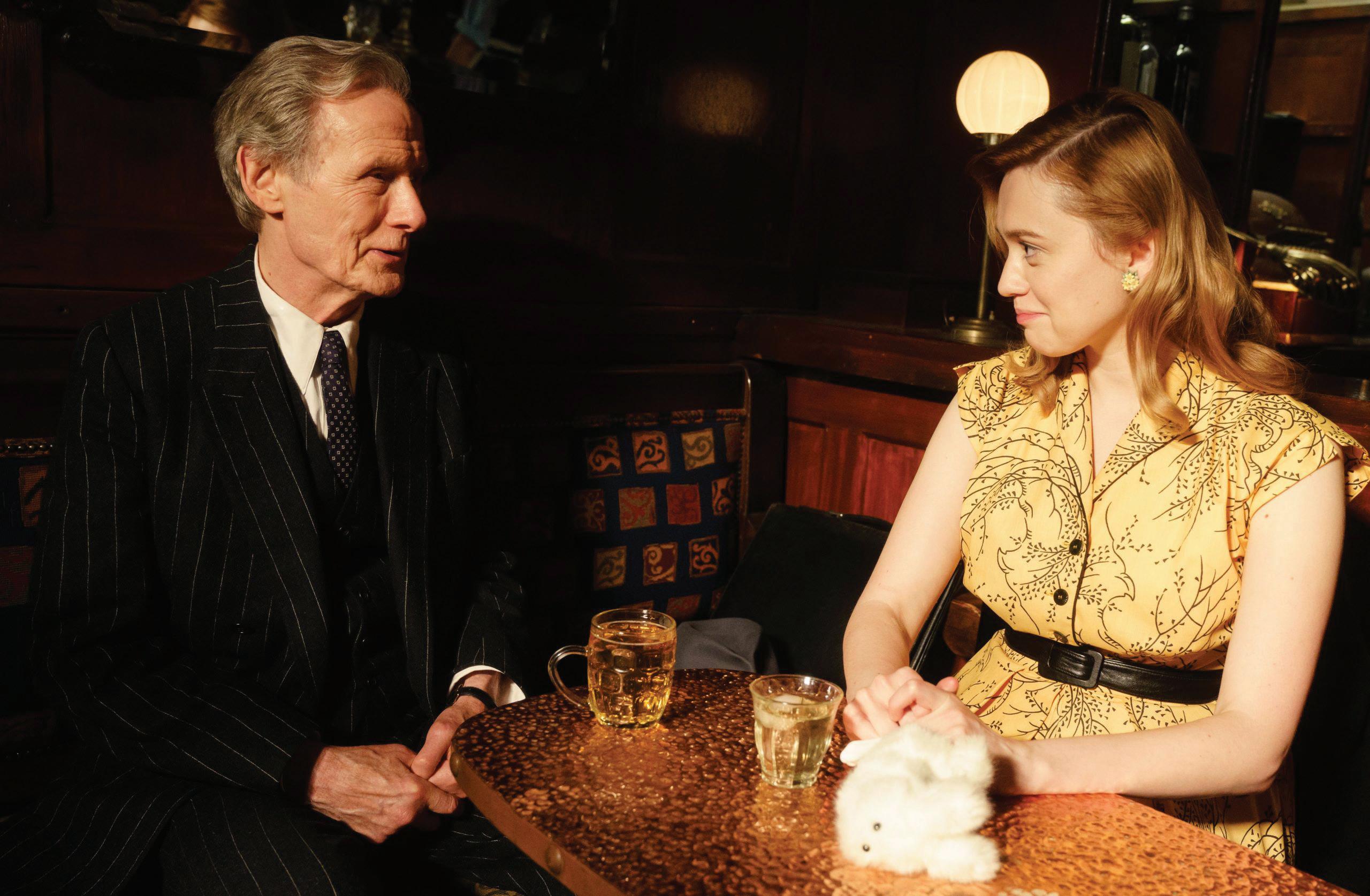
What separates something like Living from the countless hokey “feel-good” films about men in their twilight years learning to love life again — say, The Bucket List, or the recent Tom Hanks vehicle A Man Called Otto — is not just its period setting and remarkable lead performance, but a more complicated structure. As much as the story of Mr. Williams, if not even more so, Living is the story of those around him, drawn from memories, recollections and private moments that offer differing perspectives on a deceptively complicated individual. Recalling another Kurosawa classic, the second half of the film has an almost Rashomonlike structure, as Williams’ former colleagues come together, each with their own remembrances of the man. Living has an investigative air, though not a mystery in
the conventional sense; its characters experience the mental questioning and emotional detective work that can occur after the death of a loved one, as we sift through the pieces of their existence and reckon with the selves we can never truly know.
Despite the difference in context, Ishiguro’s screenplay is surprisingly faithful to its source, and at times maybe too reverent. There’s even a kind of visual faithfulness to the original. Like Ikiru, Living is filmed in a 1:33:1 aspect ratio, the industry standard in 1952 but a distinct artistic decision 70 years later. The slightly boxy frame, along with a richly tinted color palette, gives one the feeling of looking into a memory, as scenes from life are played out in a shadowbox.
Living never quite reaches the raw emotion of Kurosawa’s original film, keeping itself at a distance from the audience. Ikiru is a period piece only in retrospect, made as a contemporary film that reckoned with an ongoing project of natural soul-searching, while Living is purposefully set in the past, set at a deliberate remove. That might temper the intensity of the viewing experience, but Living isn’t an academic exercise in adaptation. Bill Nighy brings to life a character whose presence is felt by the film’s characters even after his death, and whose essence carries on with the audience once the lights come up.
46 NASHVILLE SCENE | JANUARY 26 – FEBRUARY 1, 2023 | nashvillescene.com
ARTS@NASHVILLESCENE.COM FILM LIVE AND LET DIE
EMAIL
Oliver Hermanus and Kazuo Ishiguro pay homage to Kurosawa with Living
LIVING PG-13, 102 MINUTES OPENING FRIDAY, JAN. 27, AT THE BELCOURT
BY ERICA CICCARONE


wo men steal babies from boxes and sell them on the black market in South Korea. When one baby’s mother confronts them, they let her in on the action. Under the direction of a different filmmaker, Broker could have been noir, a thriller, a bloody martial arts affair. But because it was written and directed by Japanese auteur Hirokazu Kore-eda, it contains an element that films by many other directors do not — grace.
Baby boxes provide places for people to anonymously deposit unwanted infants with no questions asked, and they exist all over the world — in fire stations, hospitals, churches and other buildings. (Here in the U.S., they’re often championed by anti-abortion activists as a solution to unwanted pregnancies.) The baby box in Broker is managed by a church, and, yes, two men intercept infants to sell them on the black market to desperate couples. But it’s clear by their second scene together that Ha Sang-hyeon (played by Parasite’s Song Kang-ho) and Dong-soo (Gang Dong-won) aren’t monsters. When one baby’s mother, Moon So-young (Lee Jieun), shows up at the church the morning after she abandons her child, the brokers don’t conceal the baby from her. They offer to let her in on the cut. What seems like a clear issue — human trafficking is not cute — quickly changes shape.
Dong-soo is still a young man, himself an orphan. When he visits the orphanage where he grew up, hordes of children greet him like he’s a movie star. But there’s something missing in him, at least in the beginning. At the orphanage, we meet 8-year-old Hae-jin (Im Seung-soo), a bubbly soccer fanatic who, orphanage employees say when he’s out of earshot, is far past adoption age. There are more children than will ever be adopted. But adopters only want
newborns and are stymied by a long bureaucratic process that leaves them willing to pay for a child on the black market.










Ha Sang-hyeon, Dong-soo, Moon So-young and baby Woo-sung are joined by the mischievous Haejin, and the five become an unlikely family — similar to the circumstances of Kore-eda’s nearly perfect 2018 Palme d’Or winner Shoplifters — as they meet couples who want to buy the baby. There are plenty of laughs — often at the expense of Ha Sang-hyeon, who never seems to mind. In the background, the context of Moon So-young’s decision plays out.
Song Kang-ho is among the greatest actors of his generation. As in Parasite, he is Broker’s patriarch, albeit a de facto one. He dotes upon Woo-sung with Big Dad Energy, clumsily but tenderly preparing the baby’s meals, dressing him in mismatched outfits and toting him from place to place in a carrier haphazardly strapped to his chest. As is often the case with Song Kang-ho’s characters, there is a lot more here than meets the eye.

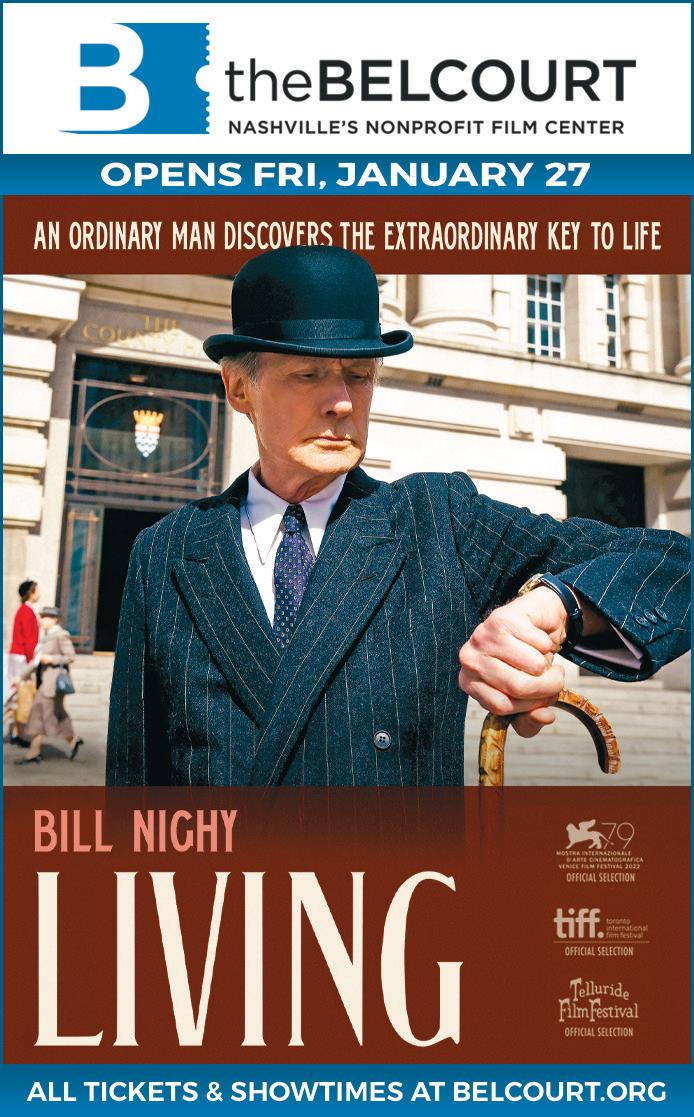
Throughout the journey, two cops — Soo-jin (Bae Doona) and Detective Lee (Lee Joo-young) — shadow them, hoping to make an arrest. Soo-jin is especially vehement in her disdain for the brokers, but she carries even more scorn for Moon Soyoung. How could a woman be so irresponsible, so callous? Moon So-young may be asking herself that same question. However, Lee Ji-eun’s breathtaking performance shows us a character who holds her cards close to her chest. For much of the film, we don’t know what motivates her, and her gradual unfolding is captivating.
The more we get to know these misfits and their world, the more morally ambiguous the concept of the baby box becomes. Unwanted pregnancies are common across cultures, and South Korea didn’t decriminalize abortion until 2021. Koreeda challenges us to be comfortable with moral ambiguity — to observe and react without judgment.



Kore-eda is a wonderful storyteller, and you’d be hard-pressed not to grow fond of these characters. While the mismatched family members of Broker have experienced trauma, they are not defined by it. Instead, they find grace in one another — and that transcends all else. Kore-eda leaves it up to the viewer to decide if they deserve it.
EMAIL ARTS@NASHVILLESCENE.COM

















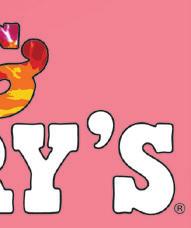



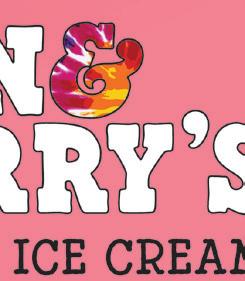






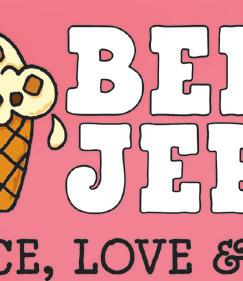







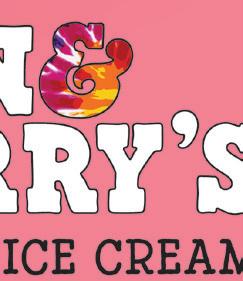










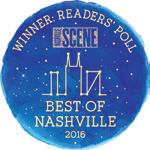

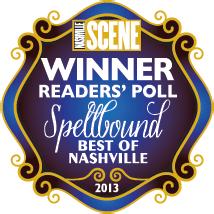
nashvillescene.com | JANUARY 26 – FEBRUARY 1, 2023 | NASHVILLE SCENE 47 (615) 255-2527 mortonplumbing.net Voted Best in Nashville 7x! QUALITY TO SING ABOUT! NEAL JOHNSTON STEVE AUSTIN BIRDIECONSTRUCTION.COM With over two decades experience working in Nashville we’d love to be part of your next addition, renovation, or custom build! 416A 21st South 615.321.2478 *CUST O M CAK E S EDAM OT RO D E R C ATERIN G LLA E V TNE T Y P ES * L O CALLY O DENW & EPO R A T ED * CU PS * CON E S * KAHS SE * NUS D AES * www.BenJerry.com NashvilleScene.com Find out what’s going on GOING BROKE Broker challenges us to be comfortable with moral ambiguity
T
FILM
R, 129 MINUTES; IN KOREAN WITH ENGLISH SUBTITLES OPENING
JAN. 27, AT THE BELCOURT
BROKER
FRIDAY,


















































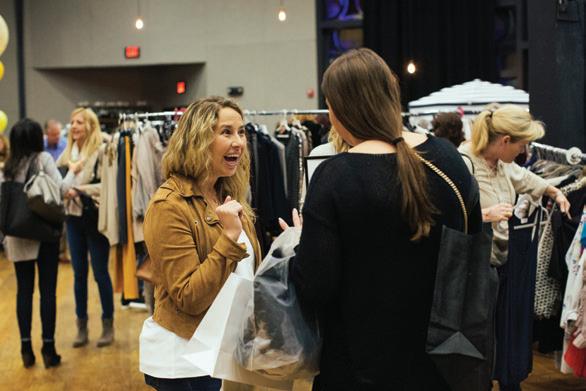









#FASHIONFORAFRACTION FASHIONFORAFRACTION.COM SATURDAY, FEBRUARY 11 11AM-2PM | CITY WINERY IN PARTNERSHIP WITH SHOP DEALS + STEALS FROM NASHVILLE’S FAVORITE BOUTIQUES! VIP + GENERAL ADMISSION TICKETS ON SALE NOW! SHOP DISCOUNTS FROM ANY OLD IRON | BANDED | CT GRACE, A BOUTIQUE LIVING OUT | YOUR CUSTOM LIFESTYLE ELLE GRAY | FAB’RIK FRANKLIN | FINNLEYS | FLASH & TRASH & A LITTLE BIT OF SASS K. MCCARTHY | RAD RAGS ONLINE | SVM BOUTIQUE | STYLE WITH A TWIST BOUTIQUE THE FRENCH SHOPPE | THE WILLING CRAB | CUTE & COMFY SHOES | RORY + CO | NEU FRANKLIN ROAD APPAREL AND MORE TO BE ANNOUNCED! a boutique warehouse sale CELEBRATE GALENTINE’S DAY! ENTER FOR YOUR CHANCE TO WIN A PAIR OF VIP TICKETS , BRUNCH FOR TWO AT CITY WINERY AND GIFTS FROM BANDED, RAD RAGS ONLINE, THE WILLING CRAB, RORY + CO, CUTE & COMFY SHOES AND MORE! SCAN TO ENTER
past puzzles, nytimes.com/ crosswords ($39.95 a year).


Read about and comment on each puzzle: nytimes.com/wordplay.










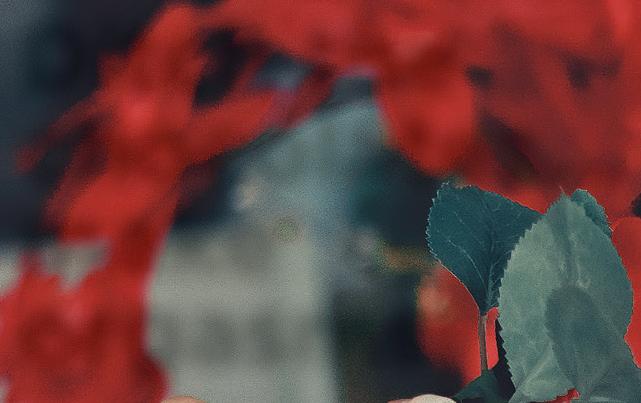




Crosswords for young solvers: nytimes.com/ studentcrosswords.

nashvillescene.com | JANUARY 26 – FEBRUARY 1, 2023 | NASHVILLE SCENE 49 MyPleasureStore.com *Offer Ends 2/10/2023. Cannot be combined with any other offer. Excludes Wowtech products. Discount Code: NSLUV25 25 White Bridge Rd Nashville, TN 37205 615-810-9625 Ditch the chocolates... make orgasms! $25 OFF YOUR PURCHASE OF $100 OR MORE. PRB_NS_QuarterB_011023.indd 1 1/4/23 1:15 PM $ 59 99 $ 59 $ 10 0 10 0 $ 99 $15 OFF $15 OFF $ 10 OFF $ 10 OFF FREE FREE ABS EXPERTS 3/30/2023. 3/30/2023. 3 30/2023 3/30/2023. 3/30/2023. $ 59 99 $ 59 99 $15 OFF $15 OFF $ 10 OFF $ 10 OFF FREE FREE $ 8 9 99 $ 8 9 99 ABS EXPERTS 1/4/2021. 1/4/2021. 1/4/2021. 1/4/2021. 1/4/2021. $ 59 99 $ 59 99 $15 OFF $15 OFF $ 10 OFF $ 10 OFF FREE FREE $ 8 9 99 $ 8 9 99 ABS EXPERTS 1/4/2021. 1/4/2021. 1/4/2021. 1/4/2021. 1/4/2021. $ 59 99 $ 59 99 $15 OFF $15 OFF $ 10 OFF $ 10 OFF FREE FREE $ 8 9 99 $ 8 9 99 ABS EXPERTS 1/4/2021. 1/4/2021. 1/4/2021. 1/4/2021. 1/4/2021. $ 59 99 $ 59 99 $15 OFF $15 OFF $ 10 OFF $ 10 OFF FREE FREE $ 8 9 99 $ 8 9 99 ABS EXPERTS 1/4/2021. 1/4/2021. 1/4/2021. 1/4/2021. 1/4/2021. $ 59 99 $ 59 99 $15 OFF $15 OFF $ 10 OFF $ 10 OFF FREE FREE $ 8 9 99 $ 8 9 99 ABS EXPERTS 1/4/2021. 1/4/2021. 1/4/2021. 1/4/2021. 1/4/2021. $ 59 99 $ 59 99 $15 OFF $15 OFF $ 10 OFF $ 10 OFF FREE FREE $ 8 9 99 $ 8 9 99 ABS EXPERTS 1/4/2021. 1/4/2021. 1/4/2021. 1/4/2021. 1/4/2021. Columbia 1006 Carmack Blvd Columbia TN 931-398-3350 ACROSS 1 Whom Abraham nearly sacrificed 6 Softball stat 9 Concrete example? 13 Sykes of “The Upshaws” 14 Something to toss but not throw away 15 Org. in 2016’s “Hidden Figures” 16 What smoke coming out of the ears may signal in a cartoon 17 Investments that can’t be recovered 19 Pedometer unit 20 [Correct!] 21 Cheri once of “S.N.L.” 22 Back-exposing top 24 Show, briefly 26 First exit: Milk containers • Second exit: Rebounded, in billiards • Third exit: Wheeled (away) 27 Tuna that’s often seared 28 “Later!” 30 Creative, in a way 32 Dapper ___, iconic hip-hop couturier 33 Stick with a soft tip 34 -speak 35 Dinosaur bone preserver 37 John ___ 39 June gift recipient 42 Blight victim 45 Some history listings 48 Thousandth of a gig 50 One going to court 52 The Powerpuff girls, e.g. 53 Dude 54 First exit: Salad bar bowlful • Second exit: French watchmaker • Third exit: Thanksgiving role 55 Ticket specification 57 English king called “the Great” 59 Maker of the 2600 game console 61 Hard-boiled film genre 63 Bun 64 Skip a round 66 Funny O’Donnell 67 Pretzel feature 68 Has a role 69 Big sportswear brand 70 Knights, e.g. 71 French beverage 72 Chinwags DOWN 1 Cry after getting fooled 2 Top of the holiday season? 3 Name derived from the Greek for “messenger” 4 Very capable 5 First exit: Floor covers Second exit: Addition signs? Third exit: Checking the IDs of 6 Indirect path taken 12 times in this puzzle 7 ___-watch 8 Sign 9 Obnoxious sort 10 Cutting beams 11 One way to be led 12 Universal ___ income 14 Forensic inits. 18 Molson’s partner in beer 20 No-win situation 23 “We come in peace” speakers, in brief 25 Follower of Fannie, Ginnie or Sallie 29 Little bit 31 California congressman ___ Lieu 36 Crank (up) 38 Go wrong 40 Those who consume it become immortal, per myth 41 Broken-down 43 Admit 44 Noisy scan, for short 46 One avoiding eye contact, maybe 47 Note that sounds like a music genre 49 Unholy 50 Course in
you
51 Delivery specialist? 54
56
58
60 Goes
62
65 “Let’s ___!” 66
which
might learn “cave canem”
Winery supply
Methuselah’s old man
First class, informally?
bad
“___ time”
First exit: Writer Lewis • Second exit: Santana of Santana Third exit: Dead meat Online subscriptions: Today’s puzzle and more than 9,000
EDITED BY WILL SHORTZ CROSSWORD NO. 1222 ANSWER
E E L I N G O S L O I D E D O R O M E O P H E W N I N A N E W P O T A T O E S L E T T S A N S C L I O M E D I A A D O C H I C K E N S T O C K G E T B E A T W I N W E E O R E A D D I E T A N D Y H E A V Y C R E A M B E S S L I E U B I B L E U N A P O E D E E D B O X S A U T E E D L E E K S Q V C R C C A R U T N E C R E E I T I S V I C H Y S S O I S E D E N T A C R E B U L B E D E D G Y L E E R Y E A S T S PUZZLE BY DAVID STEINBERG 1 2 3 4 5 6 7 8 9 10 11 12 13 14 15 16 17 18 19 20 21 22 23 24 25 26 27 28 29 30 31 32 33 34 35 36 37 38 39 40 41 42 43 44 45 46 47 48 49 50 51 52 53 54 55 56 57 58 59 60 61 62 63 64 65 66 67 68 69 70 71 72
TO PREVIOUS PUZZLE
For more info call 1.800.470.4723 Or visit our website: www.diplomaathome.com
American Residential Warranty covers ALL MAJOR SYSTEMS AND APPLIANCES. 30 DAY RISK FREE/ $100 OFF POPULAR PLANS. Call 855-731-4403 (AAN CAN)
Call for a quote for professional cleanup & maintain the value of your home! Set an appt today!
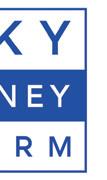




Call 833-664-1530 (AAN CAN)
CASH FOR CARS!
We buy all cars! Junk, high-end, totaled –it doesn’t matter! Get free towing and same day cash! NEWER MODELS too!
Call 866-535-9689 (AAN CAN)
DISH TV $64.99
For 190 Channels + $14.95 High Speed Internet. Free Installation, Smart HD DVR Included, Free Voice Remote. Some restrictions apply.
Promo Expires 1/21/23 1-866-566-1815 (AAN CAN)
DONATE YOUR VEHICLE to fund the SEARCH FOR MISSING CHILDREN.
FAST FREE PICKUP. 24 hour response. Running or not. Maximum Tax Deduction and No Emission Test Required!
Call 24/7: Call 855-504-1540 (AAN CAN)
BATH & SHOWER UPDATES in
Credit Card Debt Relief!
Reduce payment by up to 50%! Get one LOW affordable payment/ month. Reduce interest. Stop calls. FREE noobligation consultation Call 1-855-761-1456 (AAN CAN)
LONG DISTANCE MOVING
Call today for a FREE QUOTE from America’s Most Trusted Interstate Movers. Let us take the stress out of moving!
Internet Now Available!
Get GotW3 with lightning fast speeds plus take your service with you when you travel! As low as $109.99/mo! 1-866-571-1325 (AAN CAN)
866-243-5931.
8am-6pm
Spectrum Internet as low as $29.99, call to see if you qualify for ACP and free internet. No Credit Check. Call Now! 833-955-0905 (AAN CAN)
They do not remodel entire bathrooms but update bathtubs with new liners for safe bathing and showering. They specialize in grab bars, non-slip surfaces and shower seats. All updates are completed in one day. Call 866-531-2432 (AAN CAN)
ONE DAY!
Affordable pricesNo payments for 18 months! Lifetime warranty & professional installs. Senior & Military Discounts available. Call 1-866-370-2939 (AAN CAN)
Call now to speak to one of our Quality Relocation Specialists: Call 855-787-4471 (AAN CAN)

BCI Walk In Tubs are now on SALE!
Be one of the first 50 callers and save $1,500! CALL 844-514-0123 for a free in-home consultation. (AAN CAN)
DirecTV Satellite TV Service
Starting at $74.99/month!
Free Installation! 160+ channels available. Call Now to Get the Most Sports & Entertainment on TV! 877-310-2472 (AAN CAN)
50 NASHVILLE SCENE | JANUARY 26, 2023 - FEBRUARY 1, 2023 | nashvillescene.com R e n t a l S c e n e M a r k e t p l a c e Welcome to 2100 Acklen Flats 2100 Acklen Ave, Nashville TN 37212 | 2100acklenflats.com | 615.499-5979 Local Attractions: Vanderbilt University and Hospital · Belmont University · Hillsboro Village Music Row Neighborhood Dining and Drinks: Double Dogs Restaurant Hopdoddy Burger Bar Ruby Sunshine Biscuit Love Belcourt Taps McDougal’s Chicken Fingers and Wings Nicoletto’s Italian Kitchen Fido Pancake Pantry Enjoy the outdoors: St. Bernard Park Fannie Mae Dees Park Centennial Park Centennial Dog Park Best places nearby to see a show: Belcourt Theatre The Station Inn The Basement Ryman Auditorium Favorite local neighborhood bar: Double Dogs Restaurant Best local family outing: Adventure Science Center Your new home amenities: Green Pet Area Controlled access parking garage Outside lounge area with gas grill and TV Washer and Dryer in each apartment FEATURED
Call the Rental Scene property you’re interested in and mention this ad to find out about a special promotion for Scene Readers Your Neighborhood Call 615-425-2500 for FREE Consultation Rocky McElhaney Law Firm INJURY AUTO ACCIDENTS WRONGFUL DEATH TRACTOR TRAILER ACCIDENTS Voted Best Attorney in Nashville
APARTMENT LIVING
BathWraps is looking for calls from homeowners with older home who are looking for a quick safety update.
as little as
4G LTE Home
SERVICES EARN YOUR HS DIPLOMA TODAY
Advertise on the Backpage! It’s like little billboards right in front of you! Contact: classifieds@ fwpublishing.com
Water Damage to Your Home?
Duty & Military Veterans & Family!
Attention Active
earn your
CTI!
Begin a new career and
Degree at
Online Computer & Medical training available for Veterans & Families!
Covered
Repairs
To learn more, call
(M-F
ET). Computer with internet is required Don’t Pay For
Home
Again!






nashvillescene.com | JANUARY 26, 2023 - FEBRUARY 1, 2023 | NASHVILLE SCENE 51 R e n t a l S c e n e Colony House 1510 Huntington Drive Nashville, TN 37130 liveatcolonyhouse.com | 844.942.3176 4 floor plans The James 1 bed / 1 bath 708 sq. ft from $1360-2026 The Washington 2 bed / 1.5 bath 1029 sq. ft. from $1500-2202 The Franklin 2 bed / 2 bath 908-1019 sq. ft. from $1505-2258 The Lincoln 3 bed / 2.5 bath 1408-1458 sq. ft. from $1719-2557 Cottages at Drakes Creek 204 Safe Harbor Drive Goodlettsville, TN 37072 cottagesatdrakescreek.com | 615.606.2422 2 floor plans 1 bed / 1 bath 576 sq ft $1,096-1,115 2 bed / 1 bath 864 sq ft. $1,324-1,347 Studio / 1 bath 517 sq ft starting at $1742 1 bed / 1 bath 700 sq ft starting at $1914 2 bed / 2 bath 1036 - 1215 sq ft starting at $2008 2100 Acklen Flats 2100 Acklen Ave, Nashville, TN 37212 2100acklenflats.com | 615.499.5979 12 floor plans Southaven at Commonwealth 100 John Green Place, Spring Hill, TN 37174 southavenatcommonwealth.com | 855.646.0047 The Jackson 1 Bed / 1 bath 958 sq ft from $1400 The Harper 2 Beds / 2 bath 1265 sq ft from $1700 The Hudson 3 Bed / 2 bath 1429 sq ft from $1950 3 floor plans Brighton Valley 500 BrooksBoro Terrace, Nashville, TN 37217 brightonvalley.net | 855.944.6605 1 Bedroom/1 bath 800 sq feet from $1360 2 Bedrooms/ 2 baths 1100 sq feet from $1490 3 Bedrooms/ 2 baths 1350 sq feet from $1900 3 floor plans Gazebo Apartments 141 Neese Drive Nashville TN 37211 gazeboapts.com | 615.551.3832 1 Bed / 1 Bath 756 sq ft from $1,119 + 2 Bed / 1.5 Bath - 2 Bath 1,047 – 1,098 sq ft from $1,299 + 3 Bed / 2 Bath 1201 sq ft from $1,399 + 5 floor plans To advertise your property available for lease, contact Keith Wright at 615-557-4788 or kwright@fwpublishing.com


















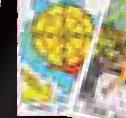
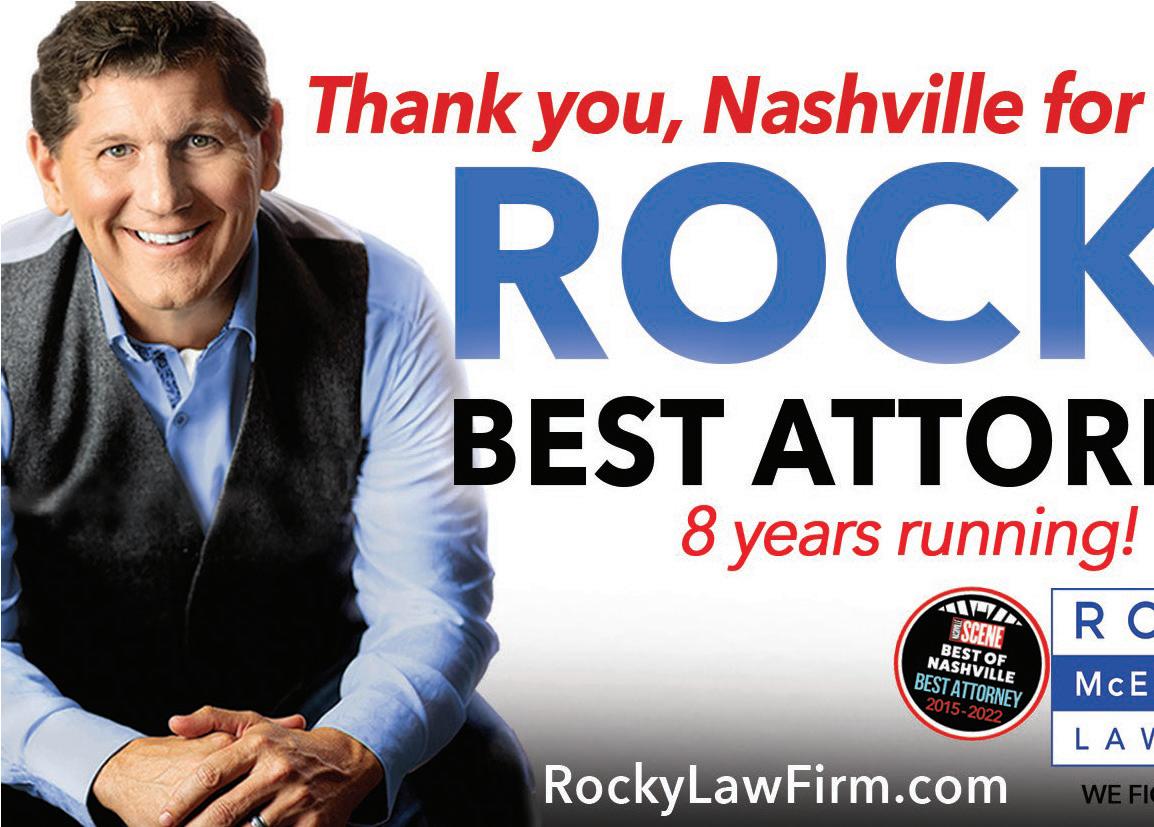




















52 NASHVILLE SCENE | JANUARY 26, 2023 - FEBRUARY 1, 2023 | nashvillescene.com Get a FREE RECIPE from Christie C kie Co.! SCAN FOR YOUR FREE RECIPE NEW STUDENT SPECIAL! $33 for 21 days of unlimited Yoga! 4920 Charlotte Avenue | Nashville 615.678.1374 | hotyoganashville.co ERROR 404 nothing to do calendar.nashvillescene.com 615-915-0515 284 White Bridge Rd MUSIC CITY PSYCHIC New Year’s Predictions New Year’s Predictions s Predictions Learn what 2023 has in store! Learn what 2023 has in store! 3415 West End Ave Nashville woodlandstennessee.com 615.463.3005 7 Days Lunch Buffet Vegan | Kosher | Gluten Free 106 29TH AVE N NASHVILLE hyderabadhousenashville.com 615.236.9436 LUNCH7DAYSBUFFET


























 BY CONNOR DARYANI
BY CONNOR DARYANI
 BY ELI MOTYCKA
BY ELI MOTYCKA

 BY LAURA HUTSON HUNTER
BY LAURA HUTSON HUNTER



 BY HANNAH HERNER
BY HANNAH HERNER


































































































 BY AMY STUMPFL
BY AMY STUMPFL

























































































































 JASON VERSTEGEN
JASON VERSTEGEN











































































































































































































































 BY MARGARET LITTMAN
BY MARGARET LITTMAN






































































































































































 BY STEPHEN TRAGESER
BY STEPHEN TRAGESER















































































































































































